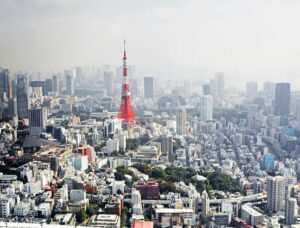[circuit type=review circuit_id=”9647″]
Many travelers say that a stay at the Park Hyatt Kyoto is a once-in-a-lifetime treat. Maybe so, but after visiting in March, I hope fate brings me back to this enchanting spot soon.
The hotel was born out of a collaboration between renowned 19th-century teahouse and kaiseki multicourse restaurant Kyoyamato, Japanese construction company Takenaka and Hyatt. This initiative proves that it’s possible to build a brand-new hotel that seamlessly blends with a heritage cityscape and hews to the time-honored traditions of the region.
It certainly earns its place on our list of the best Park Hyatts in the world thanks to its extraordinary character and unique location; it’s slotted into the hillside of the historic Higashiyama neighborhood. Known for its narrow alleyways and winding stone staircases, there are Instagram-worthy vistas everywhere you look.
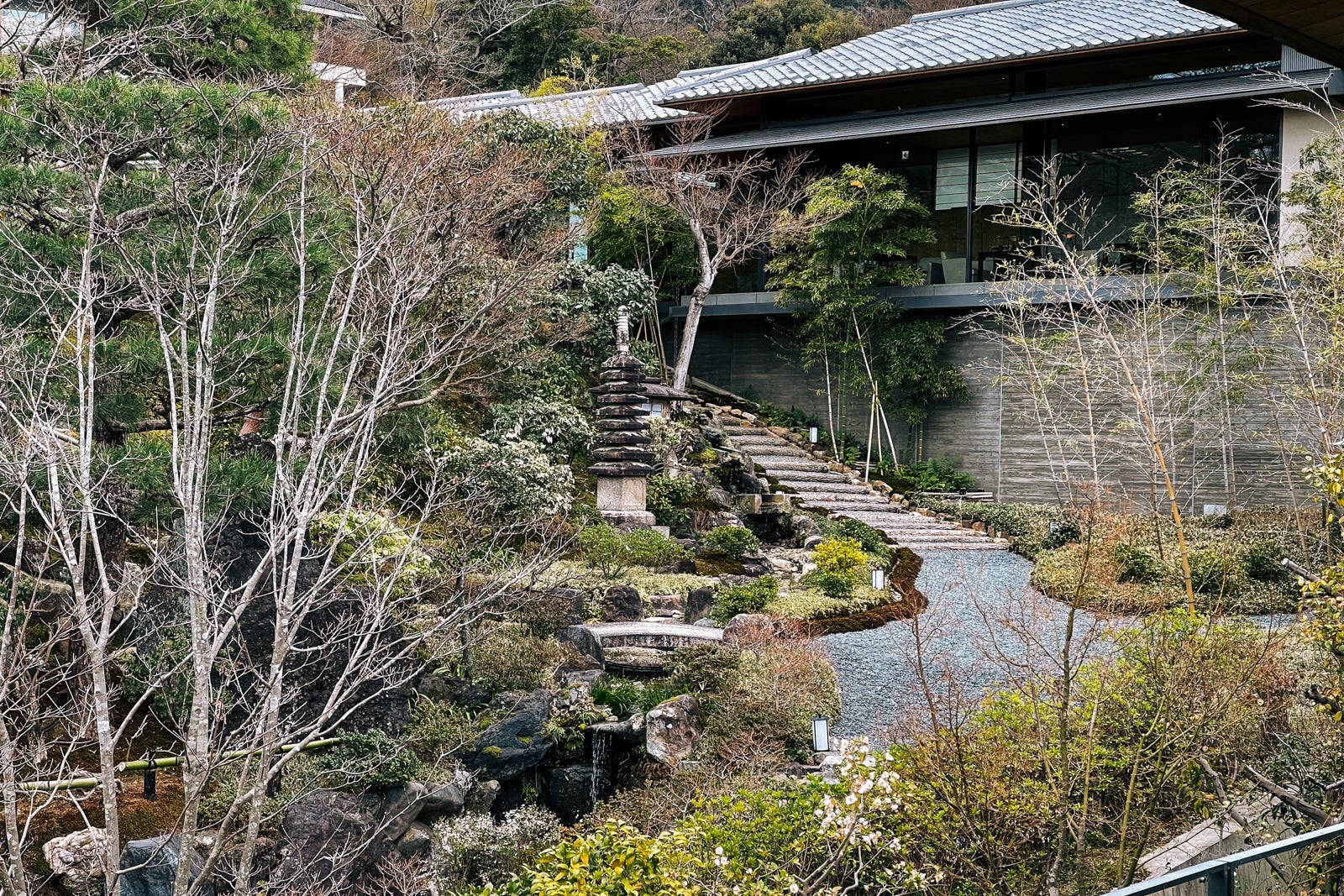
The hotel, with its mukuri tile roofs and Japanese gardens, doesn’t feel out of place among the traditional Japanese shops, townhouses and storefronts. However, it also offers plenty of modern conveniences. The Jacuzzi and separate steam shower sealed into their own compartment in our suite’s master bath is something we’ll talk about forever.
Service struck the right balance of authenticity and old-fashioned excellence, and the staff seemed able to navigate nearly any situation. Here’s everything else you need to know about the Park Hyatt Kyoto and why it’s so worth a stay.
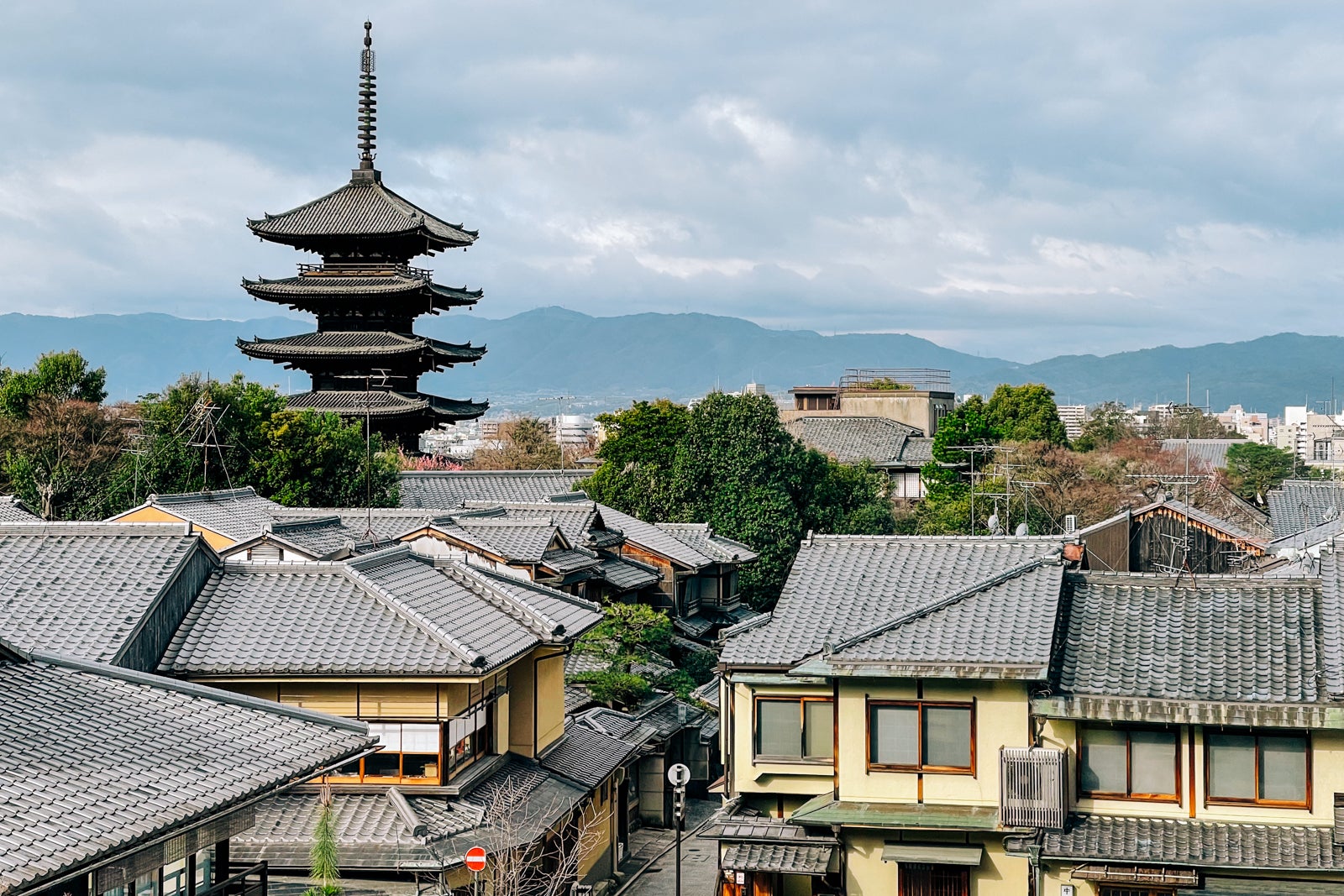
Getting there
Most travelers arrive at Kyoto Station via the Shinkansen bullet train. We took the Nozomi (fastest train) from Tokyo. The journey lasted two hours and 15 minutes; I paid 15,400 yen (about $98) per person, one-way for first-class reserved seats. (We bought tickets on the smartEX app.)
Pro tip: If you or anyone in your party suffers from motion sickness, pack some ginger chews, peppermint or meclizine/Bonine/Dramamine. The train races along the track at about 185 mph, and the curves can be tough for some people. The train was also very warm, so don’t overdress.
When you exit the train, follow signs to the taxi stand; then, take a quick 11-minute ride (about $15) to the Higashiyama Ward, home of the Park Hyatt Kyoto.
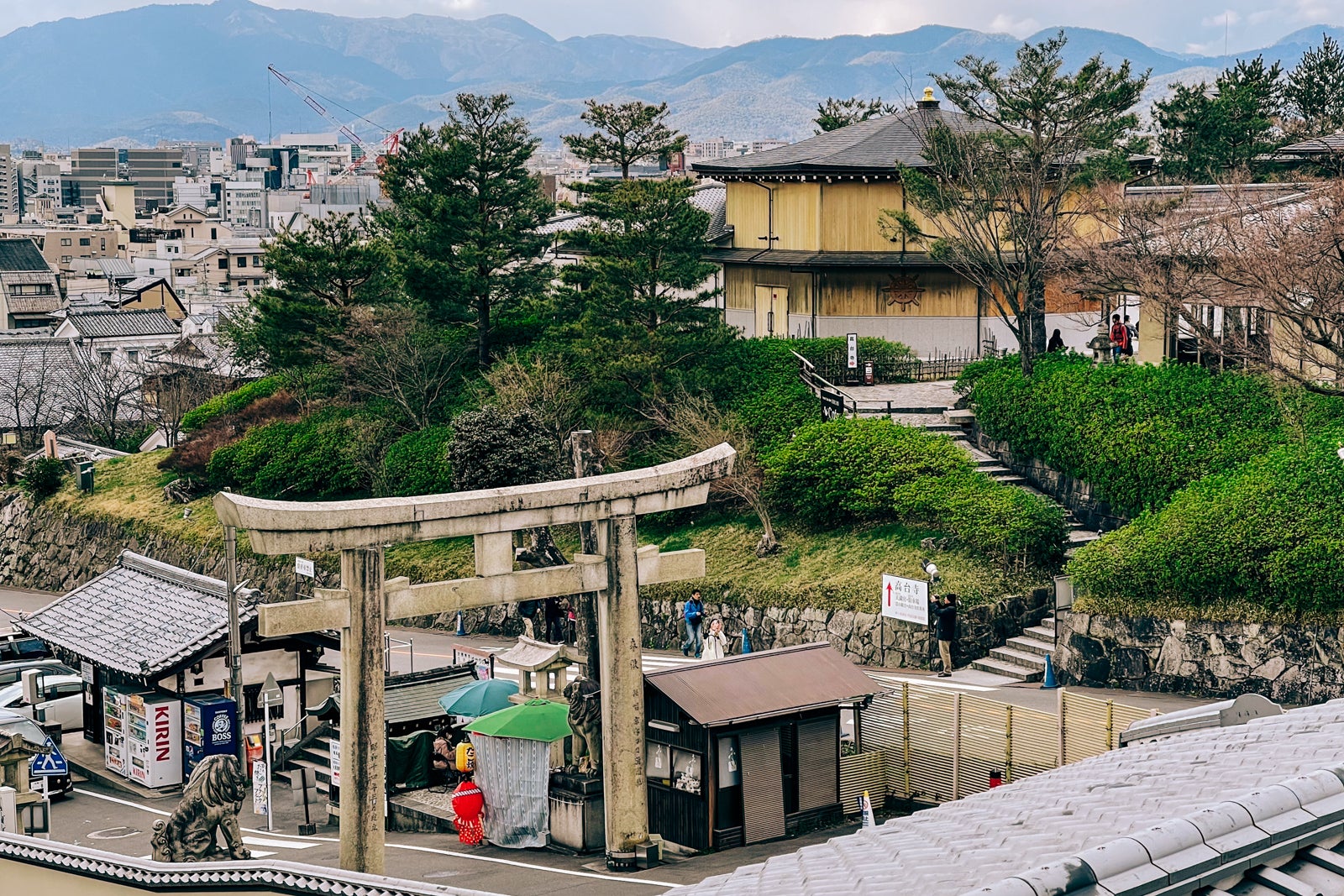
Booking details
The Park Hyatt Kyoto is an outsized value for redeeming points, but you must book early — especially if you hope to successfully apply a Hyatt upgrade certificate for a Park Suite to your stay. For my early March 2024 stay, I booked a standard king room 12 months in advance at a cost of 35,000 World of Hyatt points per night. (Chase Ultimate Rewards points transfer to your Hyatt account instantly on a 1:1 basis.)
If you have your mind set on visiting in the spring for cherry blossom season, you really have to be on top of booking any hotel in Kyoto as soon as the reservation window opens (that’s 13 months in the case of Hyatt properties).
If paying cash, a standard king room with a garden view goes for around 365,000 yen ($2,390) per night during peak season. TPG values World of Hyatt points at 1.7 cents each, so laying out 35,000 points per night for a standard room is equivalent to paying $595. In this scenario, you’re actually getting closer to 6.7 cents per point, which is a fantastic redemption value.
It’s this kind of value that keeps me a loyal World of Hyatt member, and the reason why two of my favorite credit cards are the World of Hyatt Card Credit Card and World of Hyatt Business Credit Card. However, if you’re not working toward World of Hyatt elite status and only care about points, your better bet is probably the Chase Sapphire Preferred® Card or Chase Sapphire Reserve® since you can transfer Ultimate Rewards points to Hyatt so easily.
Our trip commemorated 30 years of marriage, so we decided to spring for a paid upgrade to a premium suite. It was 180,000 yen ($1,180) per night to upgrade to Ninenzaka House (see the Suite section below for details and photos of that suite). The going cash price for that suite was about $2,600 per night for our dates.
If you don’t book directly with Hyatt, Park Hyatt Kyoto is also part of American Express’ Fine Hotels + Resorts. That’s ideal for anyone holding The Platinum Card® from American Express or The Business Platinum Card® from American Express.
Book via the Amex travel website for complimentary perks like availability-based upgrades, up to a $100 credit to use on-property during your stay for things like drinks or meals, complimentary daily breakfast for two and guaranteed late checkout.
If you don’t have World of Hyatt points or the Amex Platinum card, book via a Hyatt Prive travel agent. These rates offer similar benefits to the Fine Hotels + Resorts program. You’ll receive all your World of Hyatt perks plus benefits, including complimentary breakfast, a one-category room upgrade when available, early check-in (when available), late checkout (when available) and a food and beverage credit.
Standout features
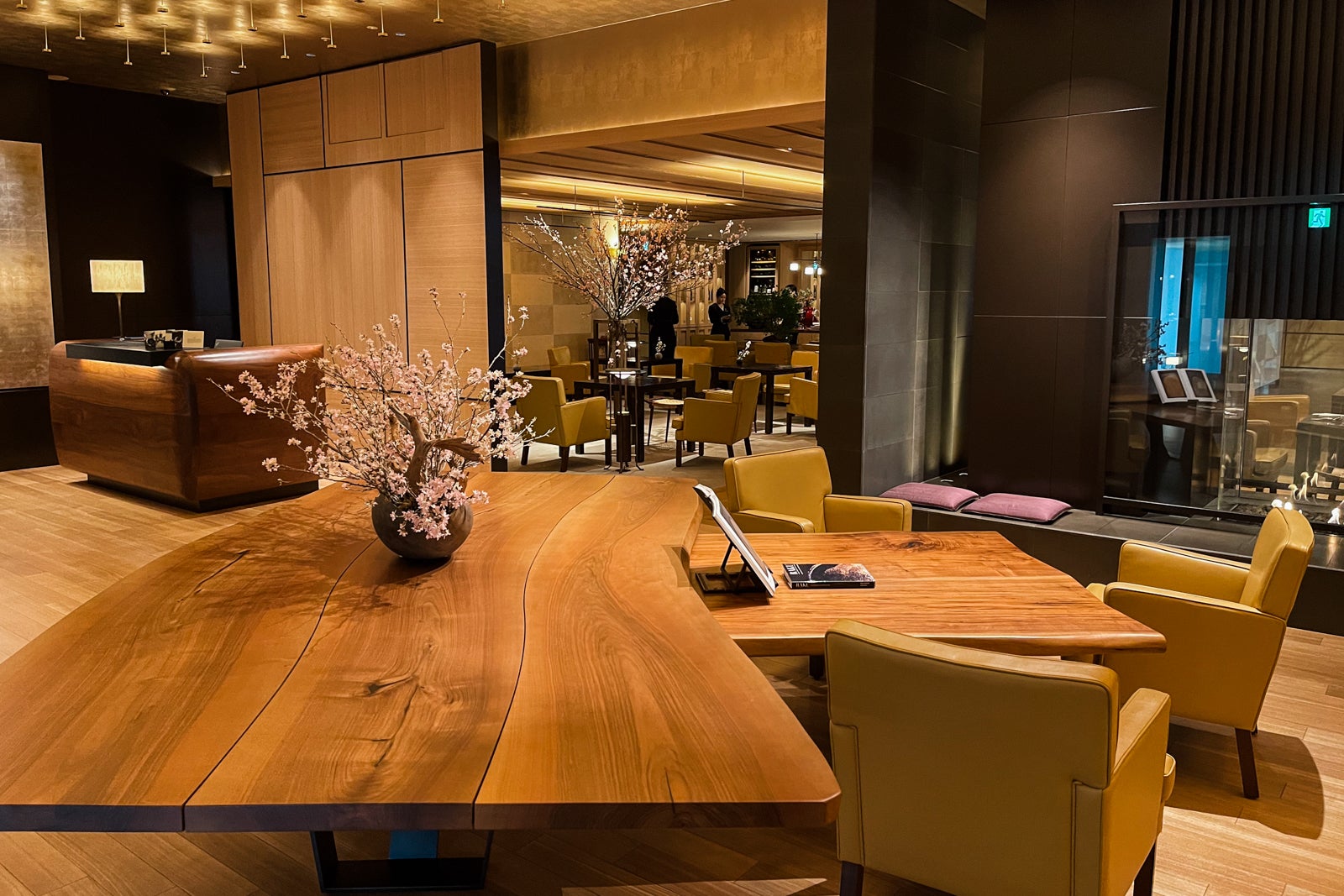
- Phenomenal public spaces make you feel thoroughly at home from the moment you walk past the Japanese garden at the entrance and into the dimly lit lobby with its roaring fireplaces.
- Staff members have perfected their craft and make you wish you could live full-time at the Park Hyatt Kyoto.
- It offers a not-to-be-missed gourmet teppanyaki experience from a dining room with incredible views of Yasaka Pagoda and much of Kyoto.
Drawbacks
- If you don’t book with points, a stay at Park Hyatt Kyoto can be pricey (more than $2,000 per night in high season).
- We encountered a bit of a language barrier in the casual dining room (Kyoto Bistro). It wasn’t a huge deal, but it’s something to be aware of. If you have dietary requirements, learn the words in Japanese or translate them on a card to show your waiter.
- The area of Kyoto around the hotel is not easy to navigate if you have mobility challenges. I brought a cane, which I needed to more easily manage long, steep staircases with no handrails.
The vibe
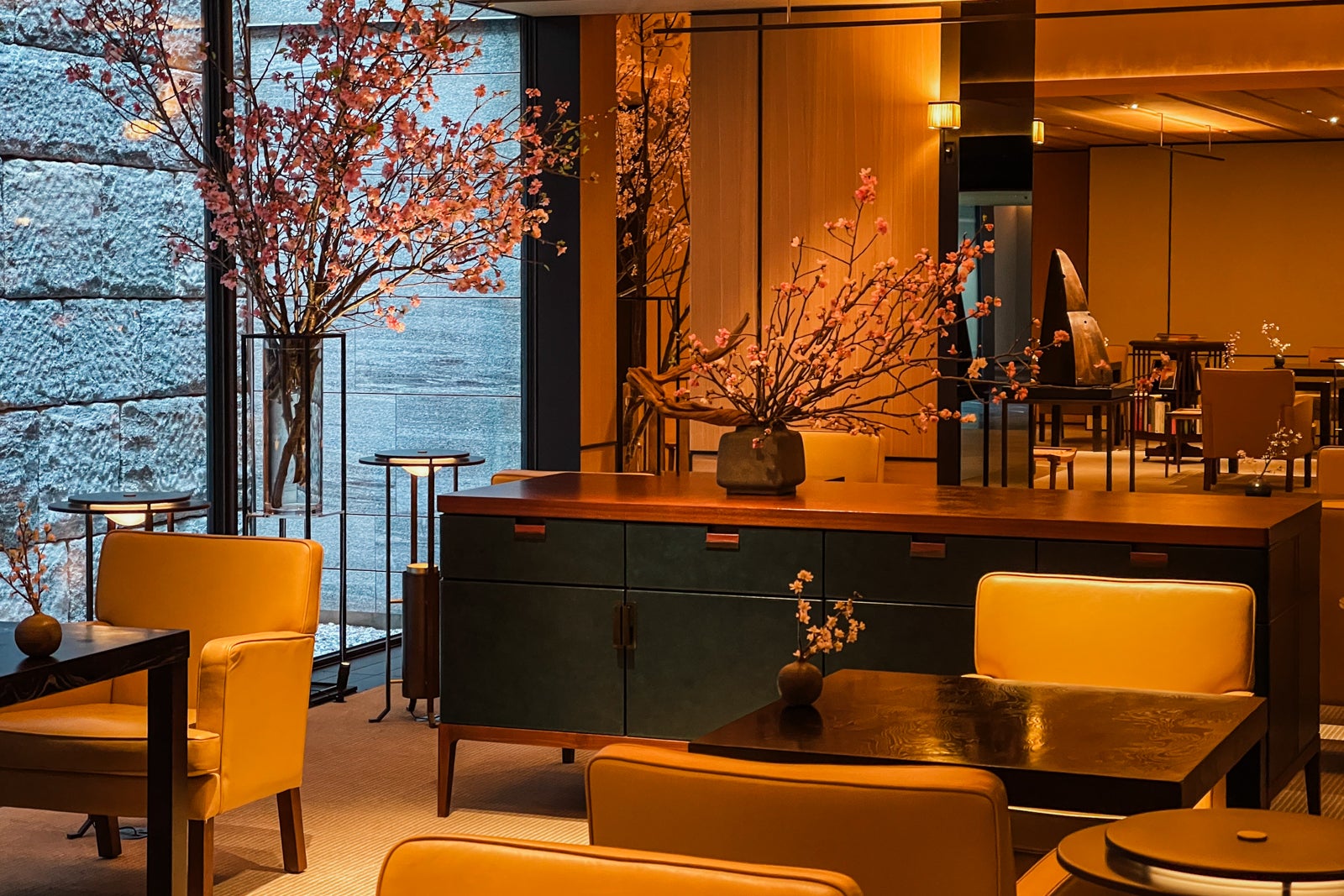
To describe the hotel’s vibe, I need to tell you about a Japanese architectural concept summed up as “inward depth and interval.” It’s executed flawlessly at the Park Hyatt Kyoto. Guests are meant to shift through a sequence of quiet spaces as they transition from the busy tourist district to the comfort of their guest room or suite.
Sheer rock walls flanked by cedar trees are the focal point of the hotel’s entrance. A dimly lit walkway leads guests past the Yasuo Kitayama-designed Pritzker Garden on the right with 31 300-million-year-old stones from Colorado (a gift from the Aspen home of Hyatt executive chairman Thomas J. Pritzker).
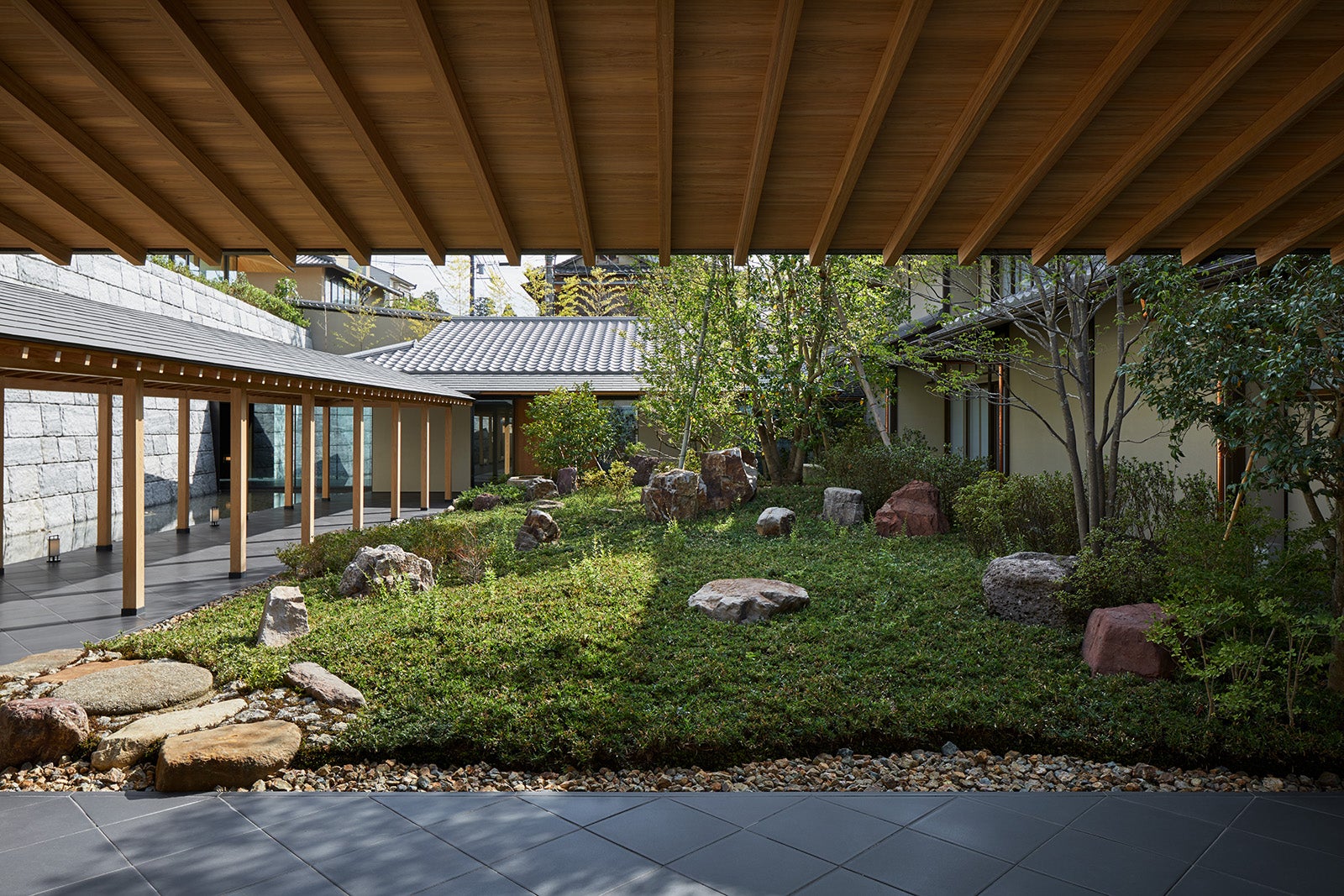
A covered walkway spans from the driveway entrance to reception, with the garden on the right and a shallow pond filled with river stones on the left.
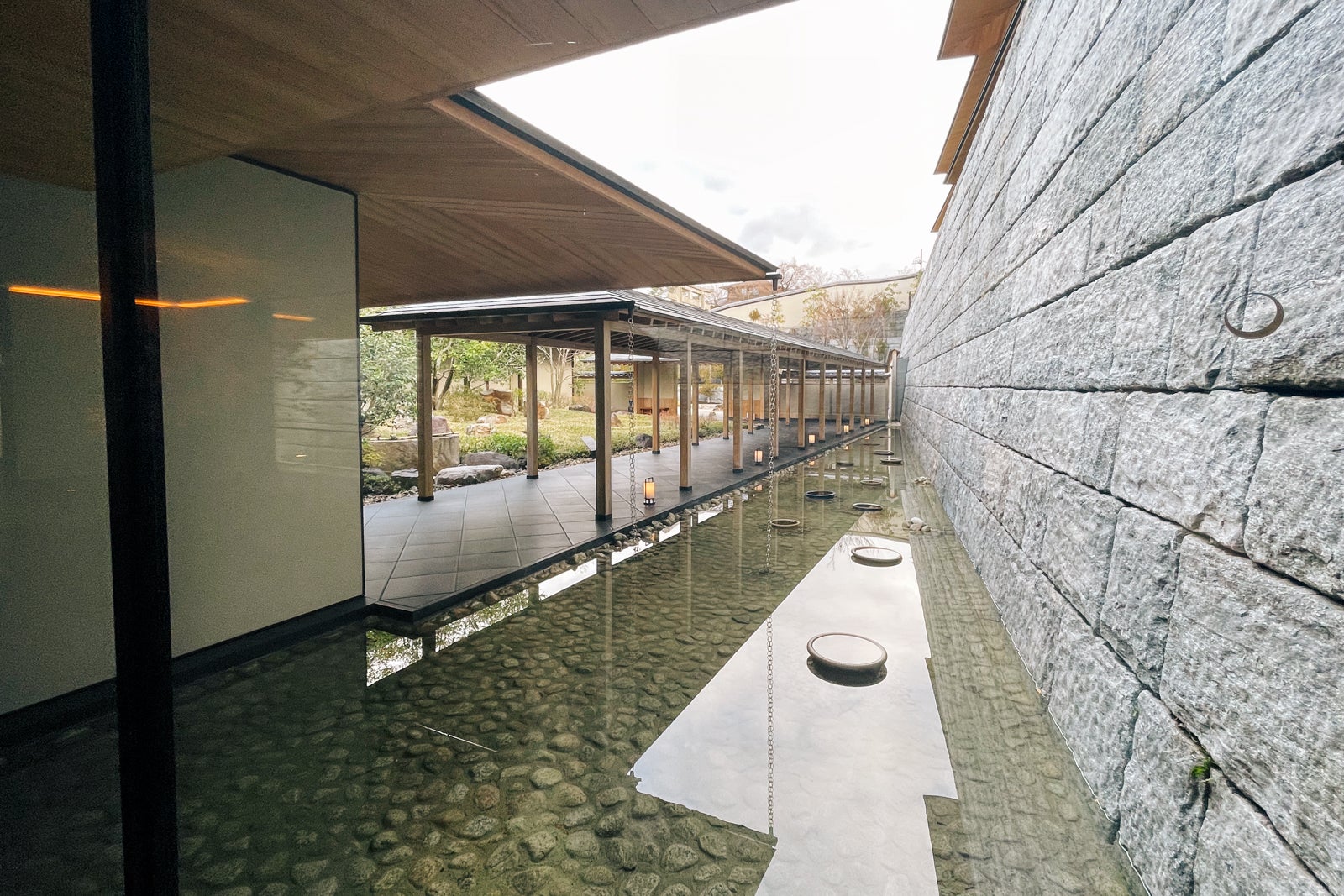
Next, guests trigger an automated door, where the transition from outdoors to indoors begins. In one direction is the hotel’s casual restaurant, Kyoto Bistro, and an elevator to some guest rooms; the lobby and additional guest rooms are in the other direction.
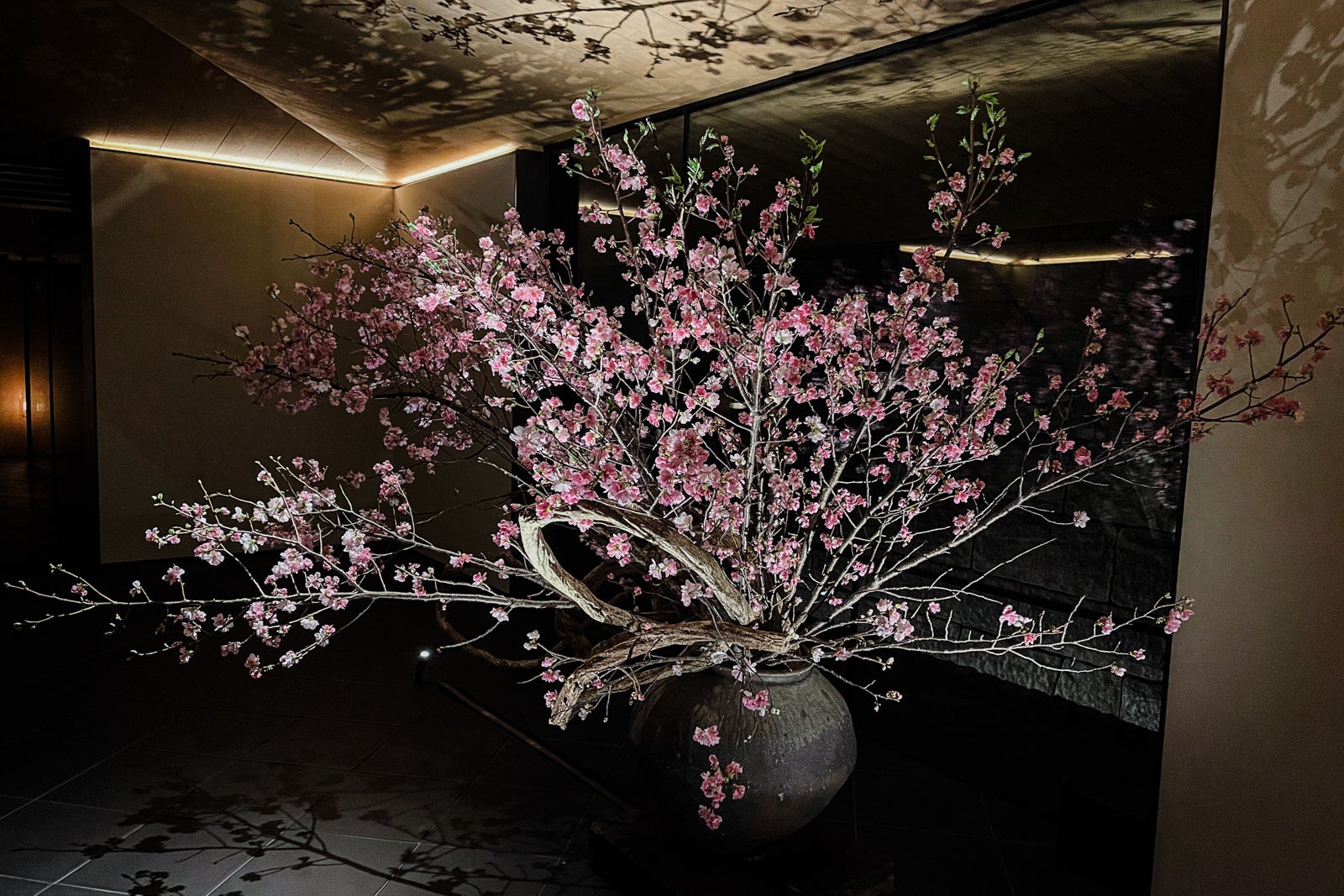
Once inside the hotel, guests turn left to walk along an indoor/outdoor hallway that leads to the lobby, The Living Room and Wine Bar.
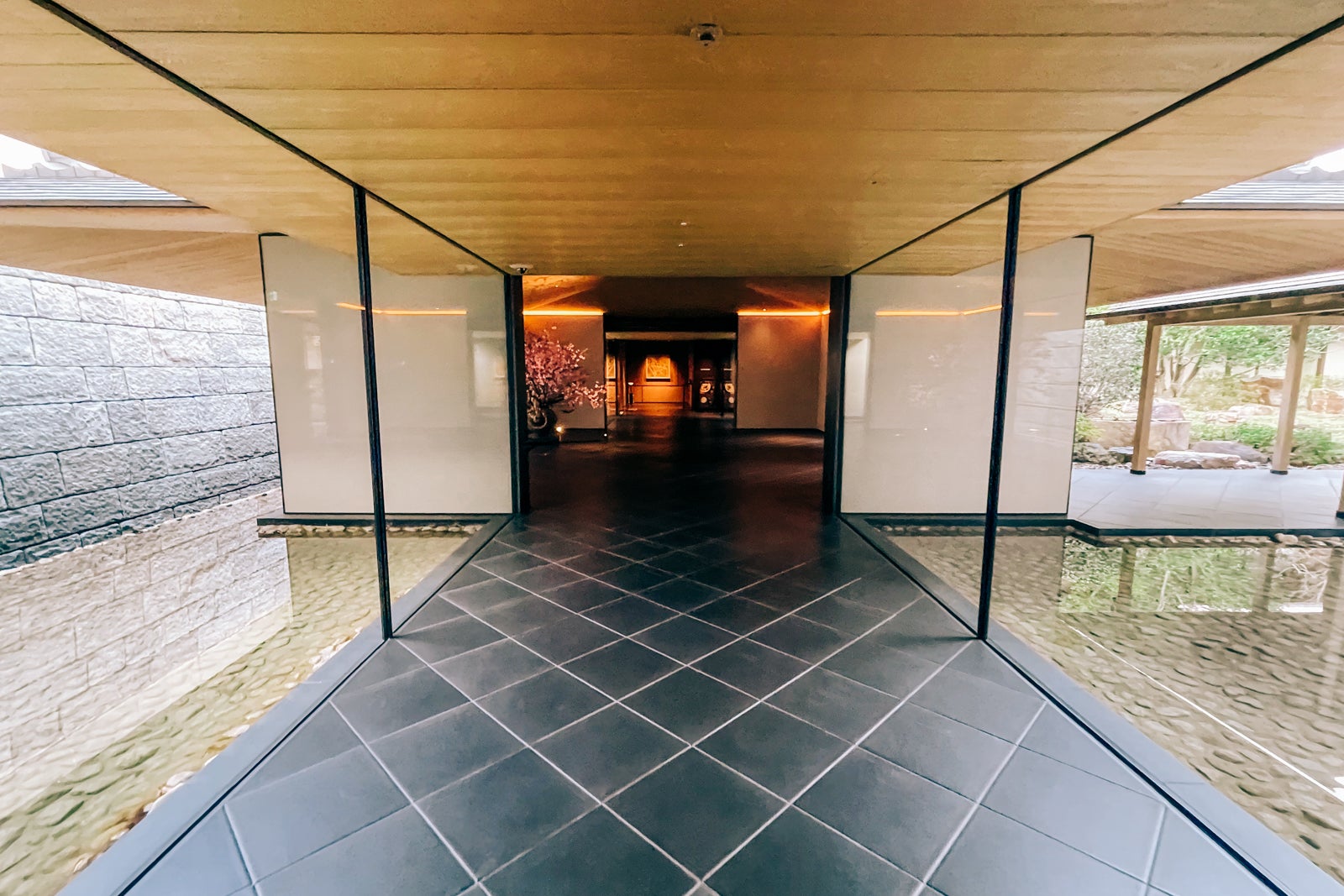
The Living Room across from the front desk and concierge is also dimly lit and accented by waves of light from strategically placed glass-fronted fireplaces. It’s here where your mind is coaxed into thinking you are visiting the home of a Japanese friend.
As you walk farther into this oasis, you pass the dining area where afternoon tea is served. Natural light filters in from a wall of windows. The elevator to guest rooms is hidden around the corner.
The first time I stepped off the elevator on the way to my suite, I was struck by how quiet and dark the hallway was. The area by the elevator was also cordoned off by automated doors that created a bit of an “airlock” feel. Our suite was at the very end of the hallway, and we walked past several lantern-style lights that emitted warm amber tones along the way.
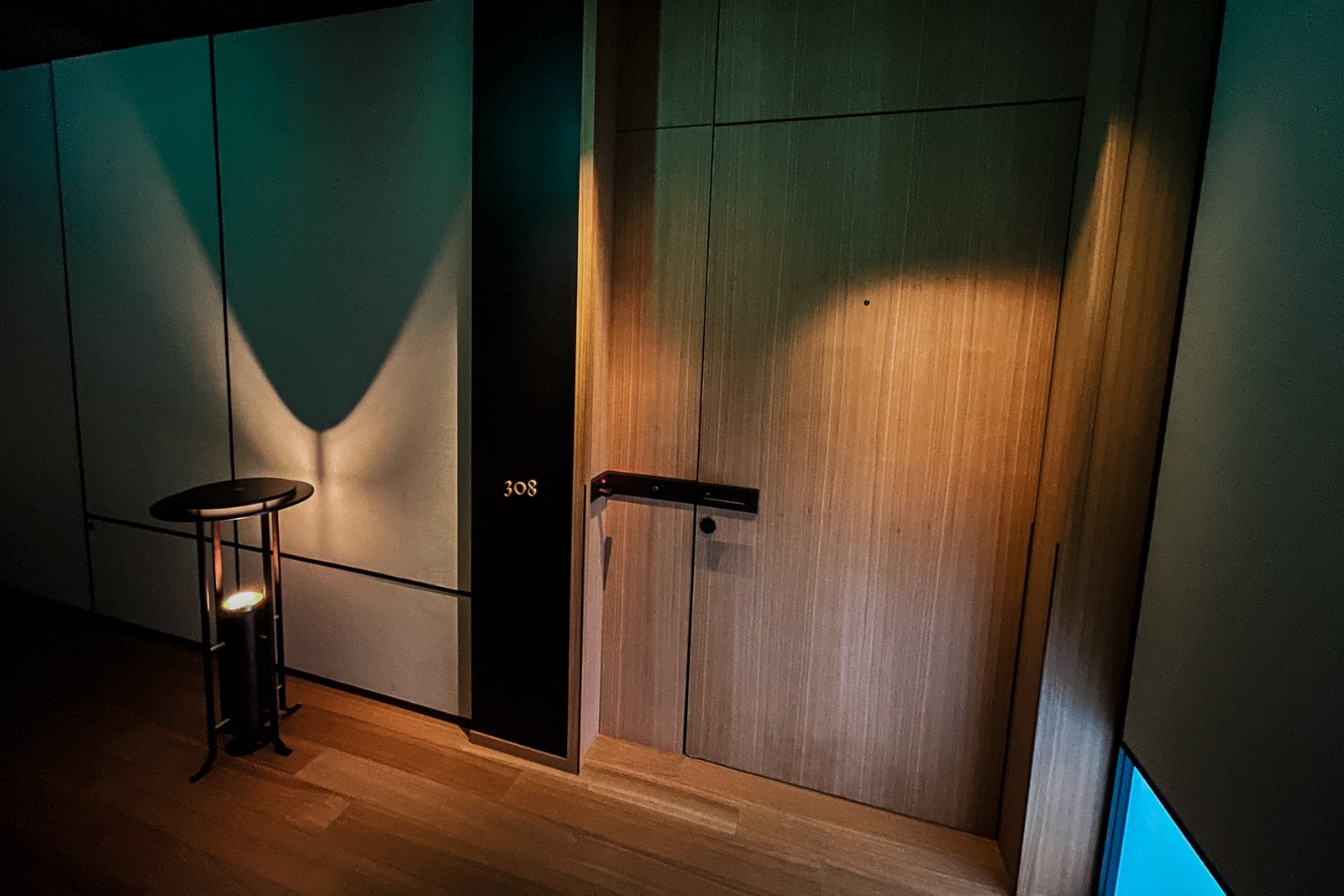
By the time we arrived at our suite, I was already in love with the feel of this hotel. Beauty, simplicity and serenity typify the Park Hyatt Kyoto. If you’re looking for bold colors, bright lights and buzzy nightlife, this is absolutely not the hotel for you.
The suite
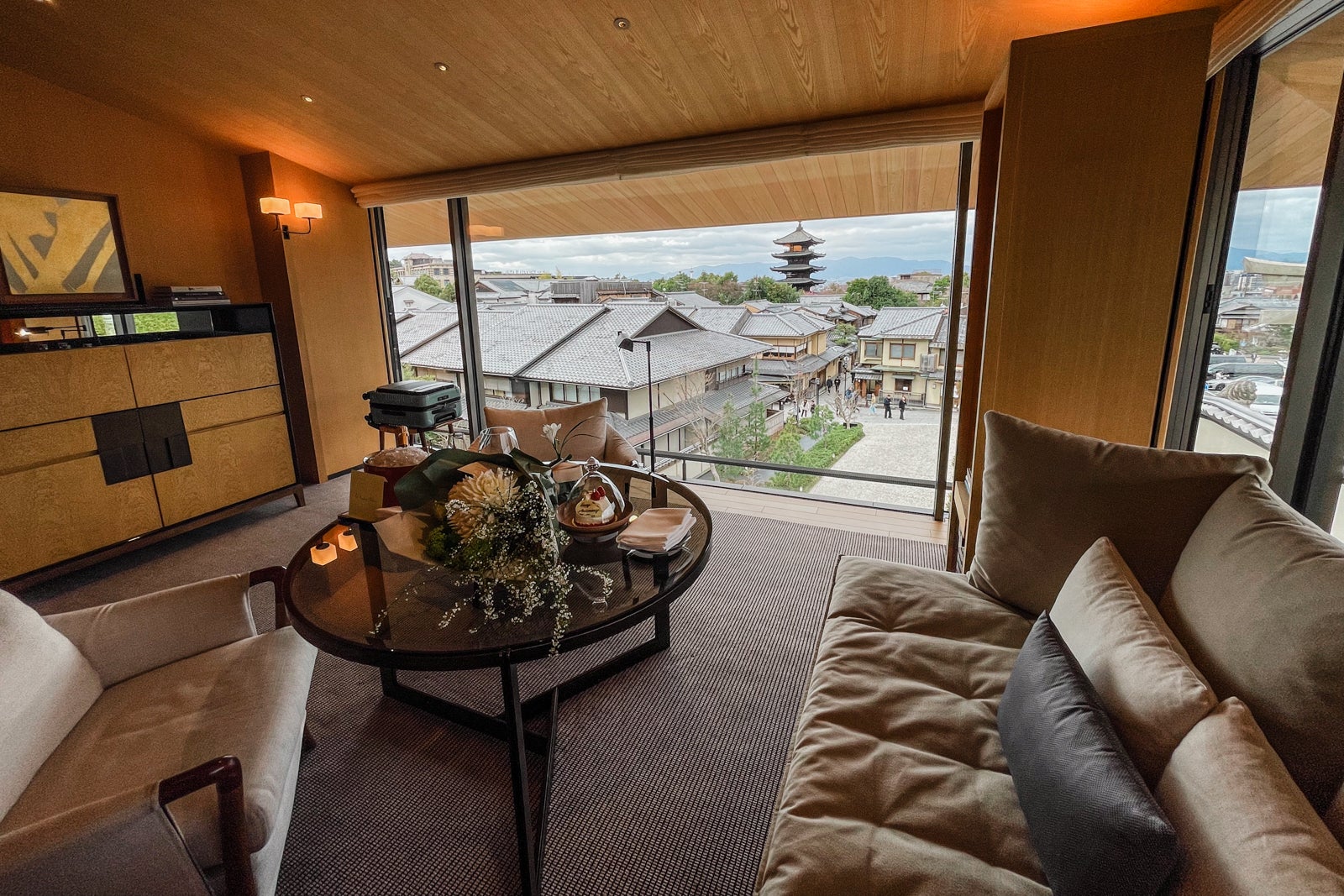
Since we were celebrating a big anniversary, we booked a specific (named) suite for this trip, of which there are nine. (See the next section for information about standard rooms.)
Suite types include Park Suite and Ninenzaka House (both 732 square feet), the 968-square-foot Higashiyama House and the 1,453-square-foot Pagoda Houses. We secured Ninenzaka House and thoroughly enjoyed it.
The suite was beautiful and offered excellent views of the city. All rooms and suites are stocked with amenities that make your stay more comfortable: bathrobes (Western and kimono-style), slippers, Aesop toiletries (bergamot rind, frankincense and cedar shampoo and conditioner; geranium leaf body cleaner and bar soap in a pleasing bergamot rind and Tahitian lime scent), bath salts, a powerful Dyson hair dryer and more.
I also loved that you could call guest services to ask for all sorts of complimentary amenities, such as baby shampoo and lotion, deodorant, eye masks, instant noodles, earplugs, lens cleaning wipes, heat packs, nail polish remover and more. If you like doing light workouts in the room, you could also request a free weight set, yoga mat and even fitness shoes.
Upon check-in, there were some nice treats in our room (some due to me being a Globalist and others to celebrate our anniversary). We enjoyed a bottle of Ruinart Champagne, a delicious strawberry cake and two types of loose-leaf tea from purveyor Kyoto Narumiya.
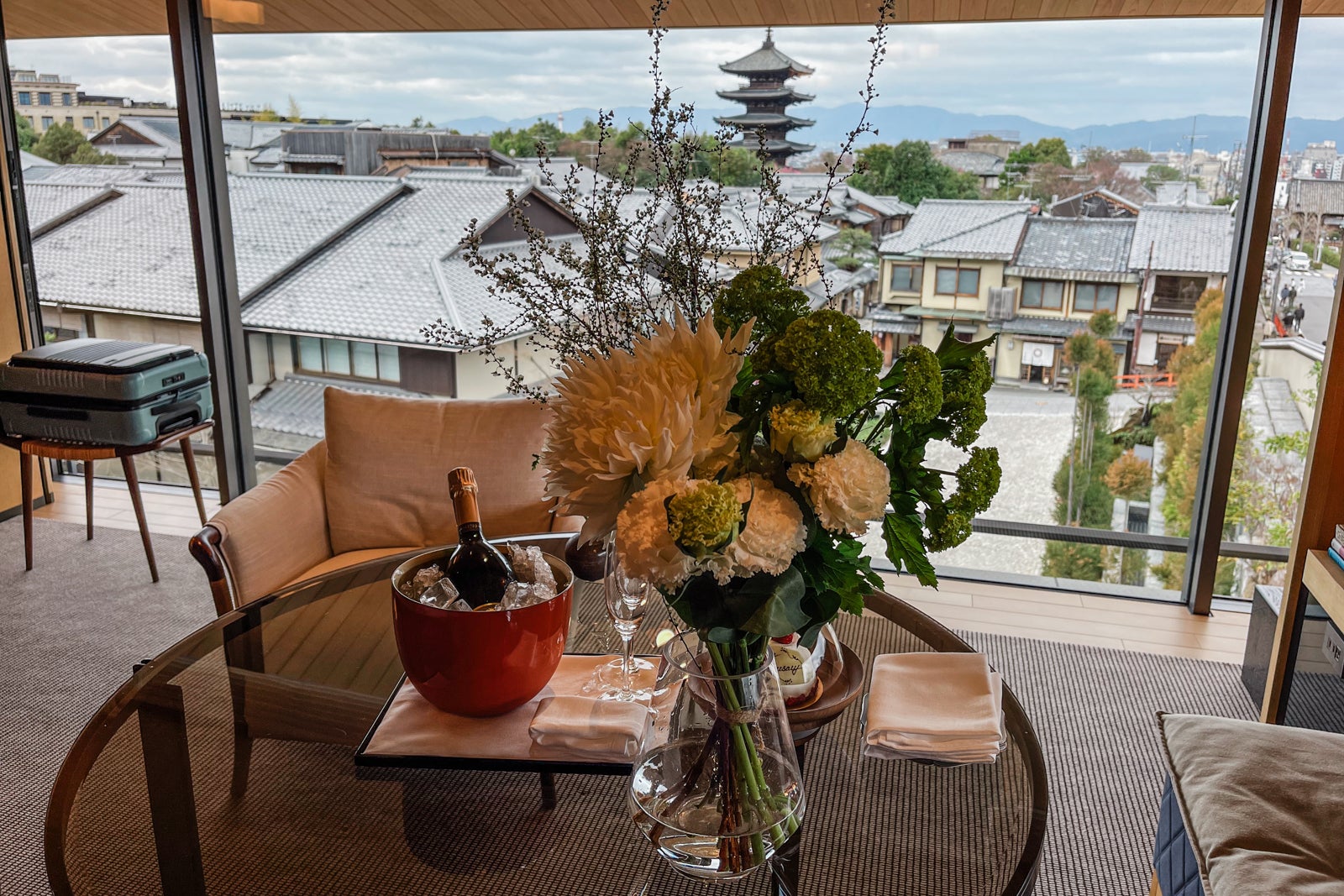
When it comes to guest rooms and suites, American interior designer Tony Chi worked with Takenaka to create warm interior spaces using natural materials.
Throughout the hotel, you’ll see wooden beams tied together via traditional methods using no nails. Beige walls accent the bright grain of the Japanese cypress and tamo ash woods used throughout. Bathrooms are outfitted with rich marbled granite, and there are gold accents in the suites and rooms.
In Ninenzaka House was a half-bath to the right as you entered the suite and walked toward the living area.
Both the living room (with a daybed, three chairs, table, TV and bar) and bedroom (with a king bed, chair, ottoman and side table) featured floor-to-ceiling windows.
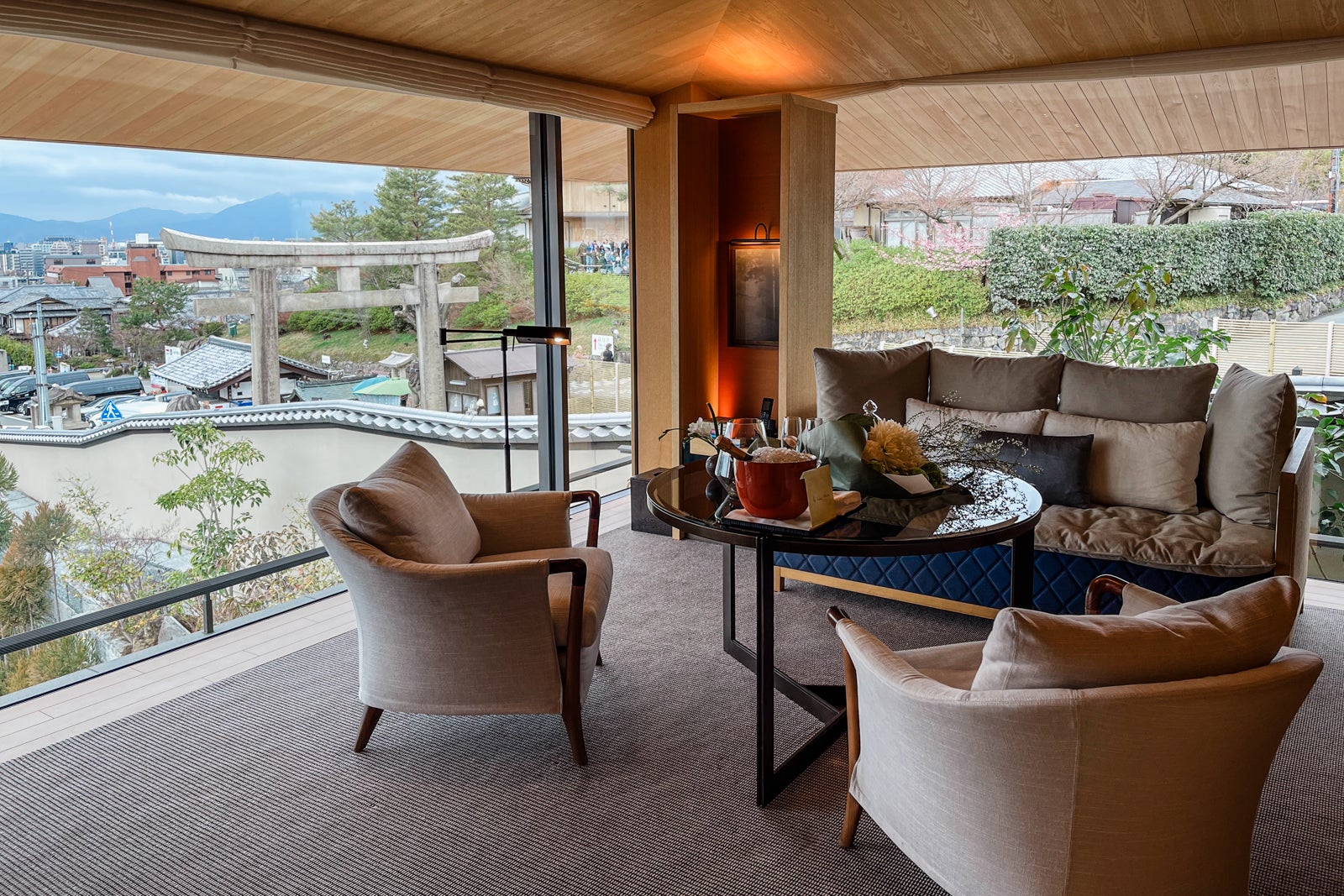
We felt as if we were in the center of the historic district — even when we were just kicking back in our room. Don’t worry, though: The blackout curtains don’t let any light into the suite when you want to rest.
In the living room, there was a flat-screen TV as well as a minibar and coffee/tea setup.
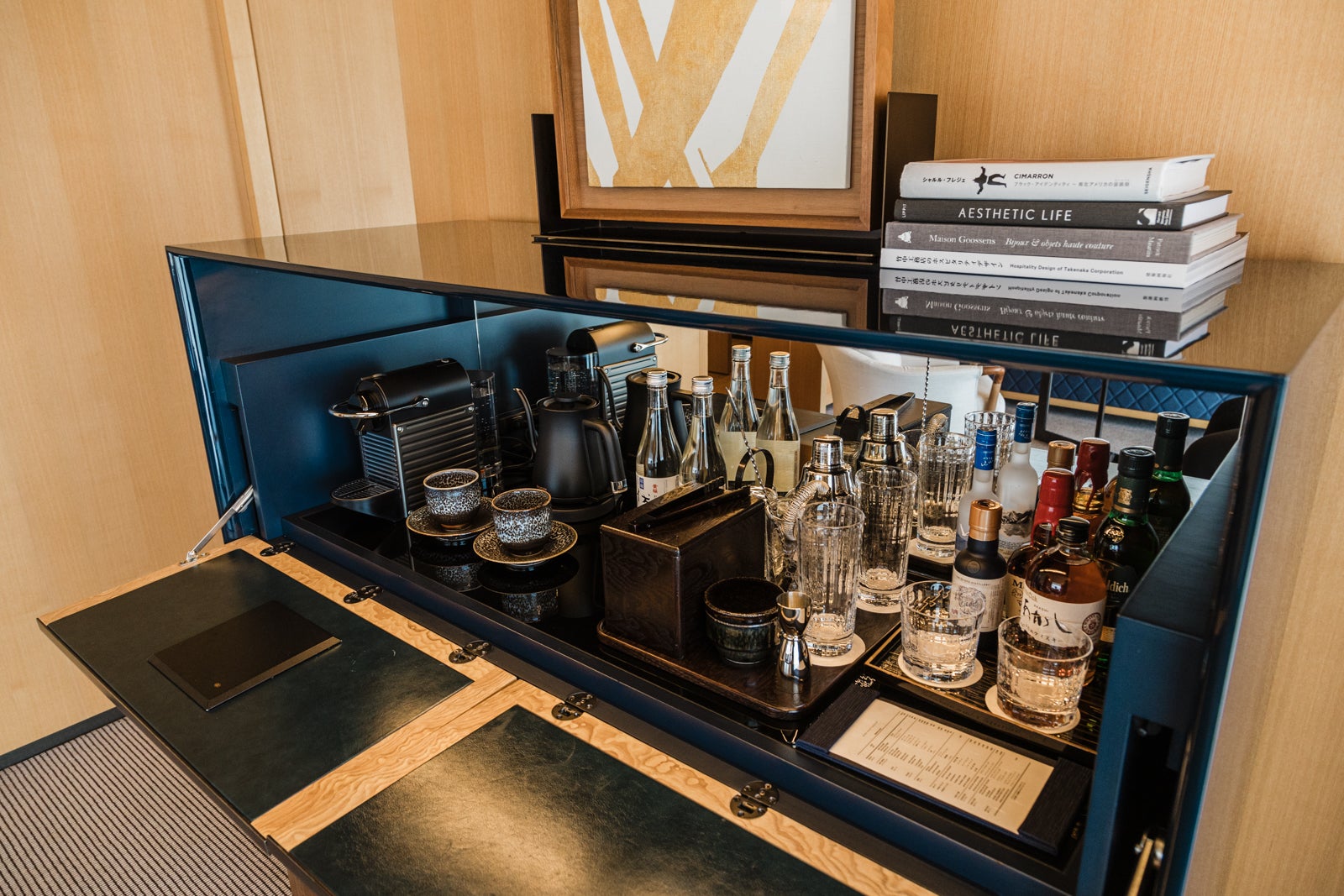
The king bed was very comfortable, and I liked having a little table and chair in the room as well.
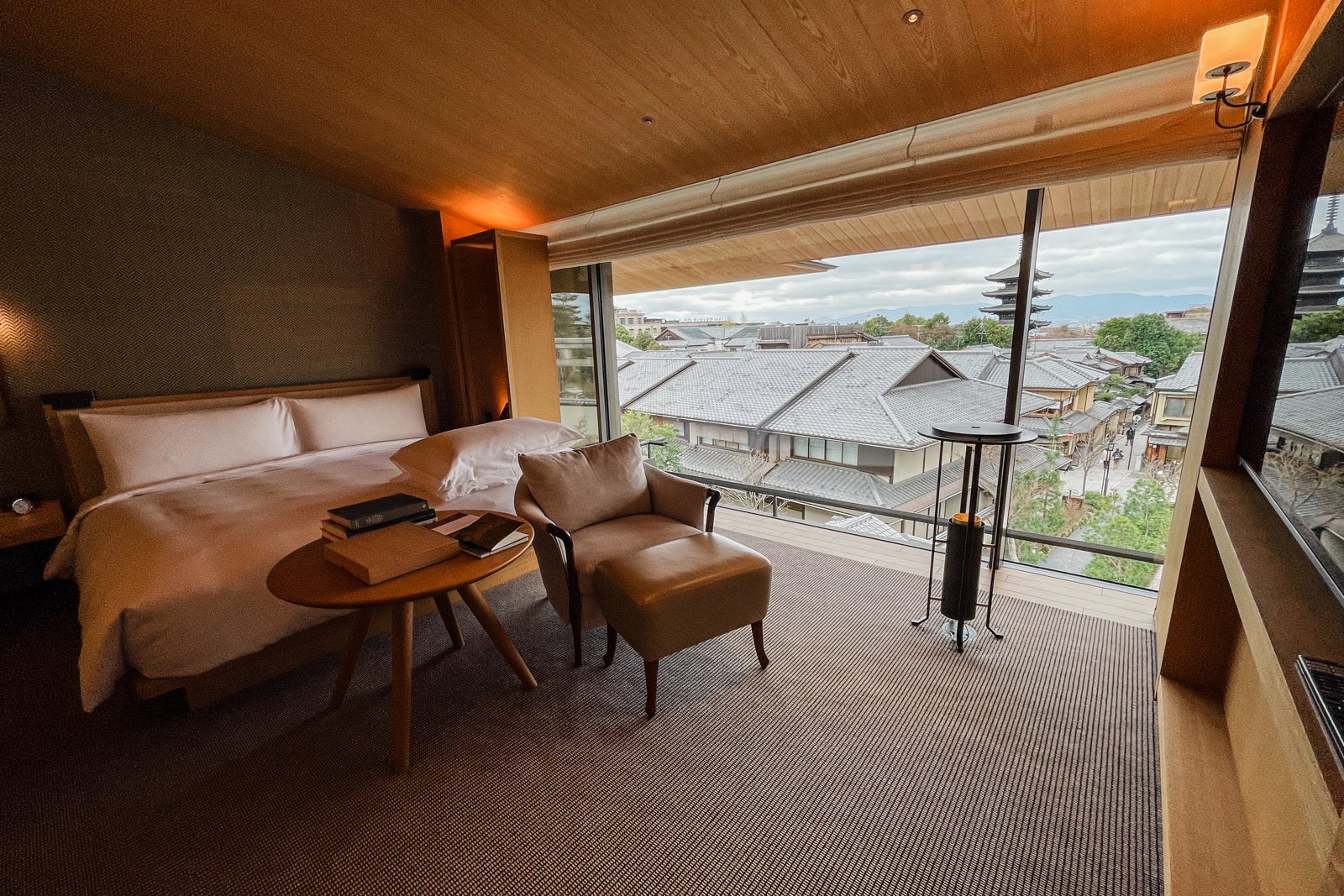
A second flat-screen TV faced the bed with the master bath through a door on the right.
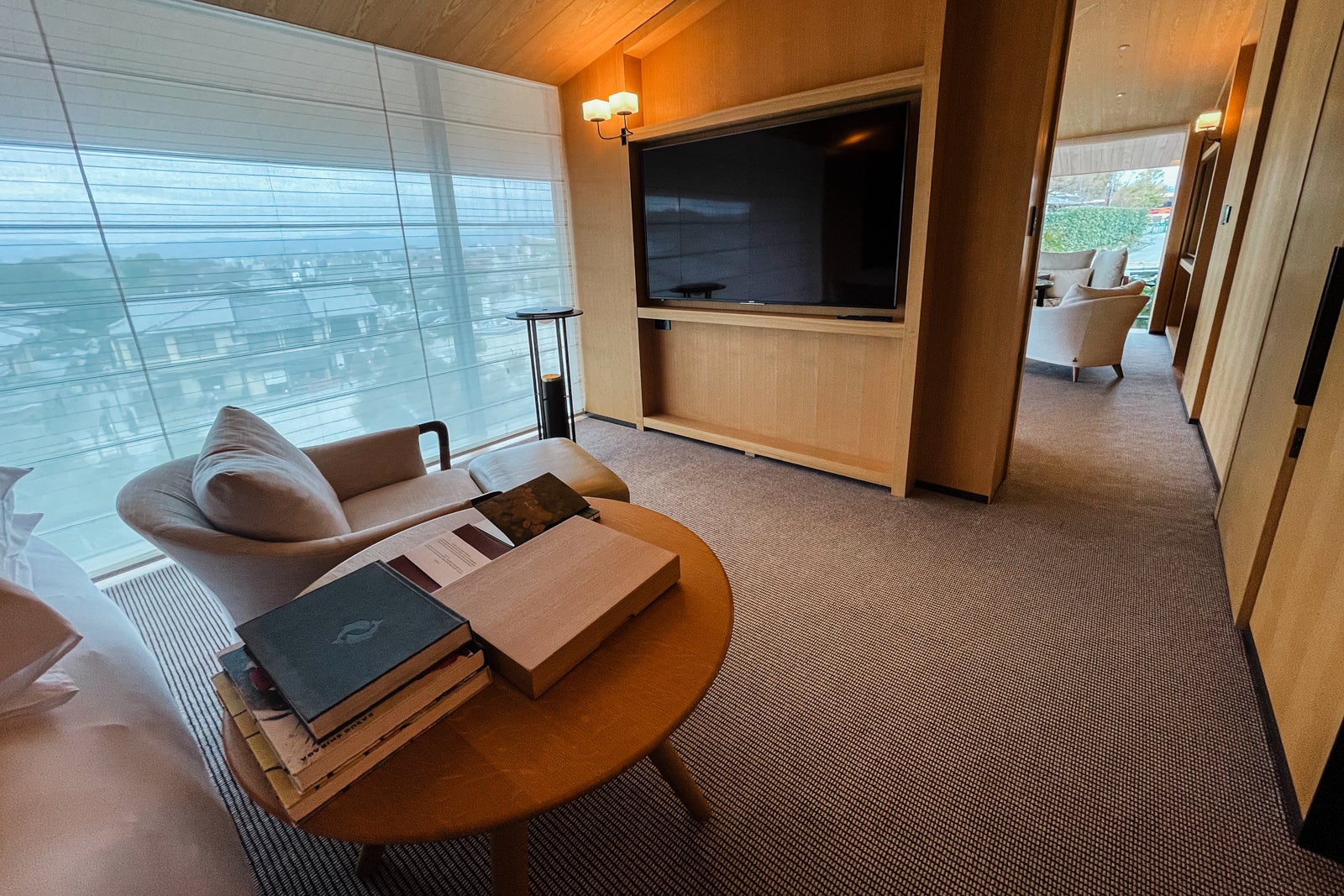
The master bath was stunning. The sliding doors on both ends of the closet area, which connects the entry hallway to the bathroom, were convenient. You could also enter the master bath from a sliding door in the bedroom. The master bath featured a separate steam shower and bathtub, a dual-sink vanity and a separate room with a Toto toilet.
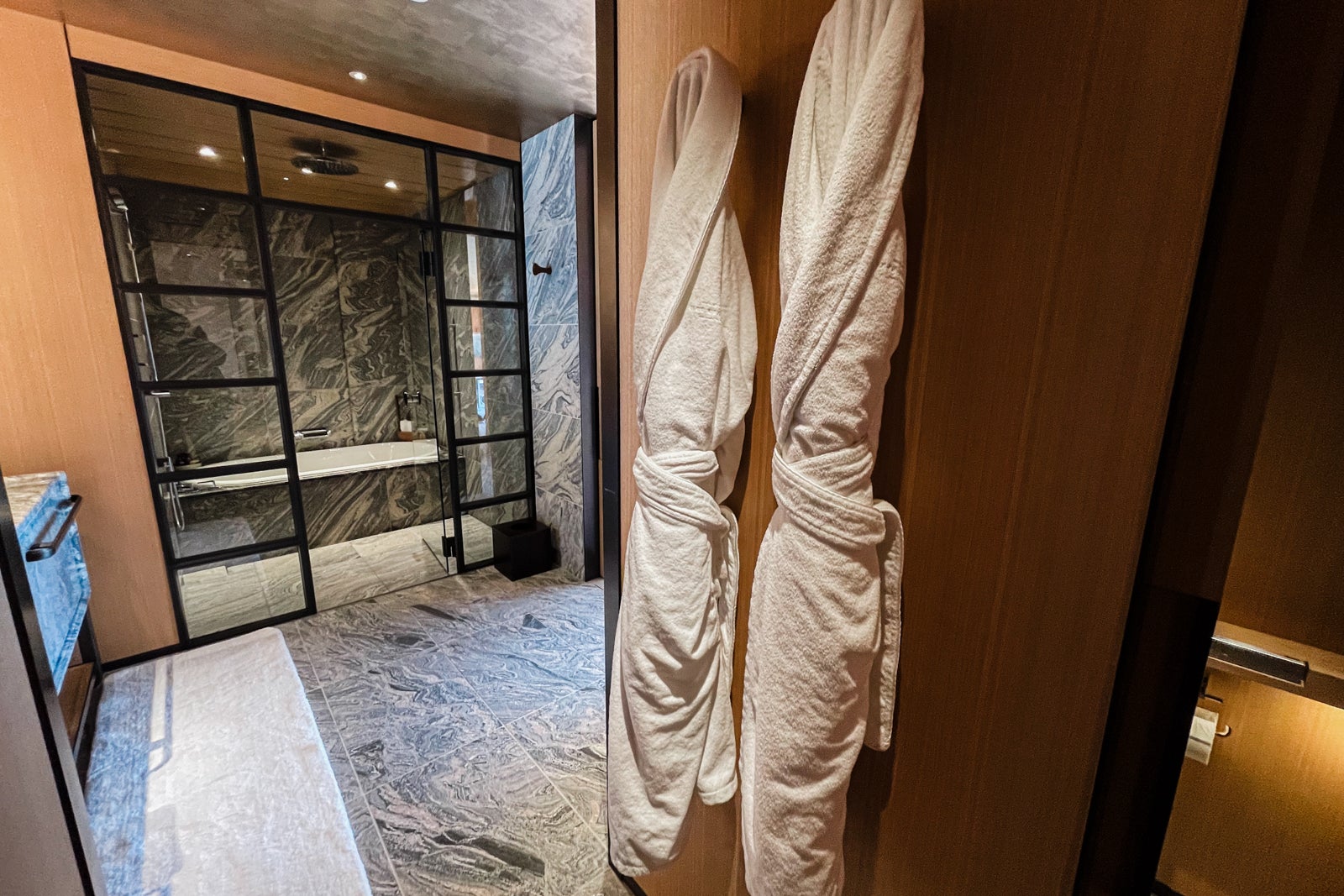
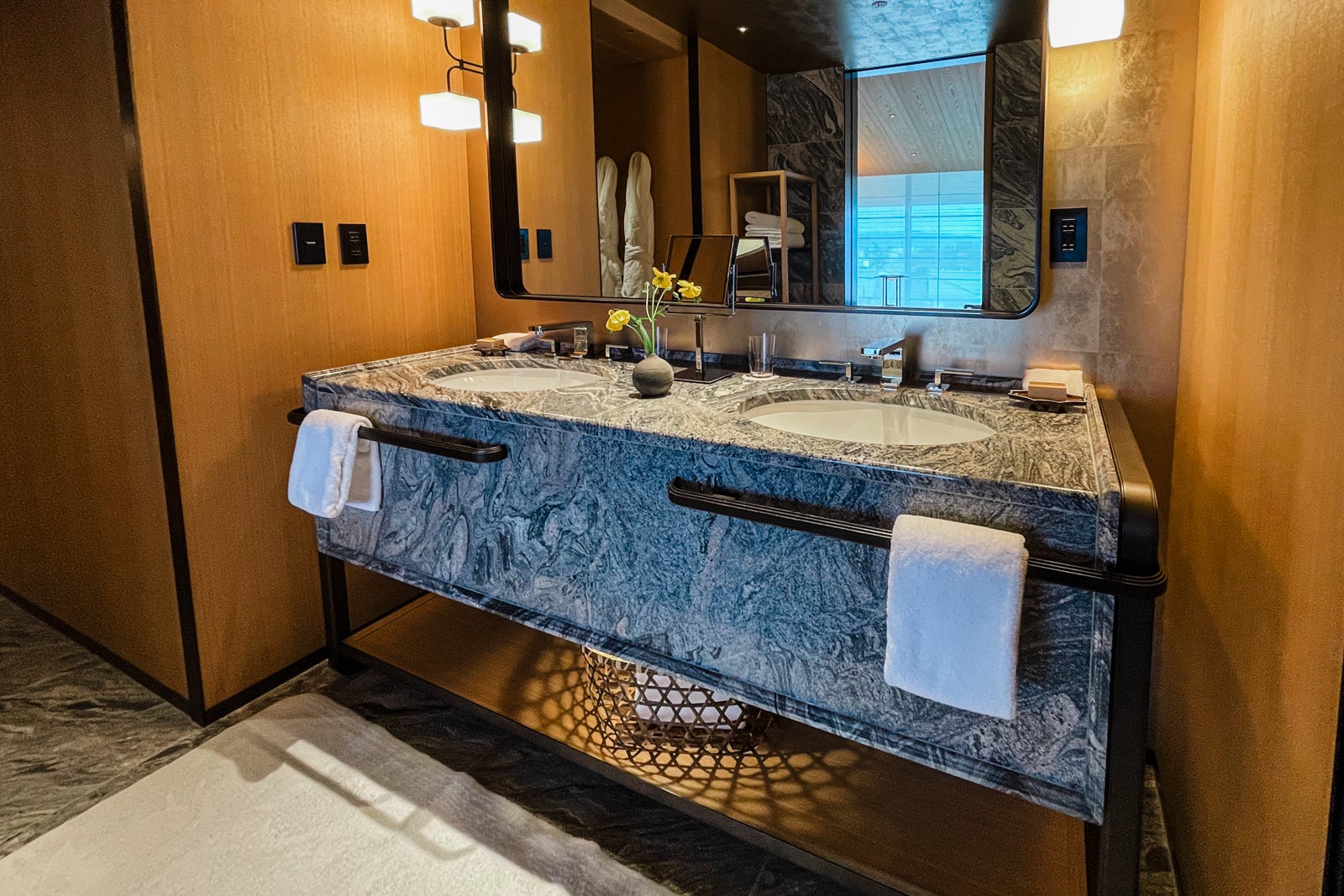
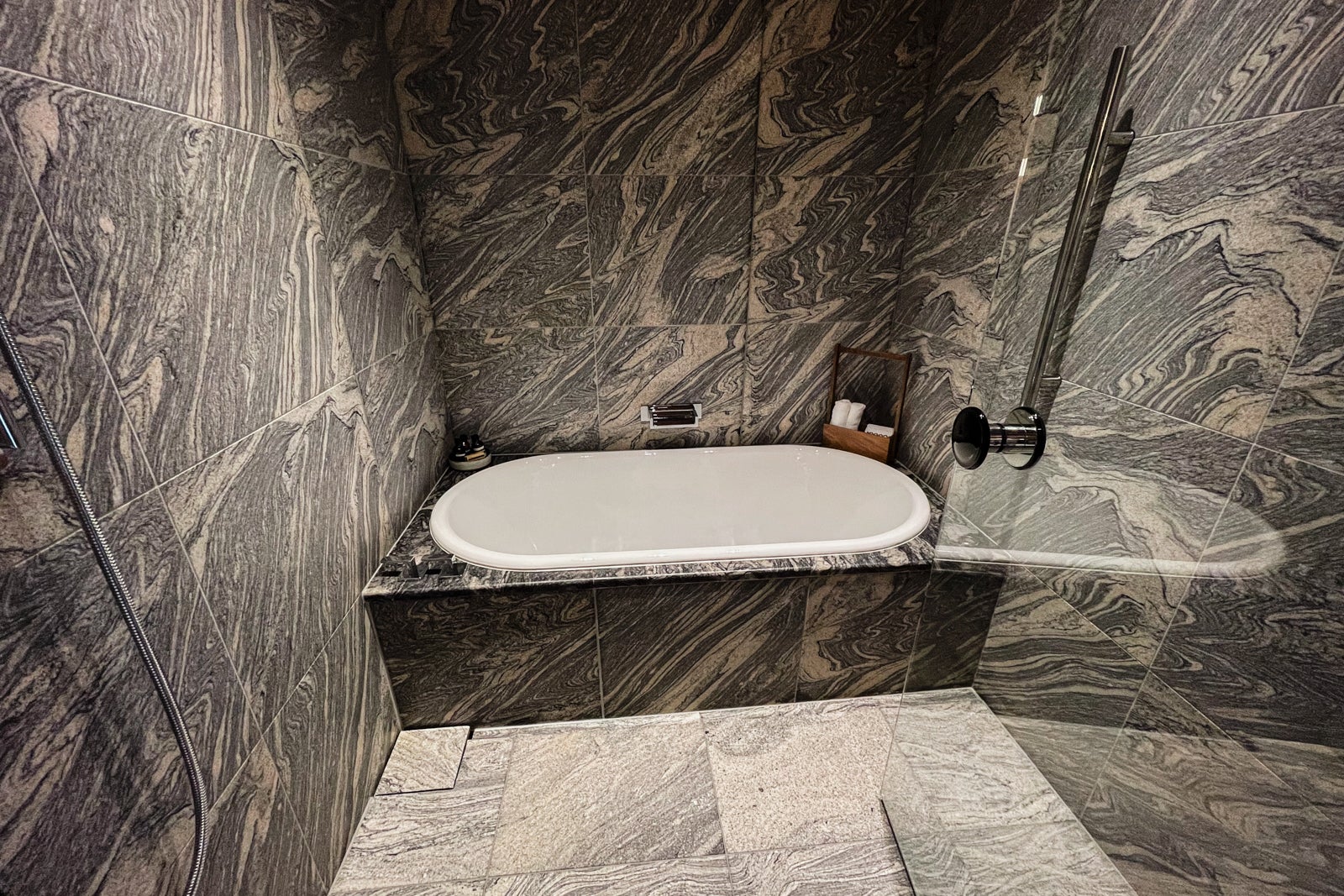
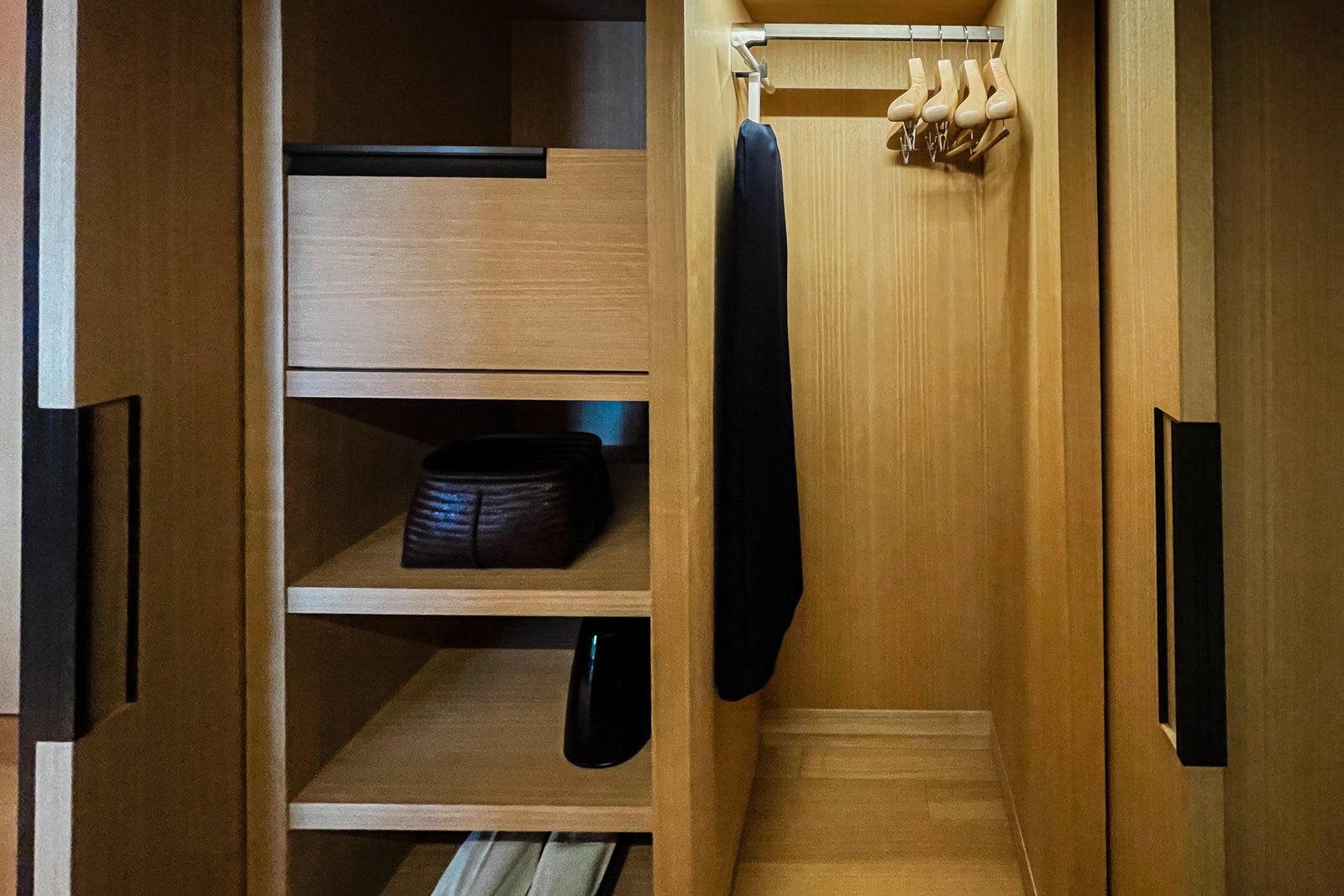
rooms
There are 70 guest rooms at Park Hyatt Kyoto. Standard rooms with hillside views start at about 484 square feet and accommodate up to two adults plus a baby in a crib. Rooms are outfitted with either a king bed or two twins, a work area, a 55-inch flat-screen TV, a coffee maker and a daybed. In the bathroom, the bathtub and shower are separate, and the vanity has dual sinks.
The rooms in the next category up are the same size as the standards but have garden views.
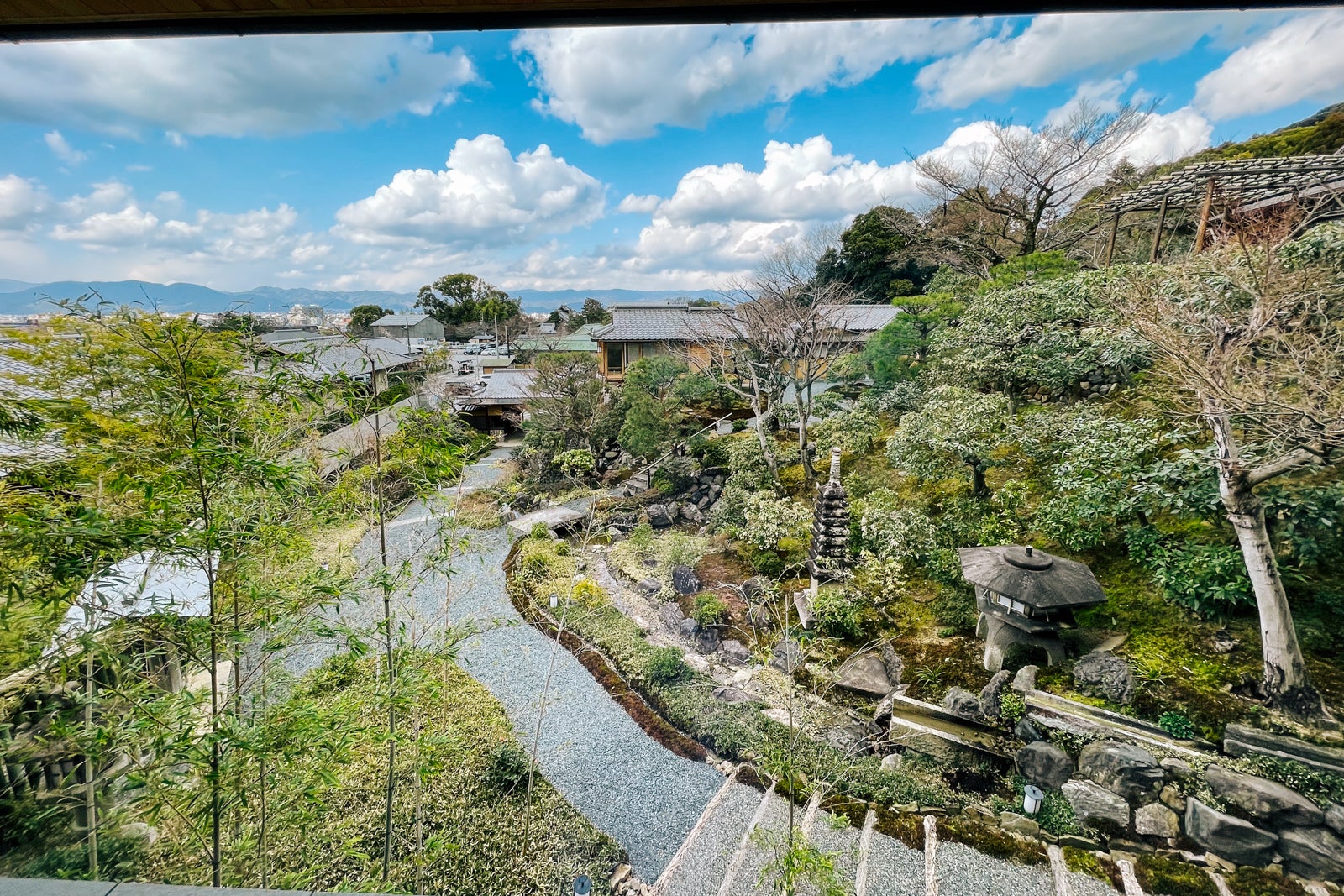
For a very serene and atmospheric view, go for the terrace rooms with views of a Japanese-style garden. If you have your heart set on a possible pagoda view, opt for King or Twin Bed View rooms.
Finally, there are two categories of roomier deluxe rooms that clock in at 732 square feet. Deluxe rooms have hillside views, while Deluxe View rooms look out over the 1,350-year-old Yasaka Pagoda.
Food and drink
Although there are phenomenal restaurants all around Kyoto, you’ll want to spend a meal or two enjoying the Park Hyatt Kyoto’s restaurants.
Yasaka
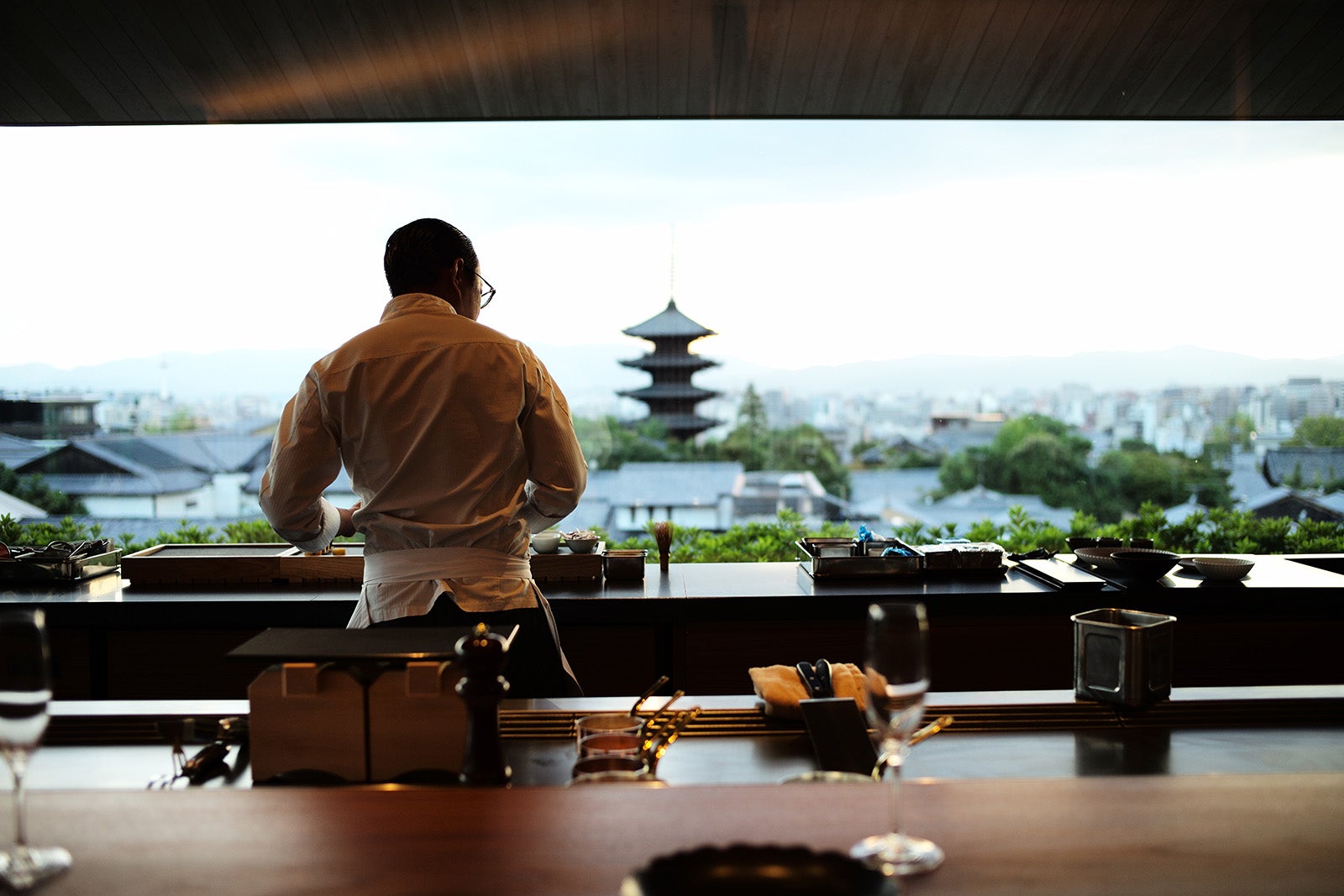
Yasaka offers a teppanyaki experience that fuses Japanese culinary sensibilities with French cooking techniques. It’s the hotel’s signature restaurant, and I wish I had made reservations here for more than one dinner. It was exquisite.
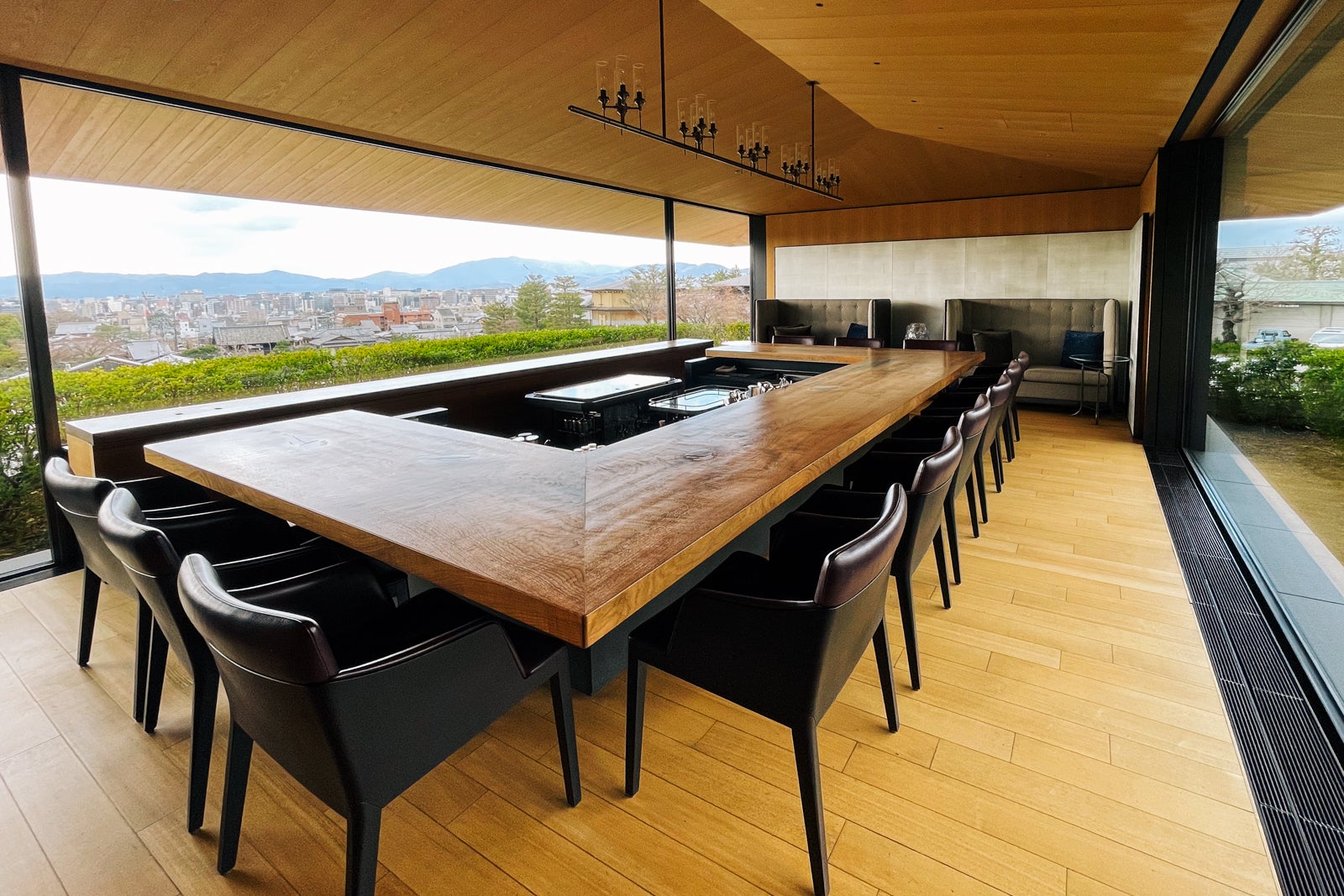

There are two identical dining rooms that each feature one U-shaped table. Both have gorgeous views of Yasaka Pagoda. Book the early seating if watching the sunset is important to you.
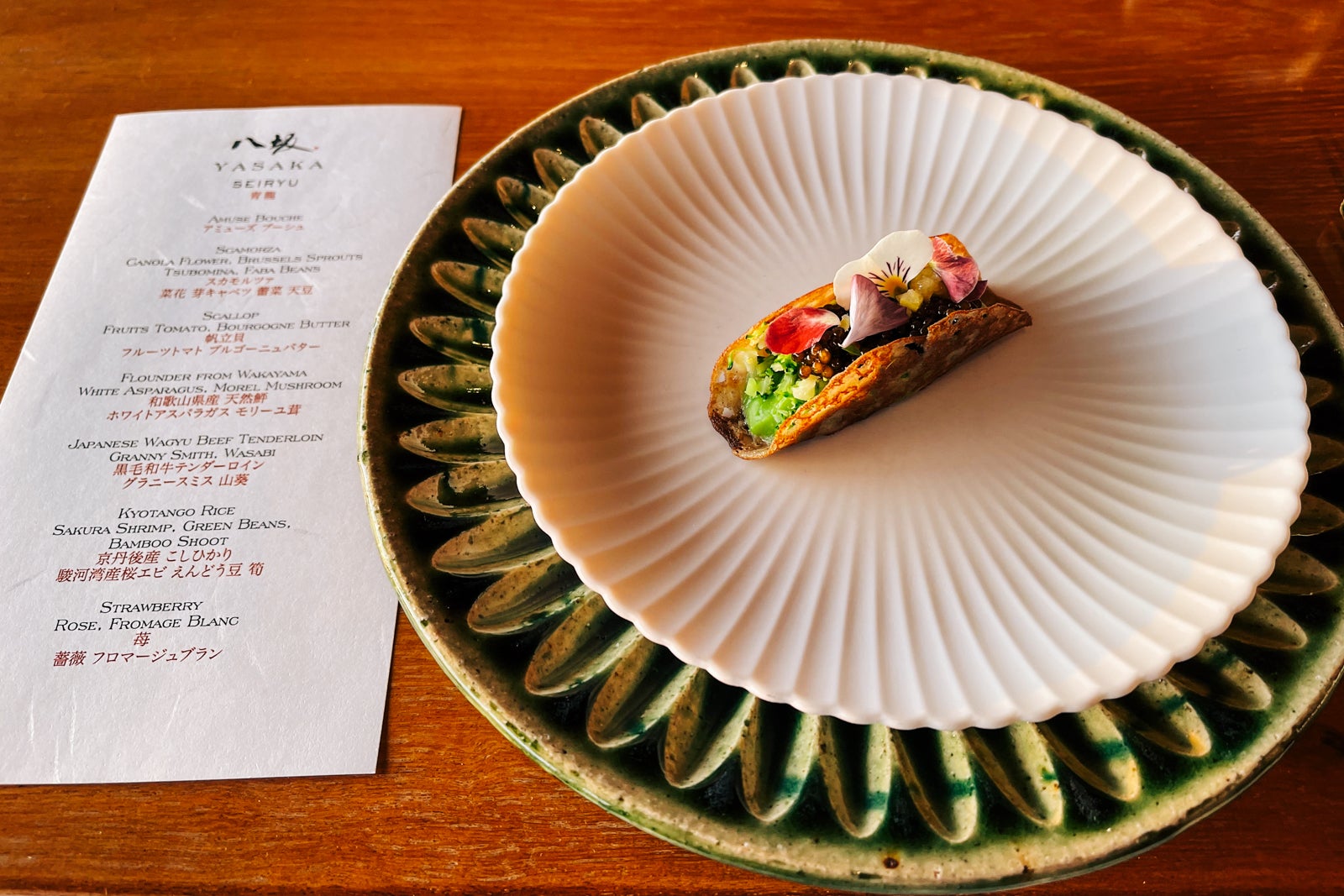
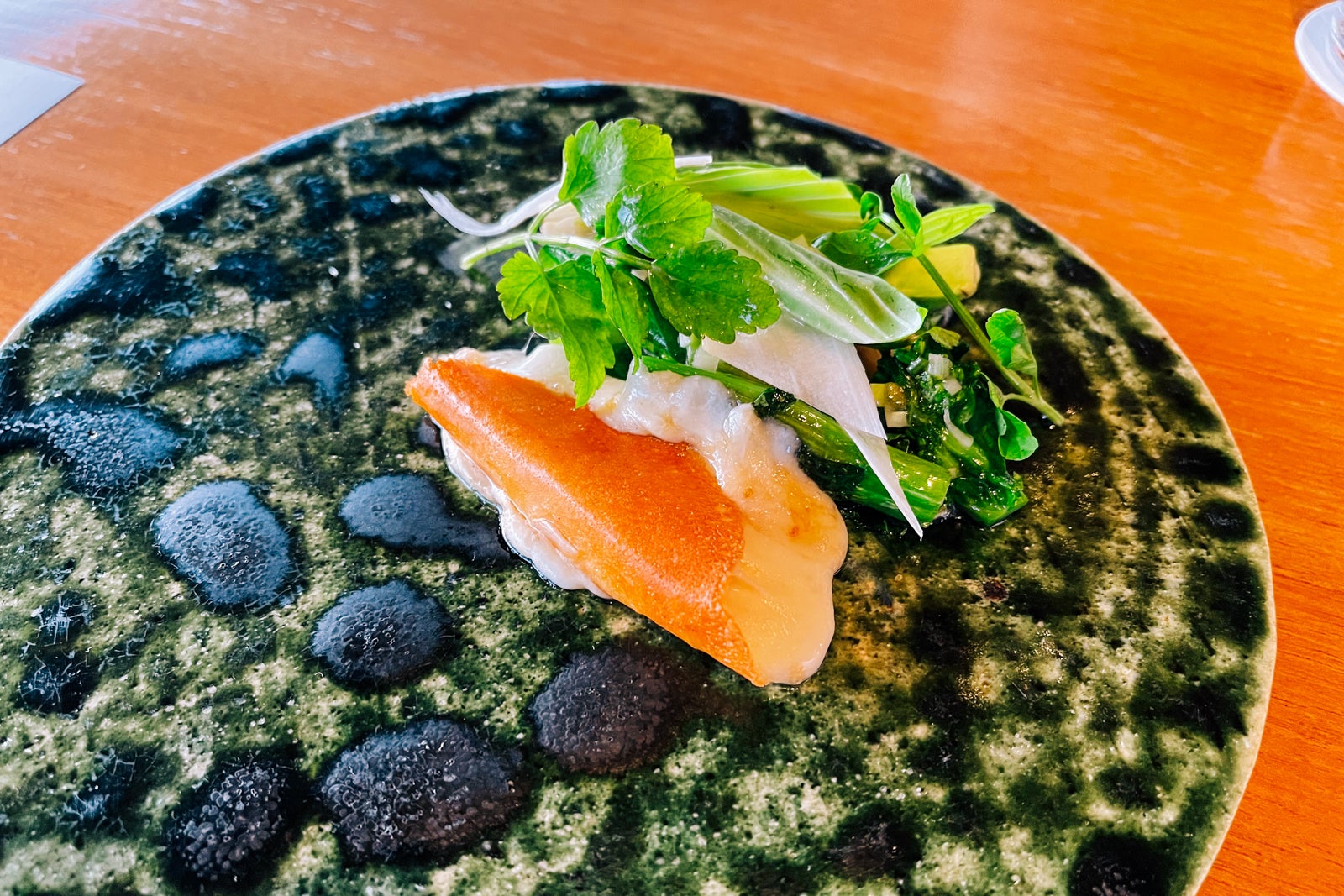
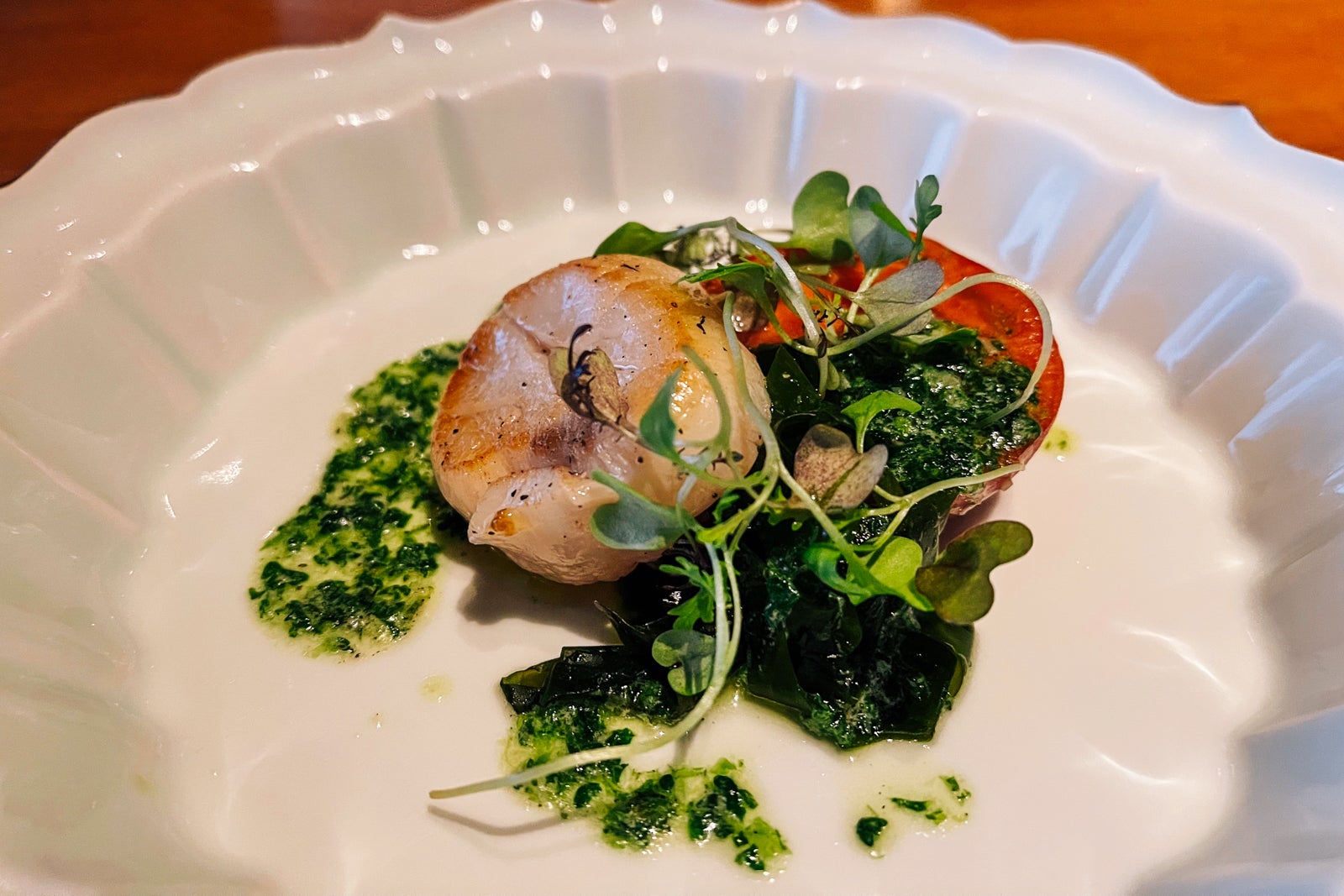
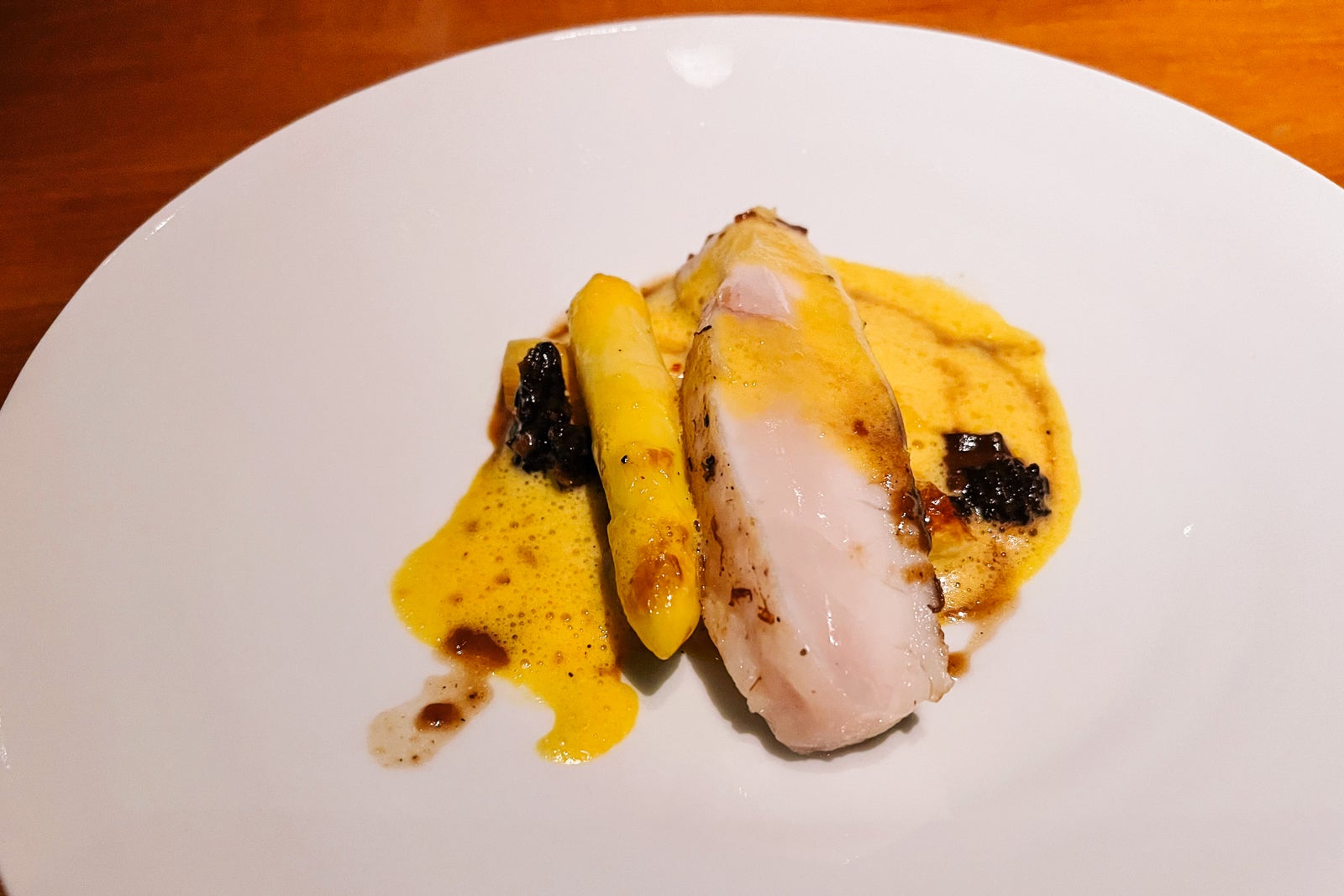
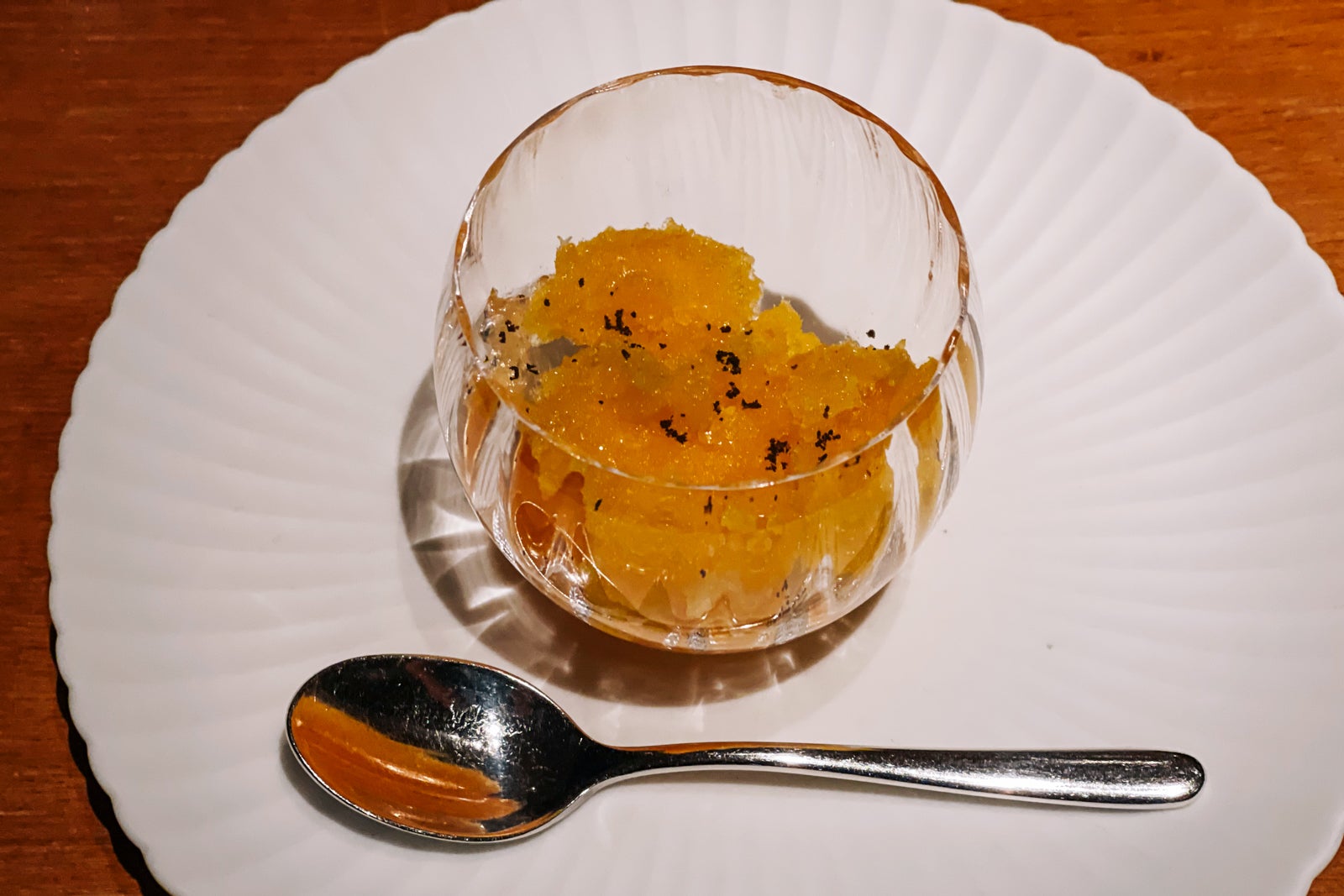
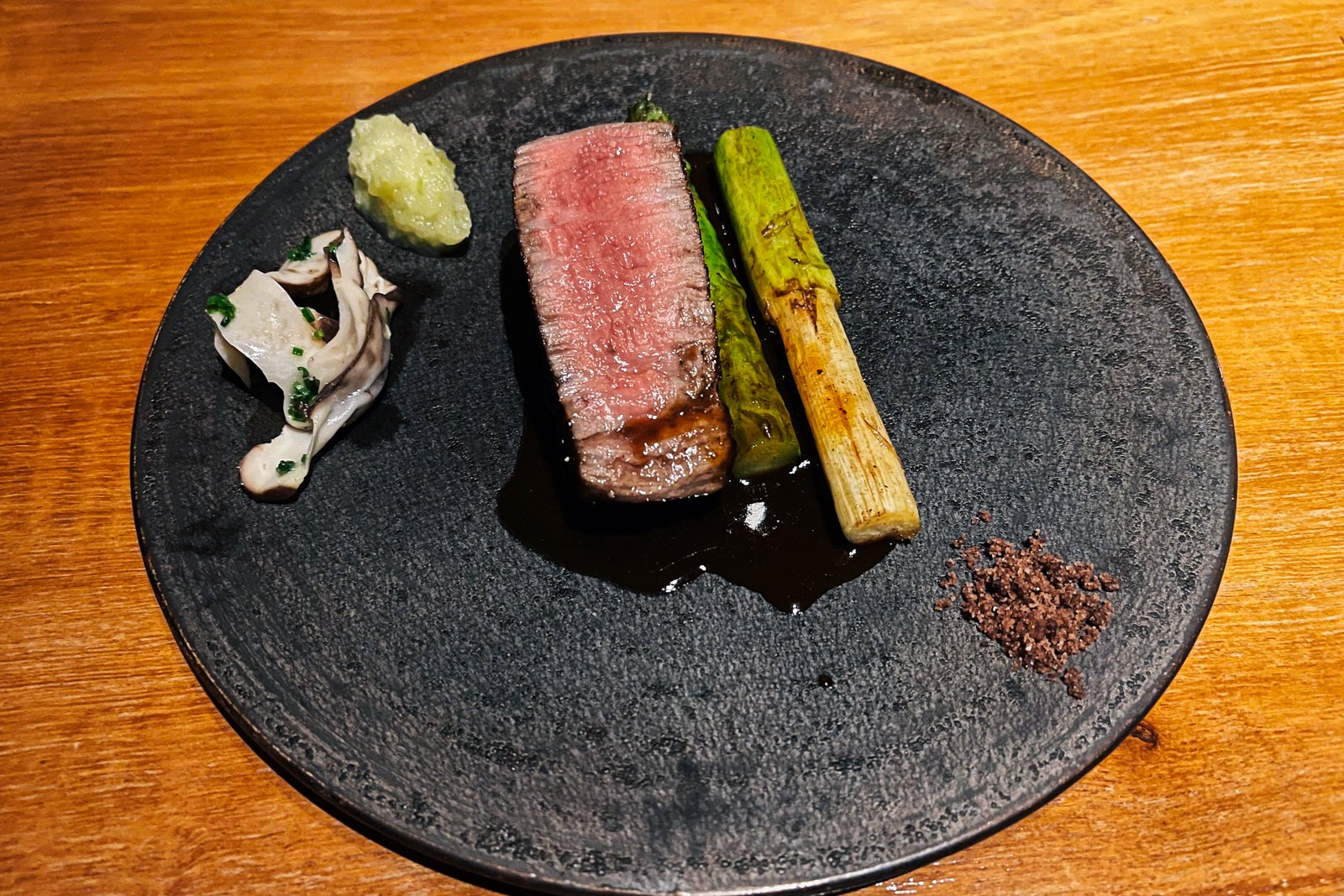
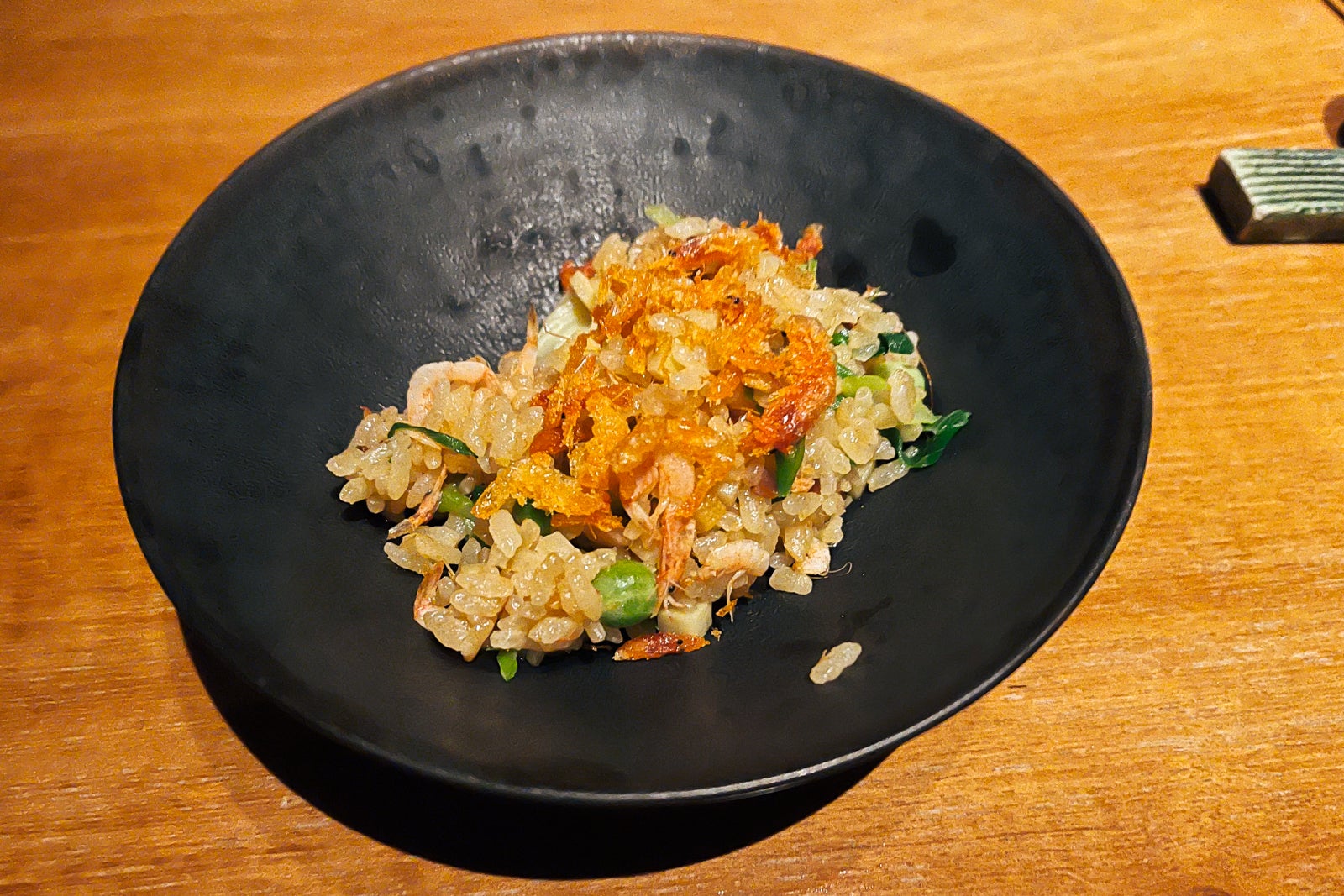
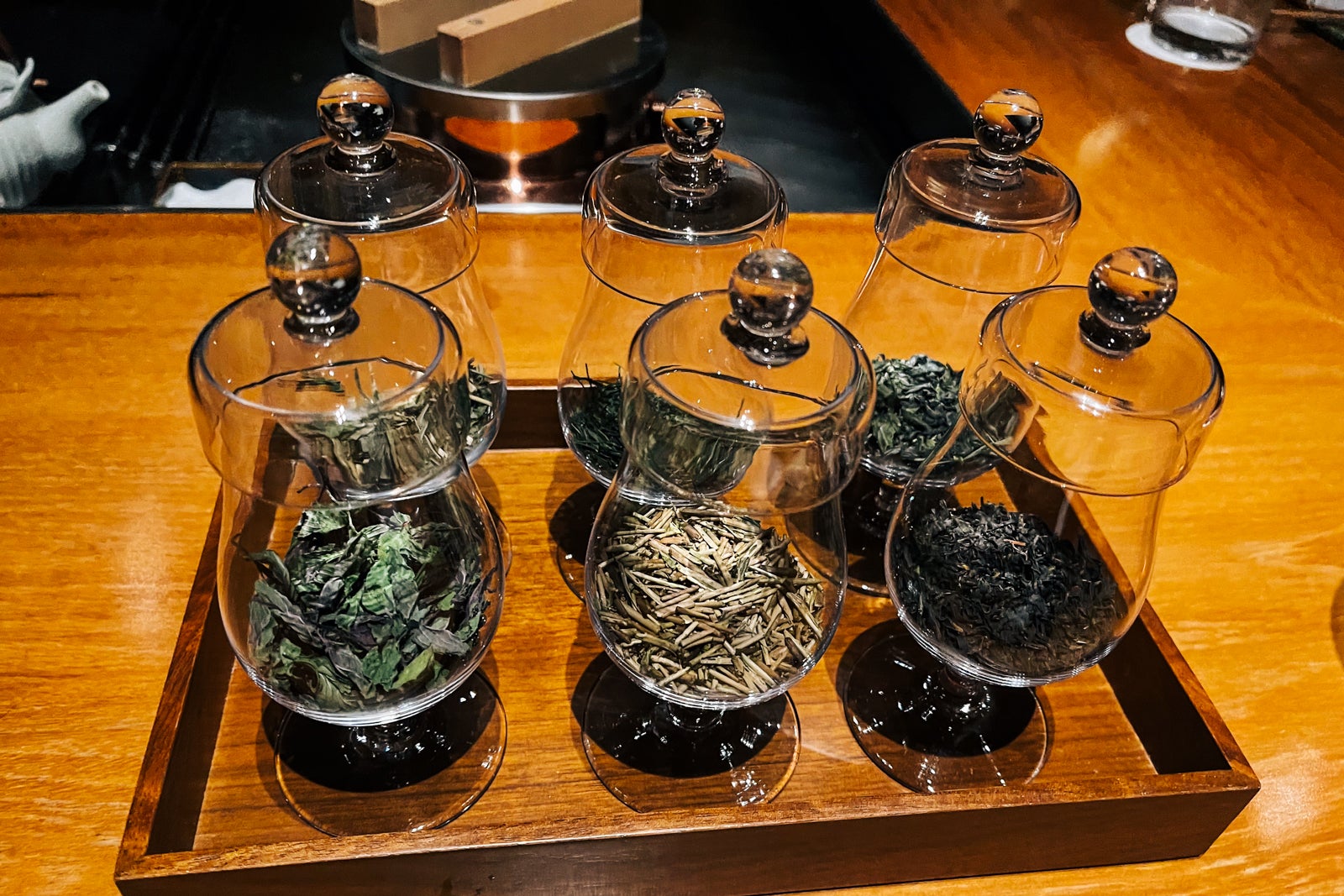
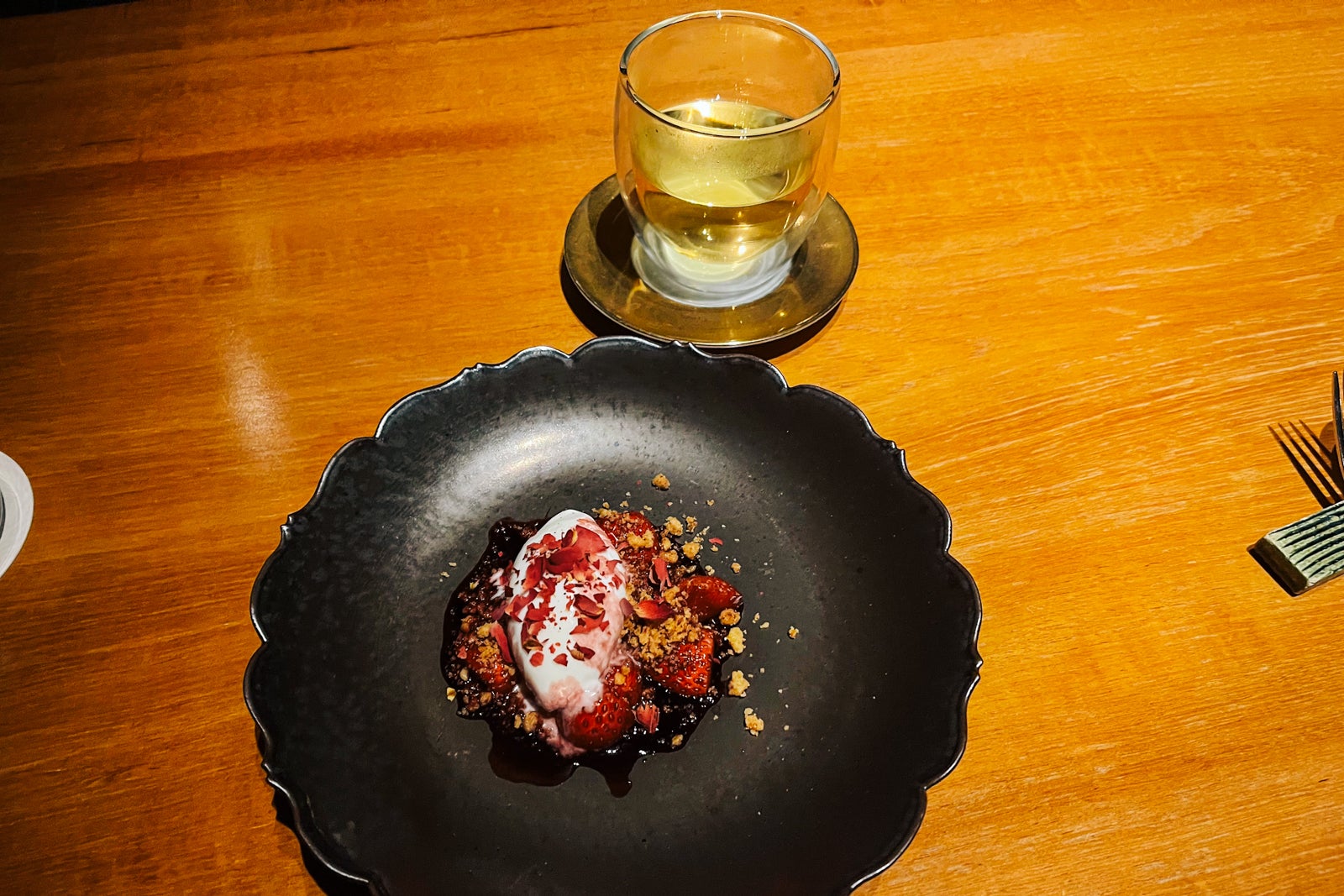
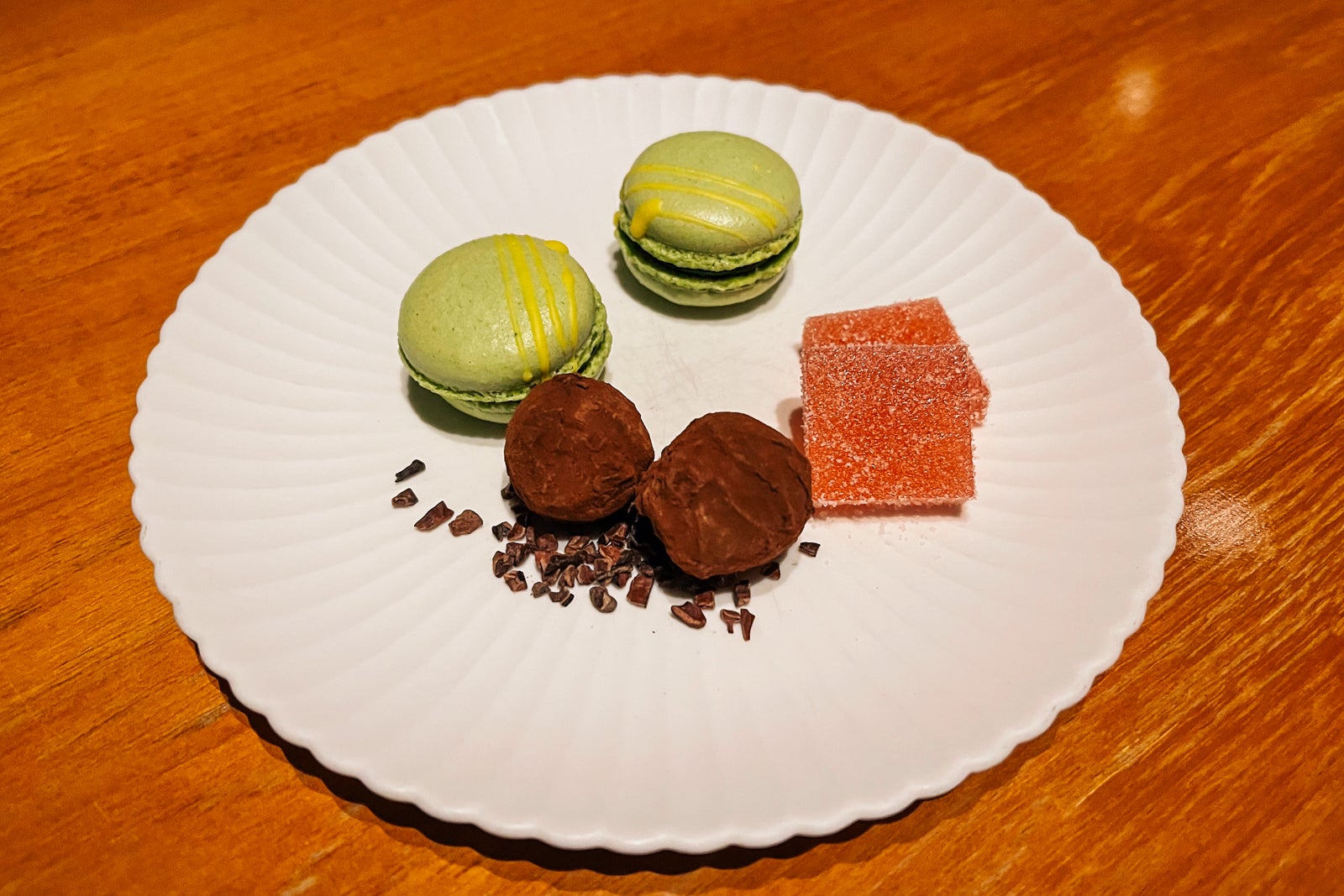
The tasting menu cost 32,000 yen ($209) per person and included:
- Amuse bouche
- Scamorza with canola flower, brussels sprouts, tsubomina and fava beans
- Scallop with poached tomato and Bourgogne butter
- Wakayama flounder with white asparagus and morel mushroom
- Wagyu beef tenderloin with granny smith apple and wasabi
- Kyotango rice with sakura shrimp, green beans and bamboo shoot
- Strawberry with rose and fromage blanc
Wine pairings will set you back an additional 20,000 yen ($131) per person, while nonalcoholic pairings are 8,000 yen ($52).
This was an expensive meal but we felt it was worth the splurge given the gorgeous presentation and wonderful profusion of flavors.
Kyoyamato
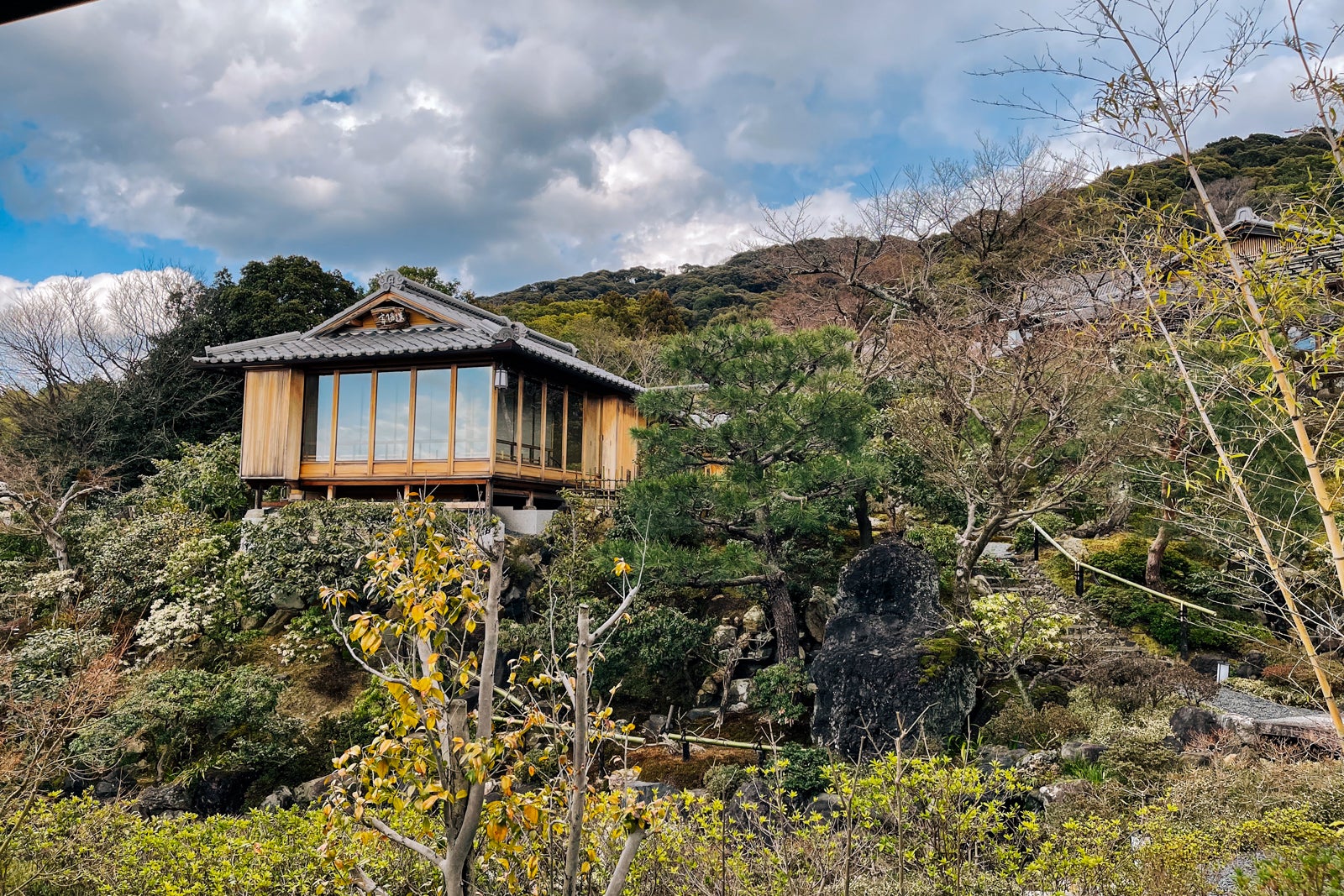
The hotel highly encouraged us to dine at Kyoyamato because of its ryotei-style setting, its long history dating to 1877 and its authentic Japanese cuisine. This Michelin-starred kaiseki experience is a sought-after reservation for locals and visitors alike.
However, my palate is not very adventurous when it comes to Japanese meals. I don’t eat raw fish, and while the food depicted on the website looks beautiful, I knew I would not enjoy it. So, we skipped.
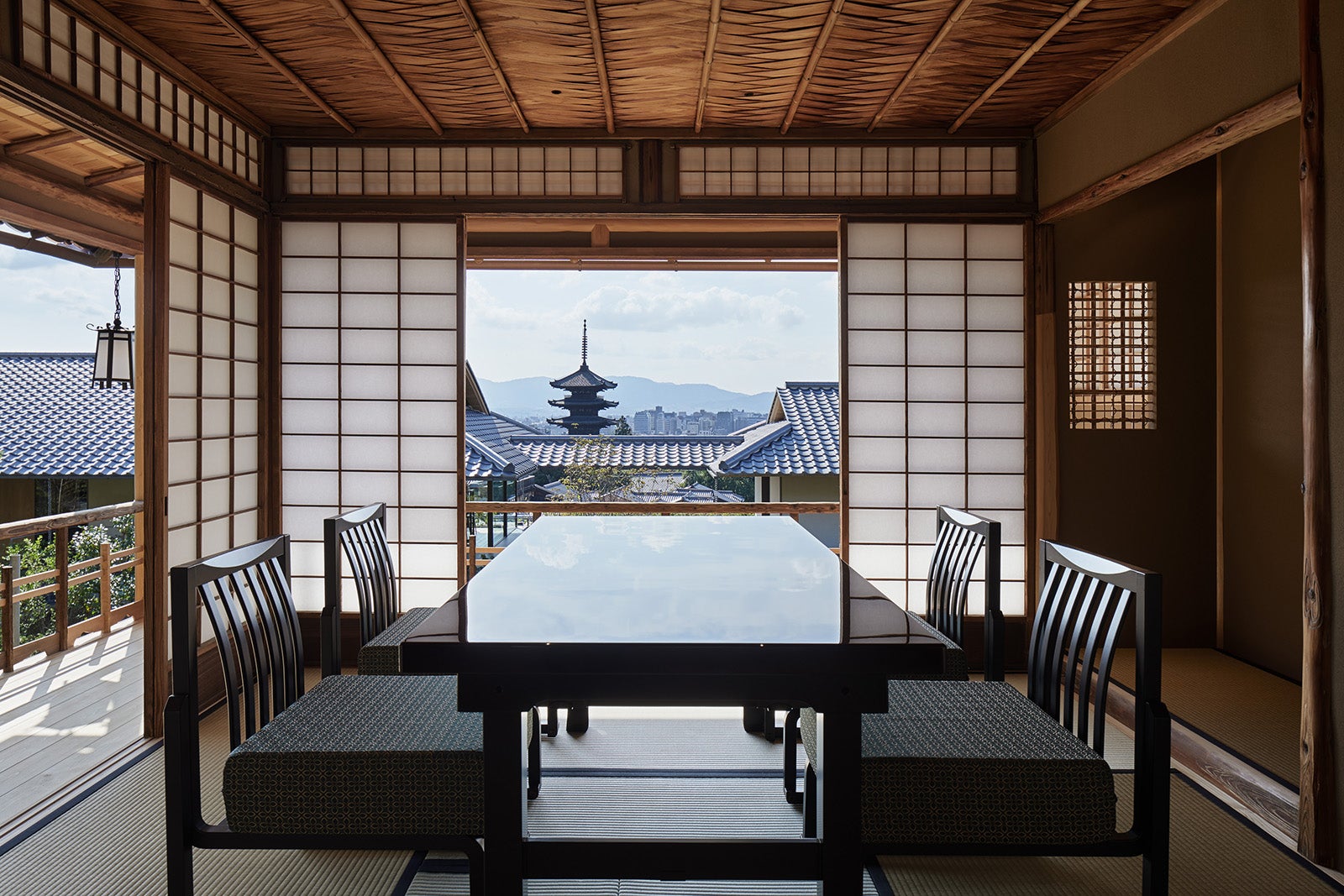
There are two set meals offered at both lunch and dinner; it costs 16,500 and 22,000 yen ($108 and $144) for the early meal of the day and 38,500 and 49,500 yen ($252 and $324) at dinner.
Note that Kyoyamato prepares the Hyatt’s daily Japanese-style breakfast, which is served at Kyoto Bistro or in your room.
Kyoto Bistro
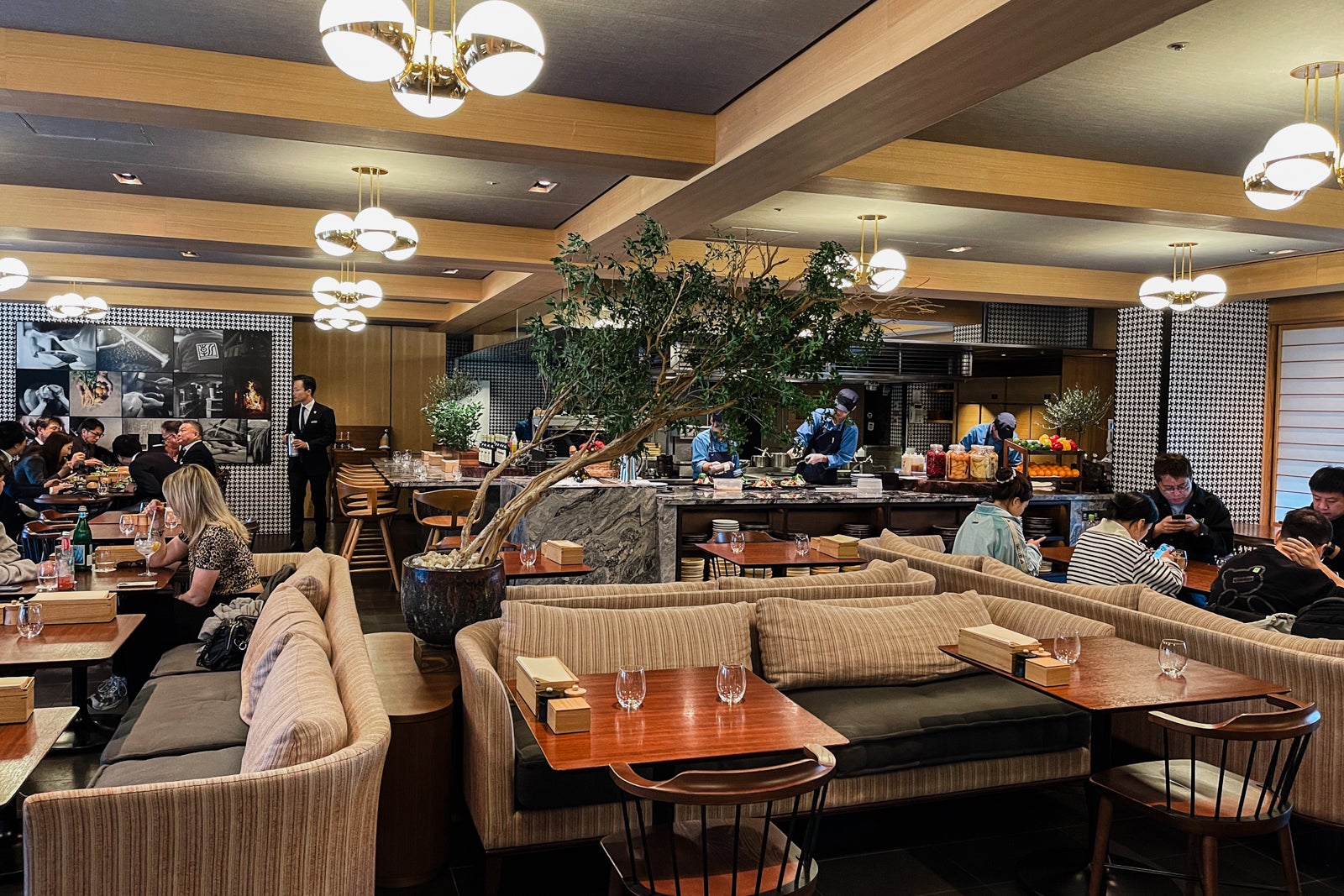
Kyoto Bistro is Park Hyatt Kyoto’s casual restaurant, serving breakfast, lunch and dinner.
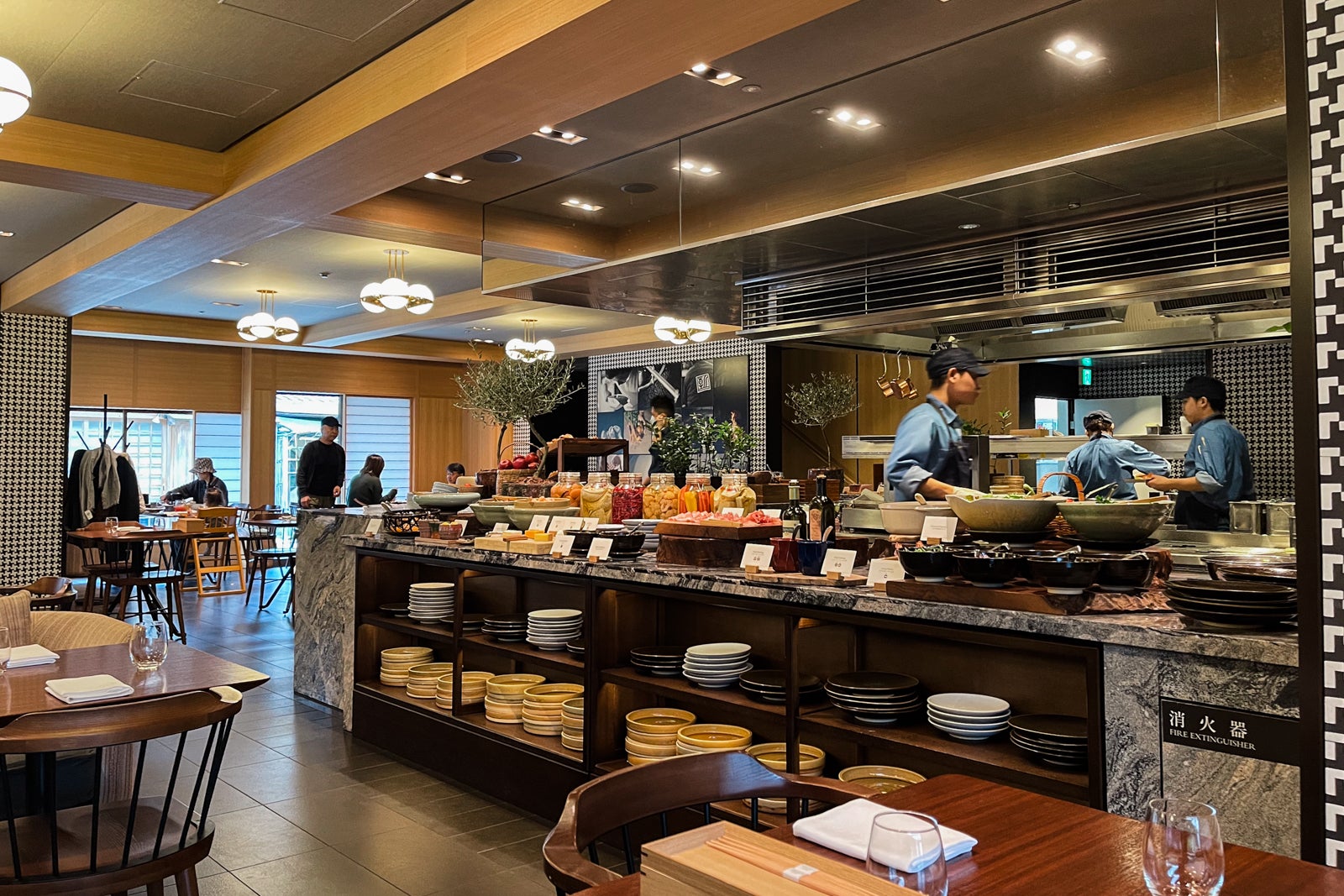
As a Globalist, breakfast was comped for us each morning. You may order a la carte or enjoy the continental buffet (3,850 yen or $24) or the full buffet (6,050 yen or $38) with a choice of main dish plus juice, coffee and tea.
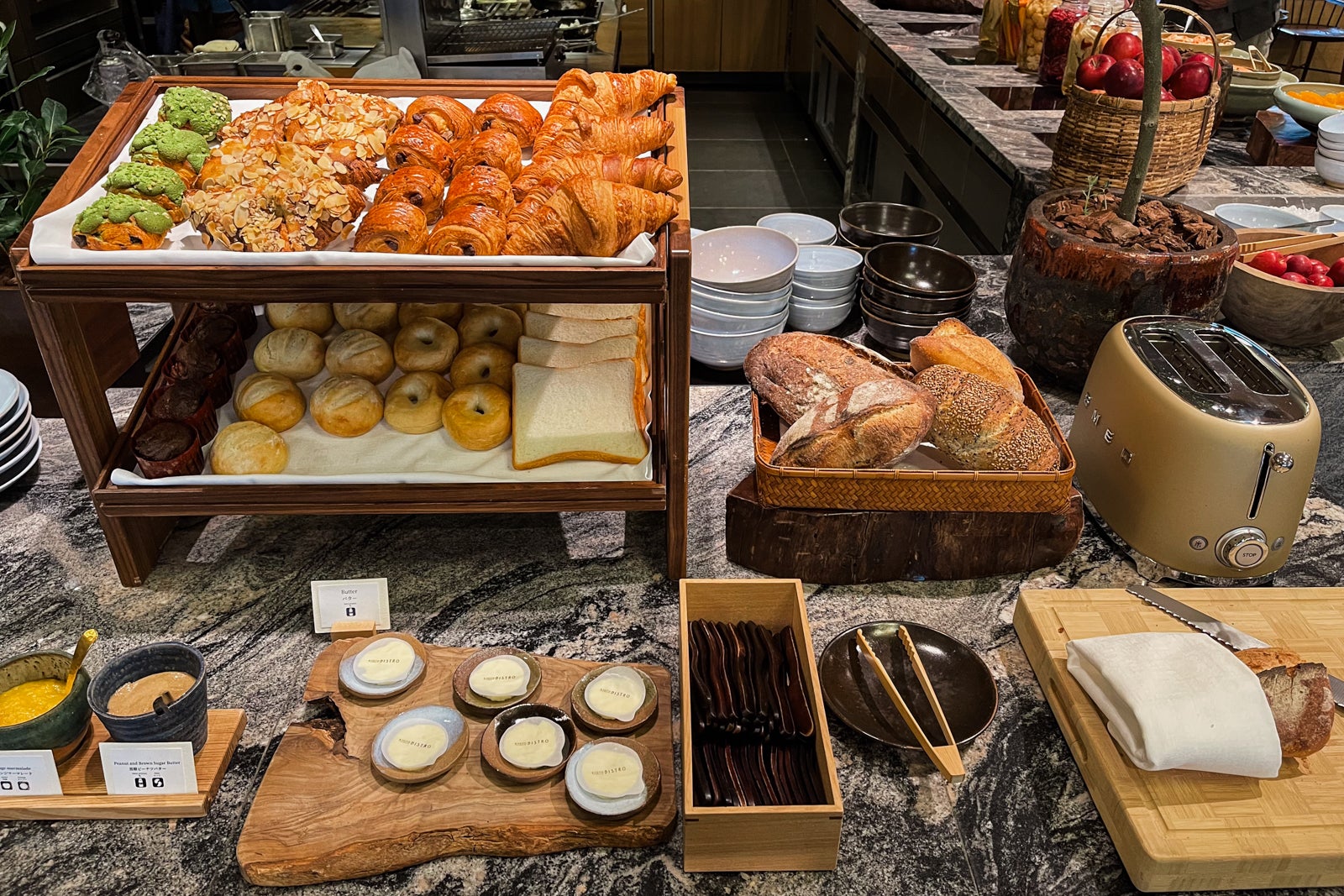
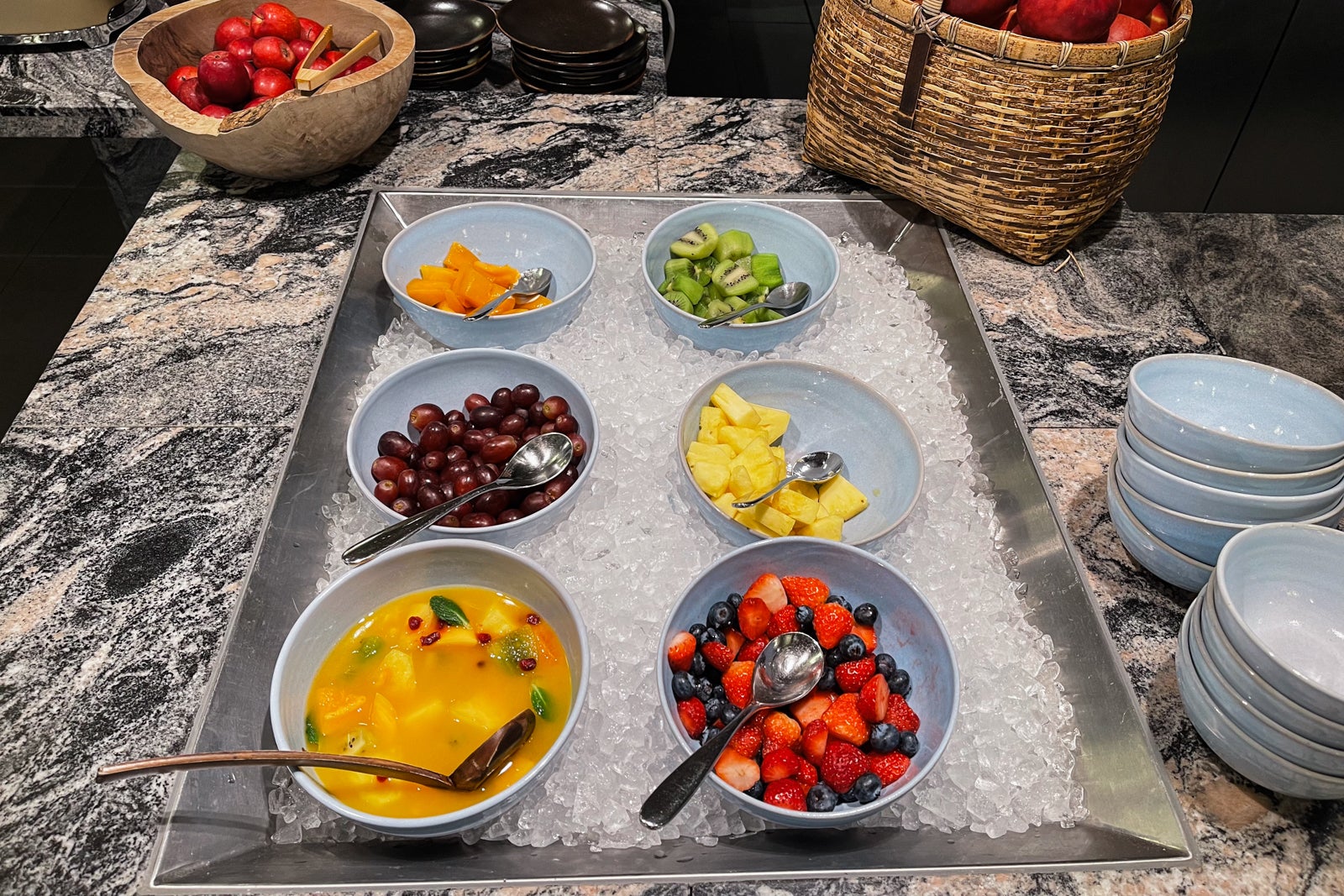
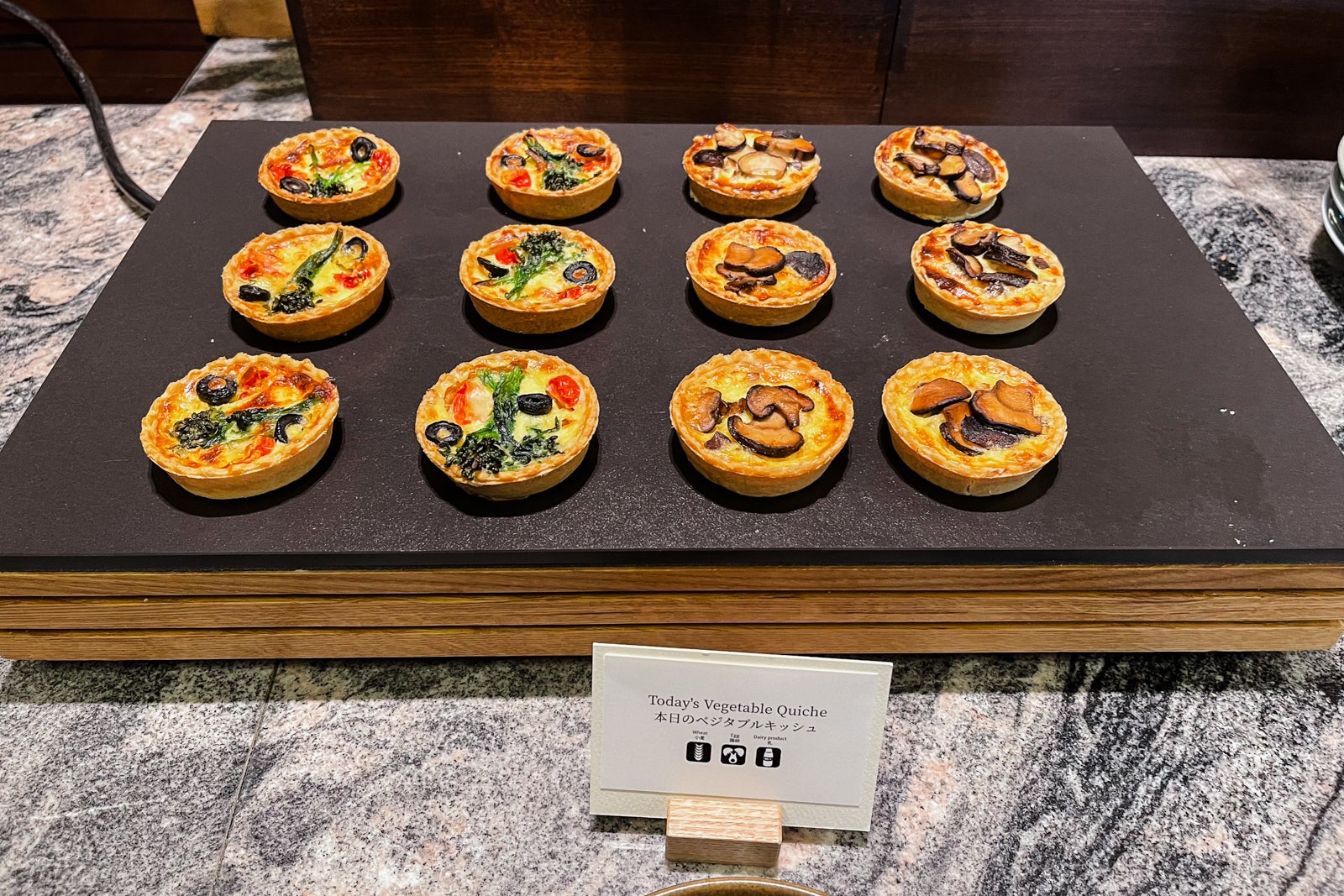
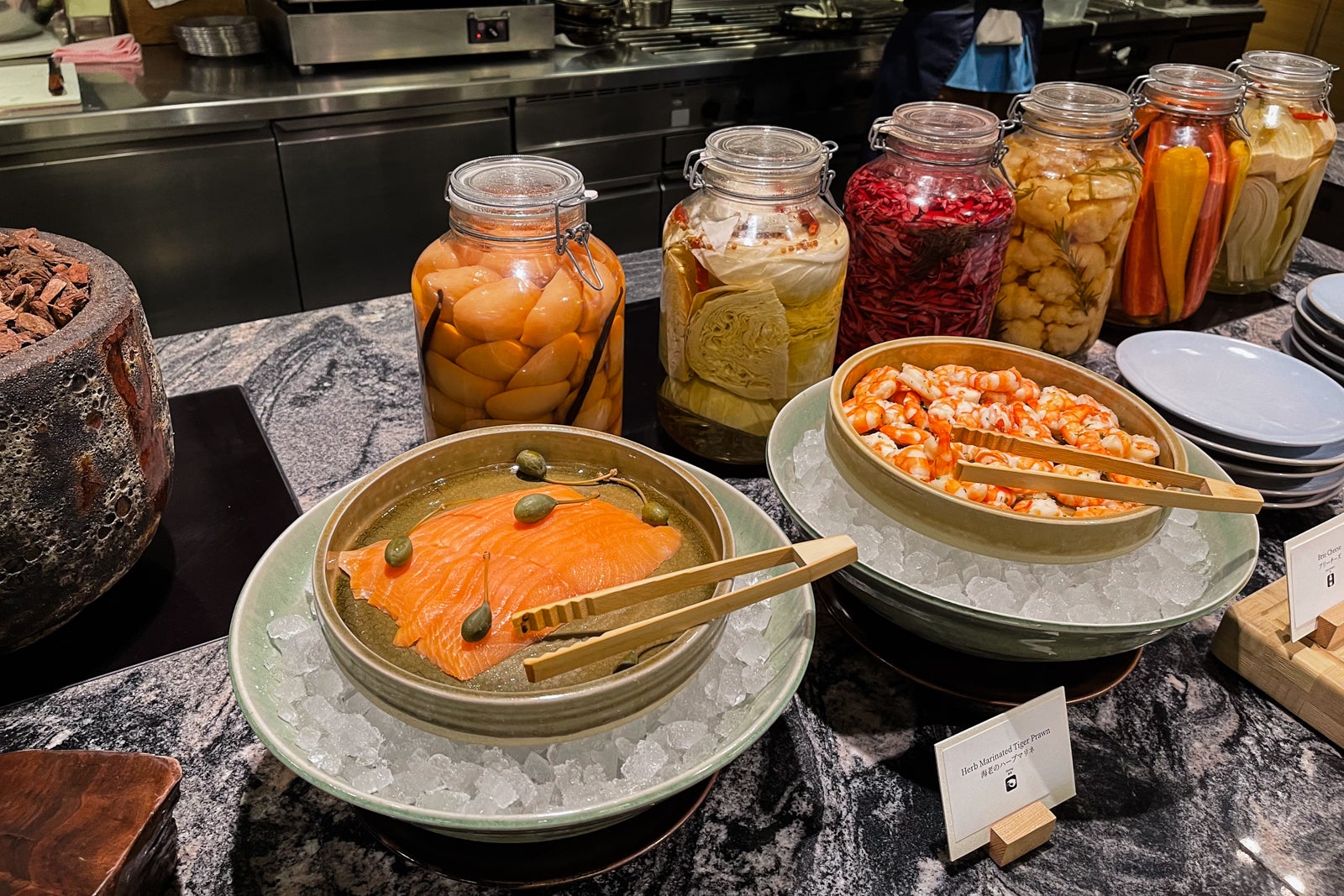
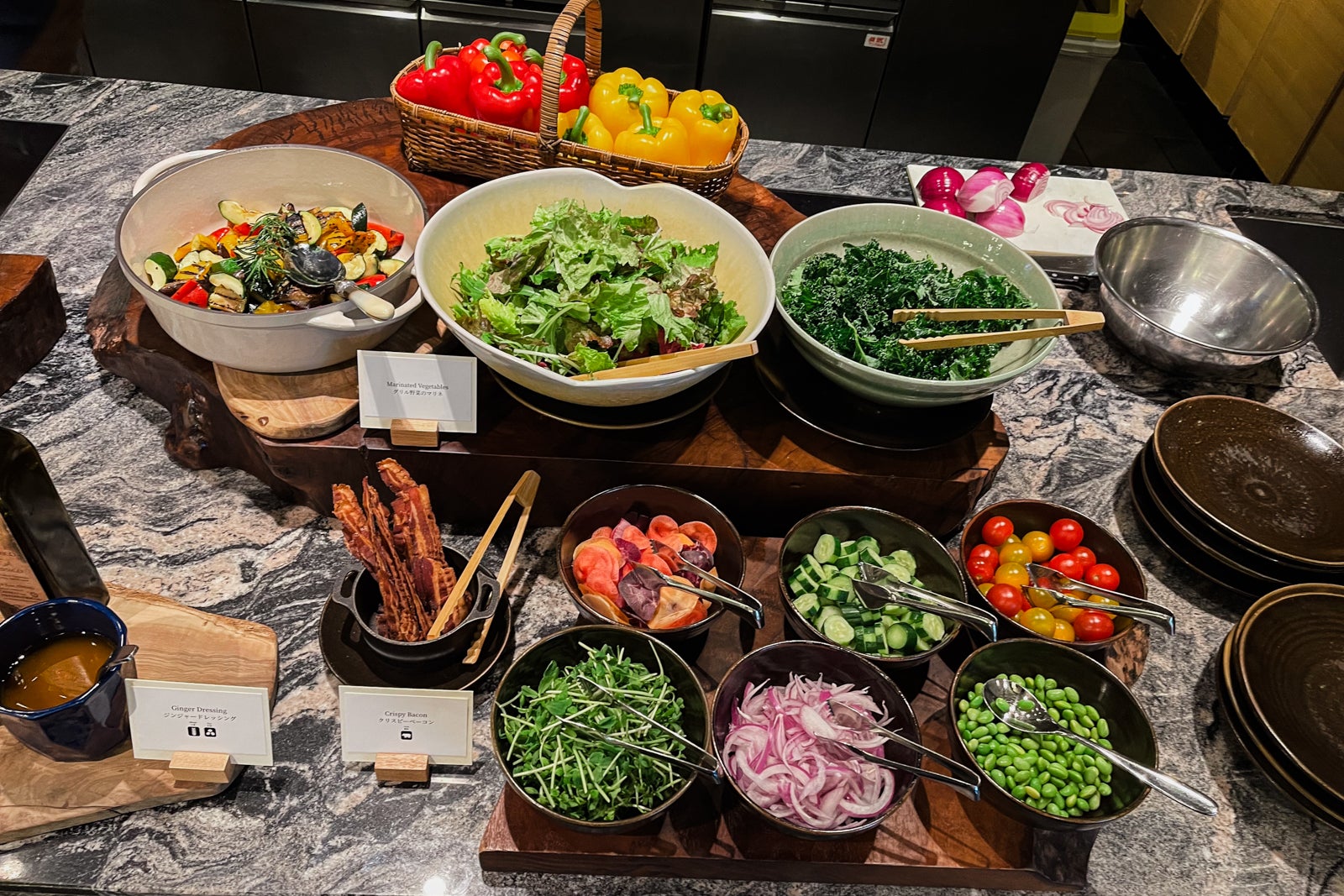
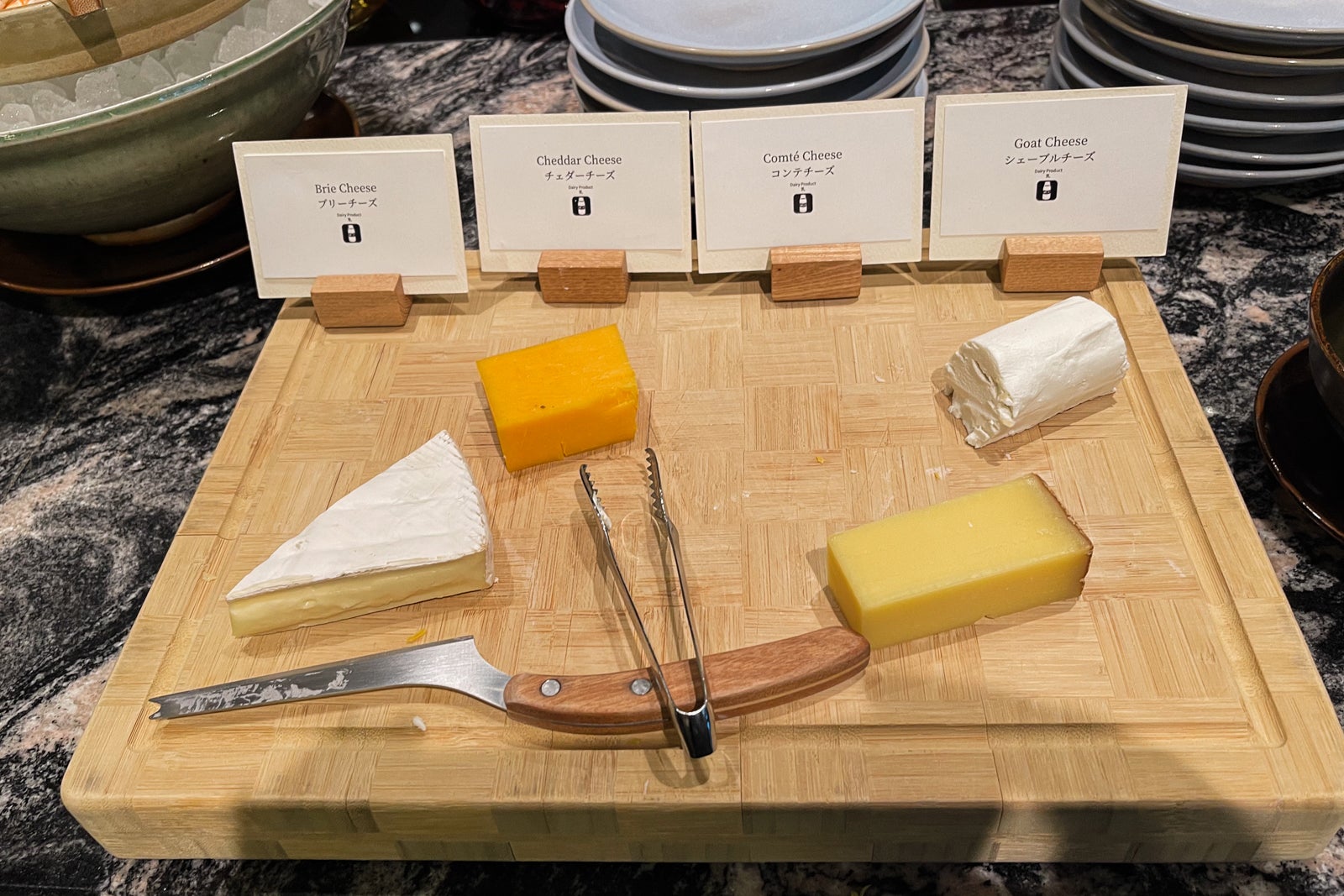
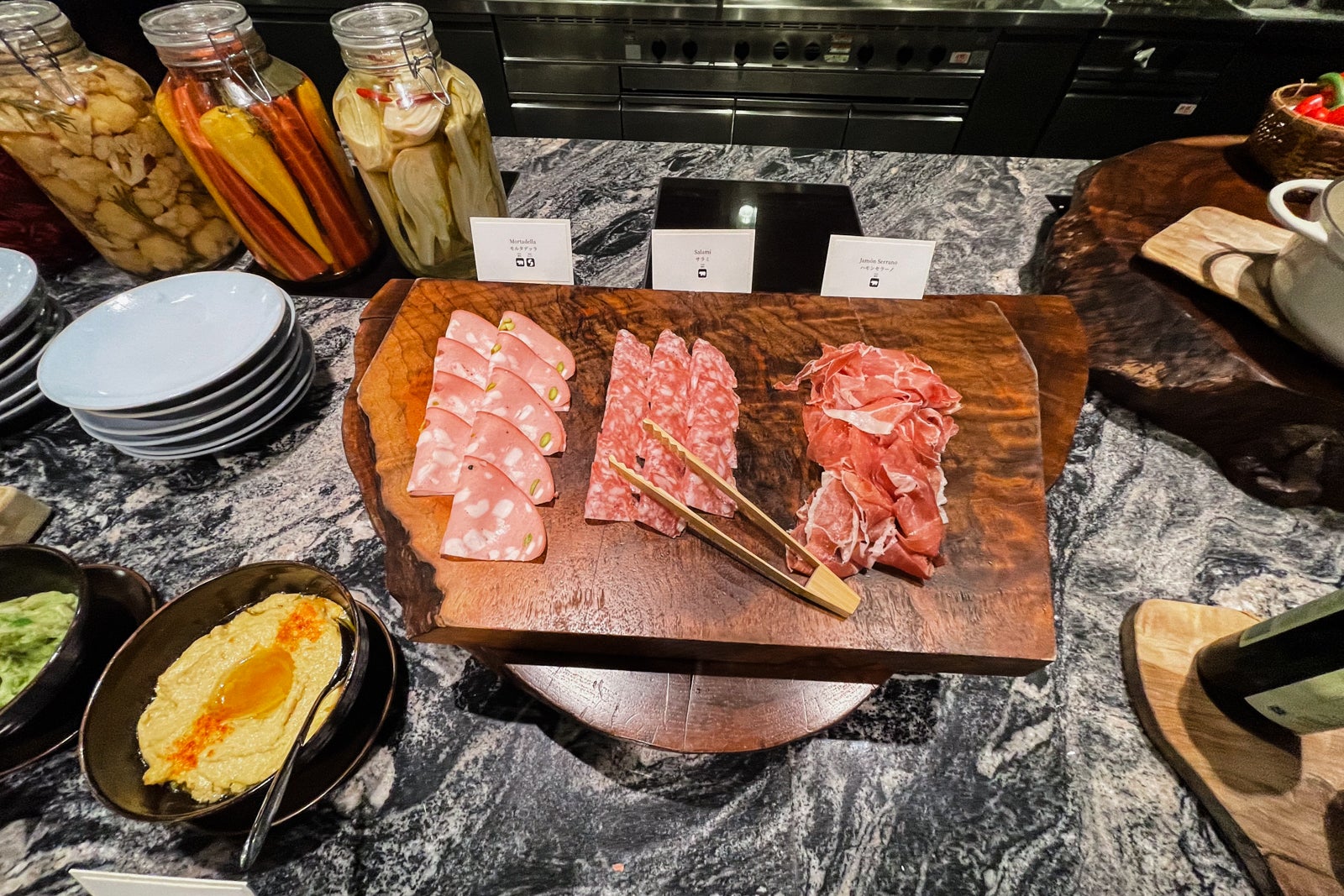
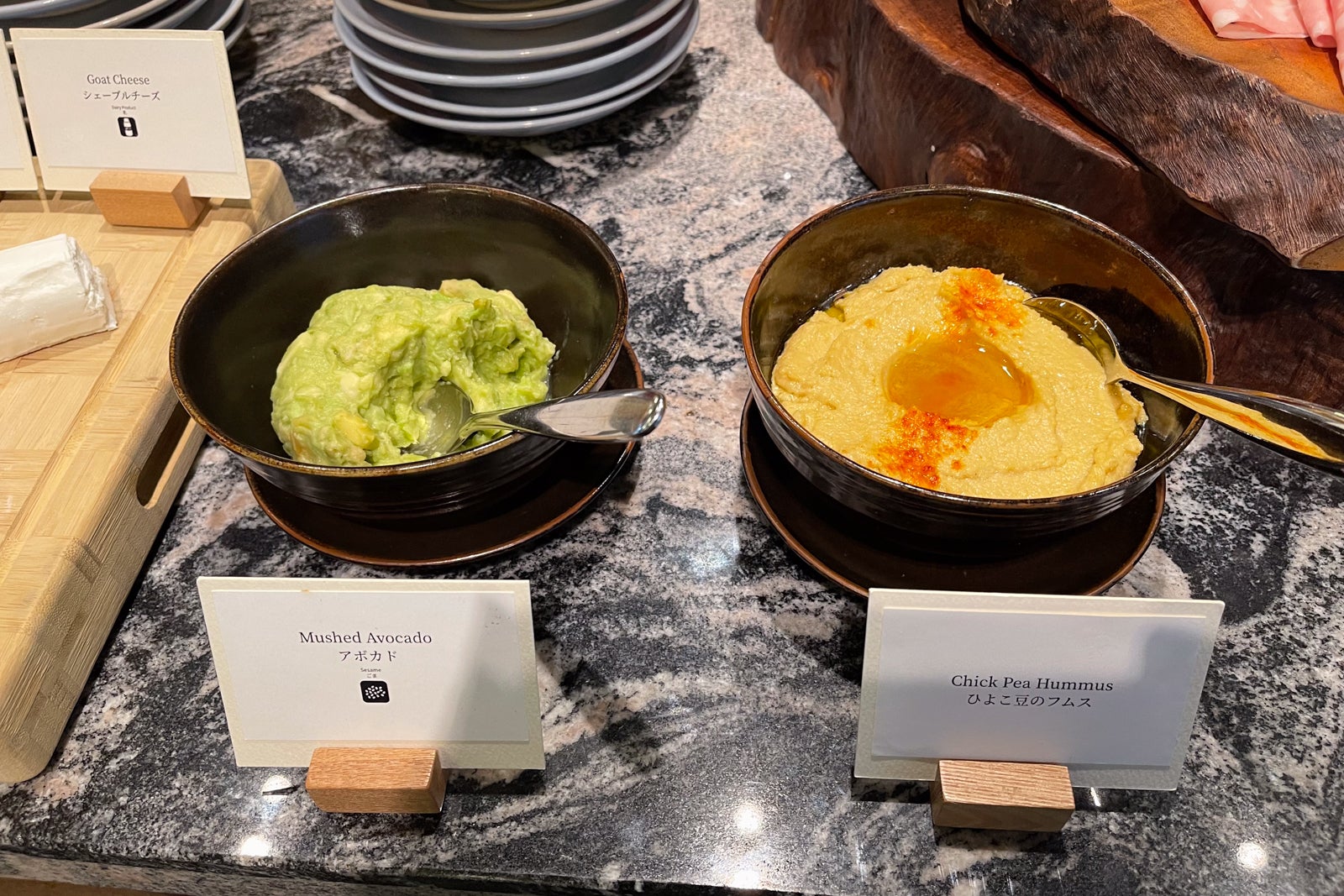
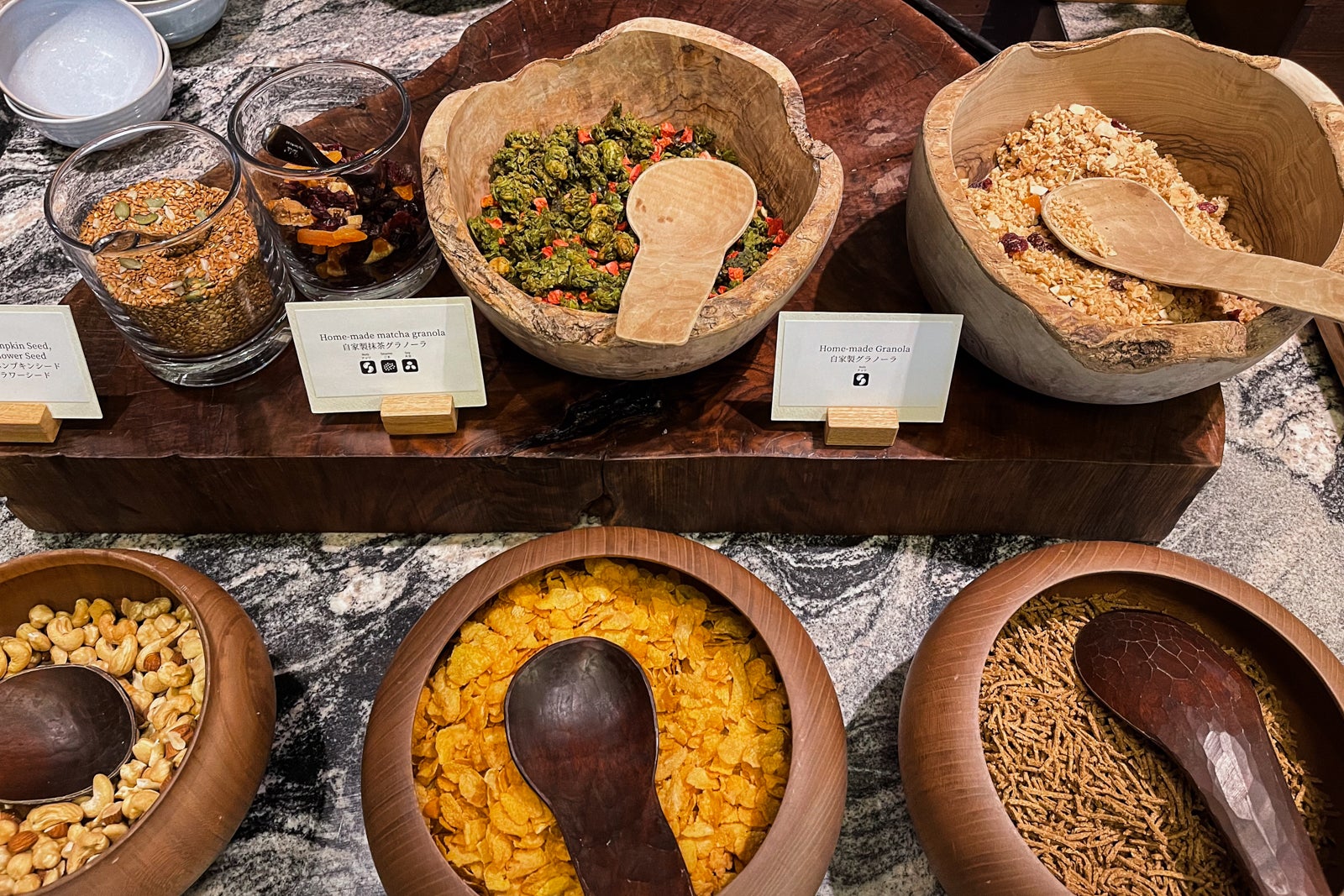
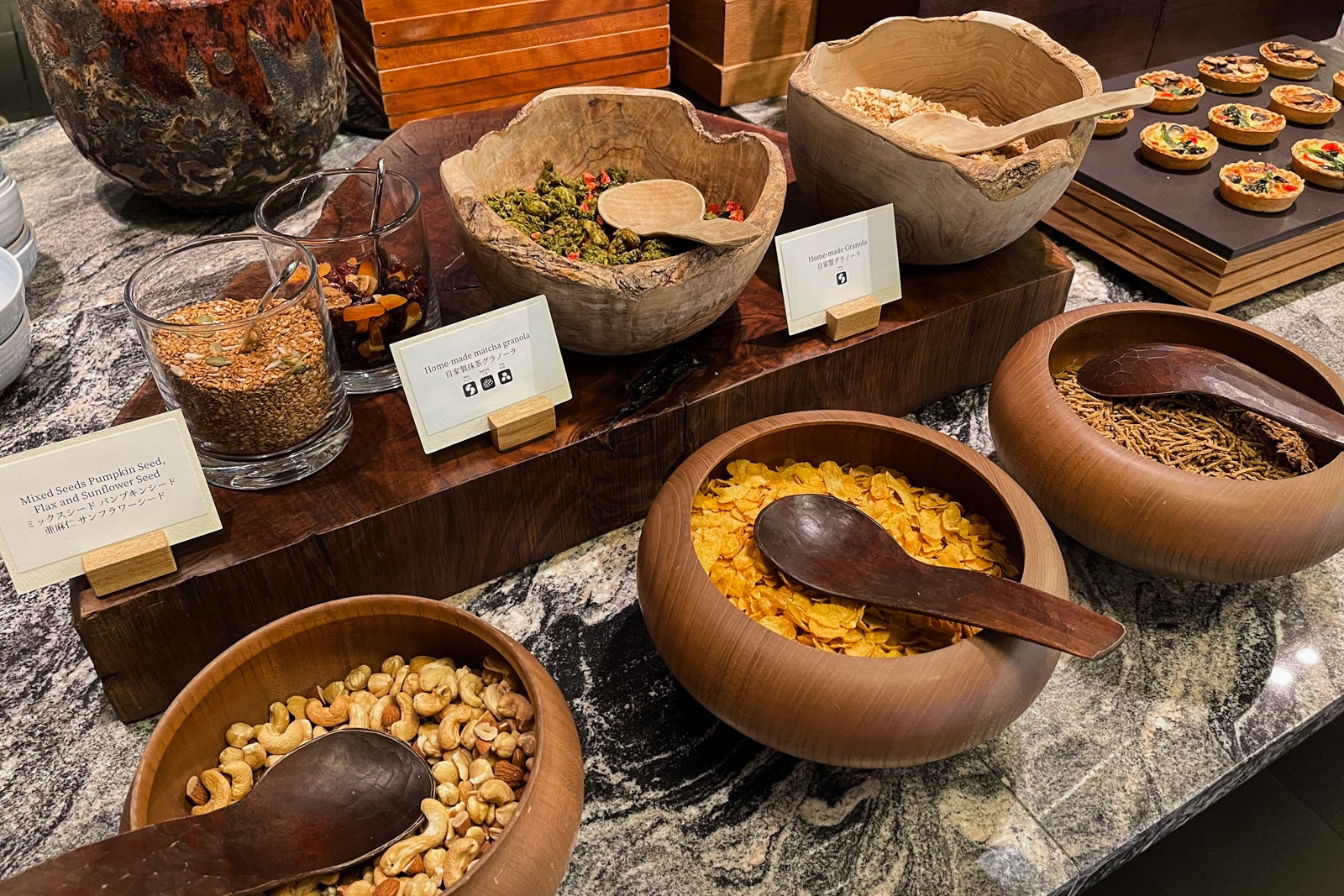
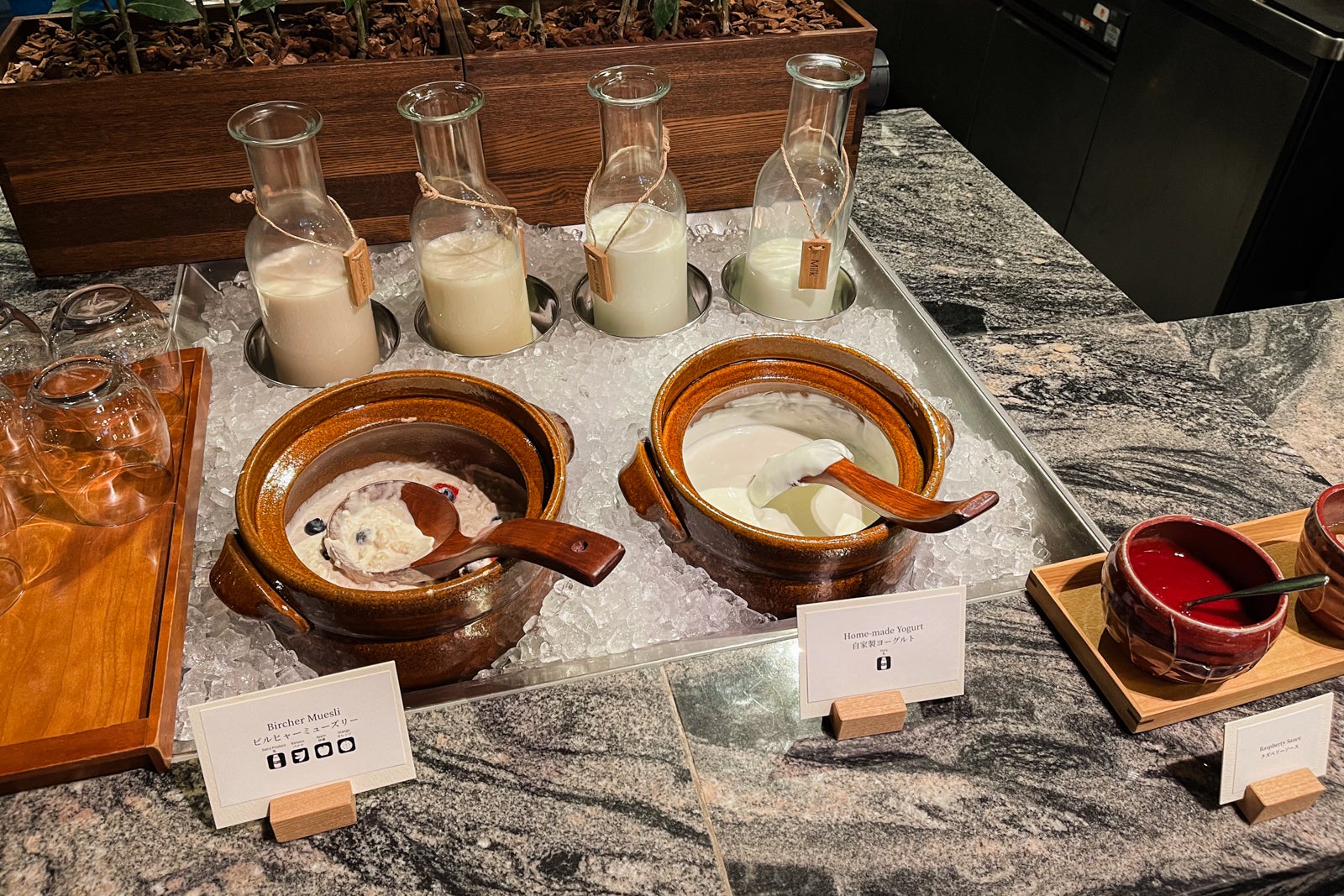
For a main dish, I tried the French toast with caramelized banana and maple syrup. Diners around us enjoyed the fried noodles with shrimp, chili and bonito flakes as well as the homemade yogurt, granola, fresh berries and dried fruit. Breakfast was the best meal we had here.
For those who enjoy local cuisine, go for the Japanese breakfast (7,150 yen or $45) prepared by Kyoyamato. Globalists can upgrade to the Japanese option for about $30 per person.
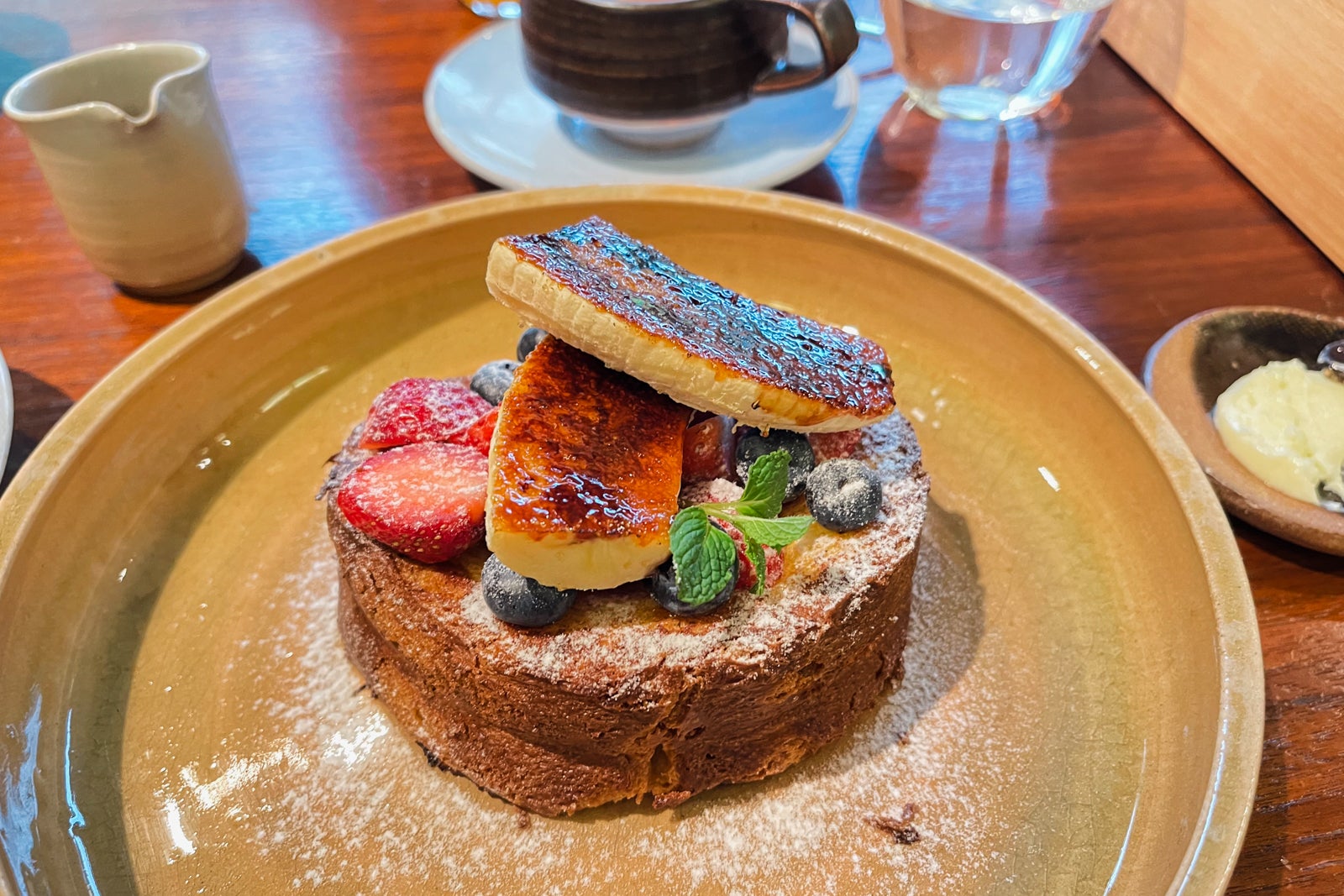
Lunch and dinner items include salads (garden, Caesar or grilled octopus salad), grilled wagyu sirloin with red wine sauce, and grilled Hiyoshi pork with chimichurri sauce. While the menu items appeal to a Western palate, the execution tends to be more of a Japanese spin on dishes. (For instance, the Caesar salad dressing tasted novel and delicious, but perhaps not the same as in the U.S.) So, don’t take the menu literally.
At lunchtime, you can order a la carte or opt for a 4,400 yen ($29) three-course meal. It includes an appetizer; choice of main, including linguine with shrimp and flying fish in a tomato cream sauce, fusilli with vegetables in a Genovese sauce, a cheeseburger, Wagyu beef curry rice or butter chicken curry rice; dessert; and coffee or tea.
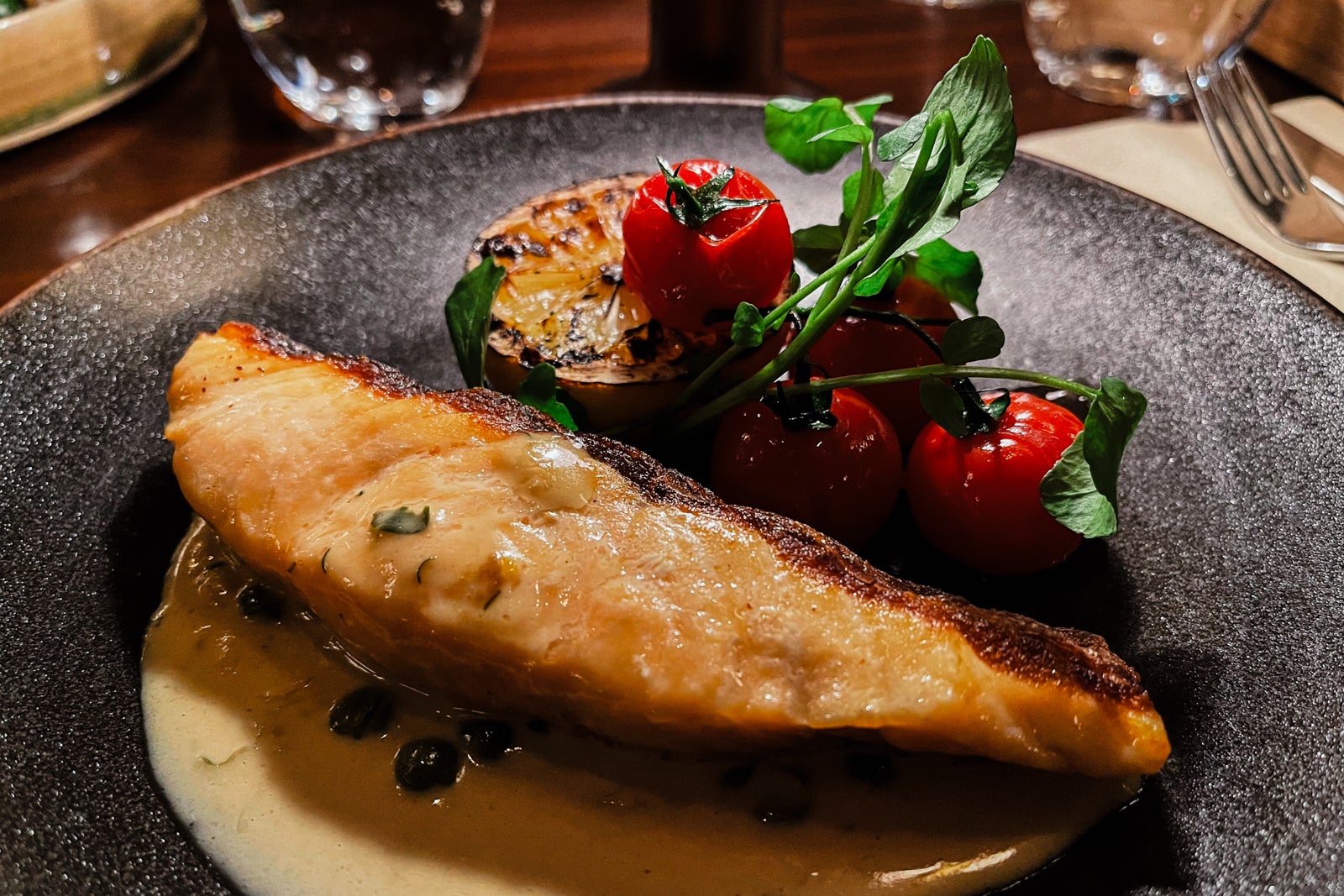
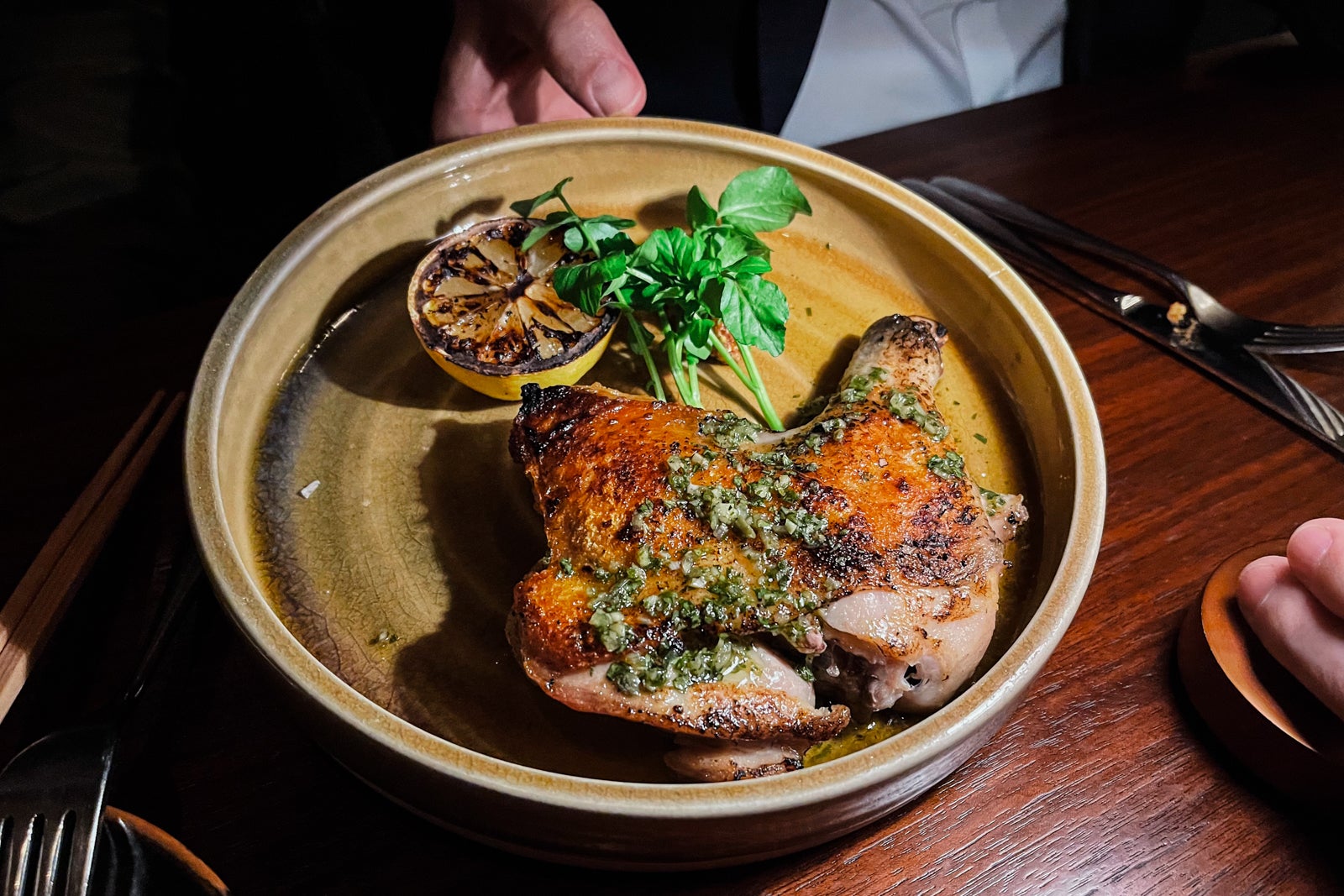
My favorite aspect of the bistro, though, was the bakery counter where you could pick up a dessert and drinks — such as bottles of wine, Champagne and sake — to enjoy in your room. The wines included bottles from Craggy Range, Au Bon Climat, Girard, Clos Floridene, Ruinart and others.
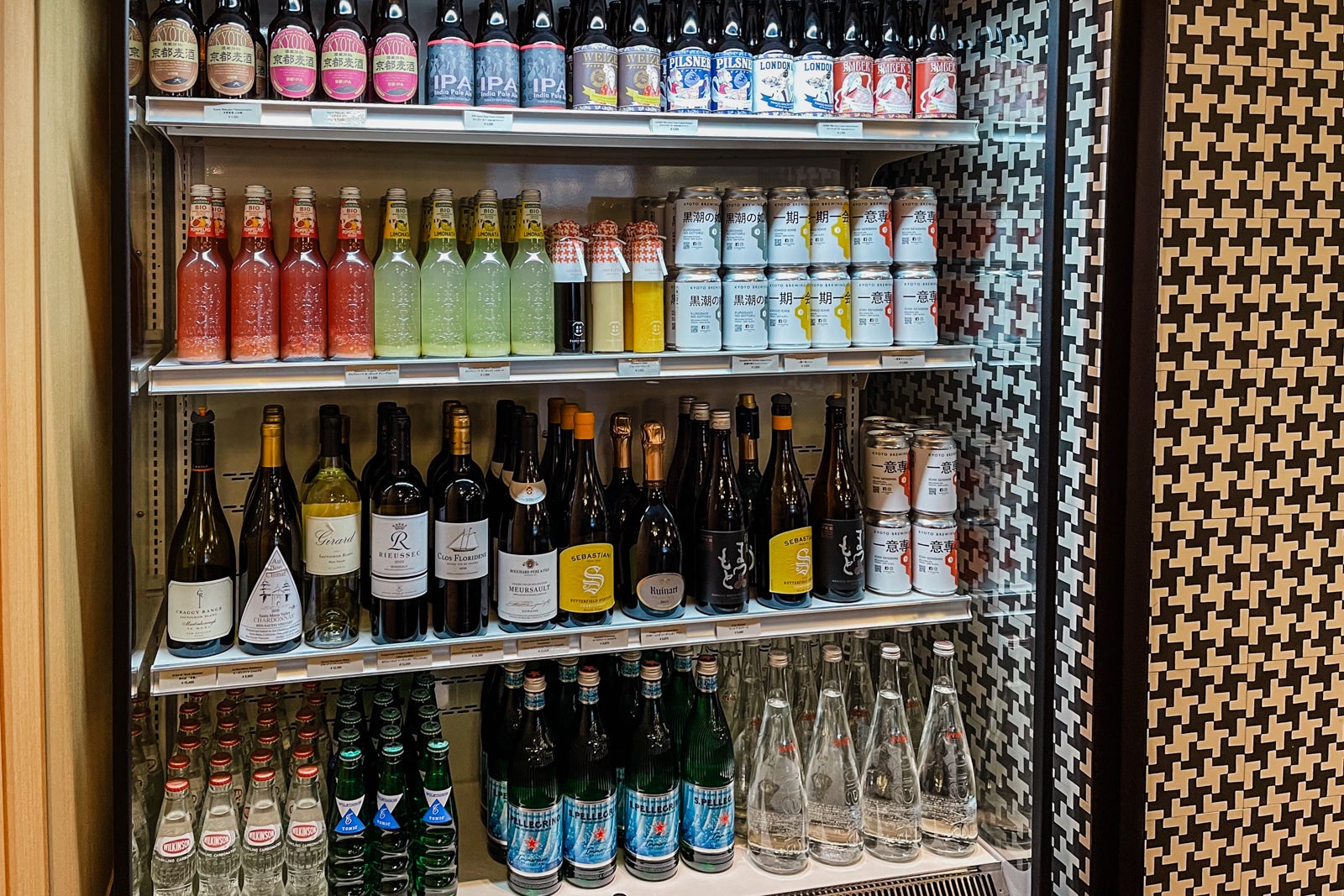
I especially enjoyed the Earl Grey tea and whiskey pound cake. My husband appreciated the a Kyoto Brewing beer in the refrigerated case.
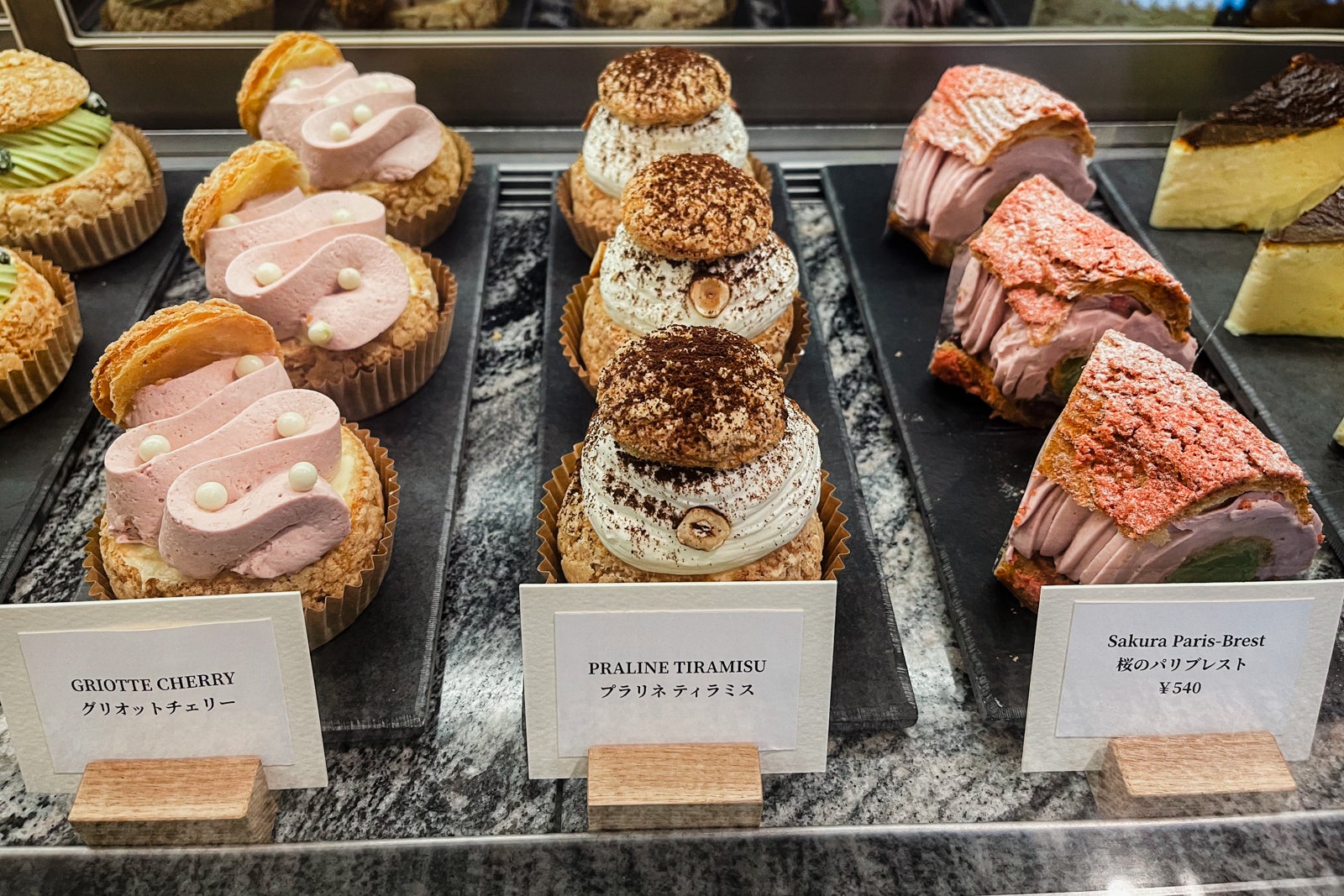
You can enter the bistro from the hotel’s main entry hallway or from an exterior door leading to Ninenzaka (street).
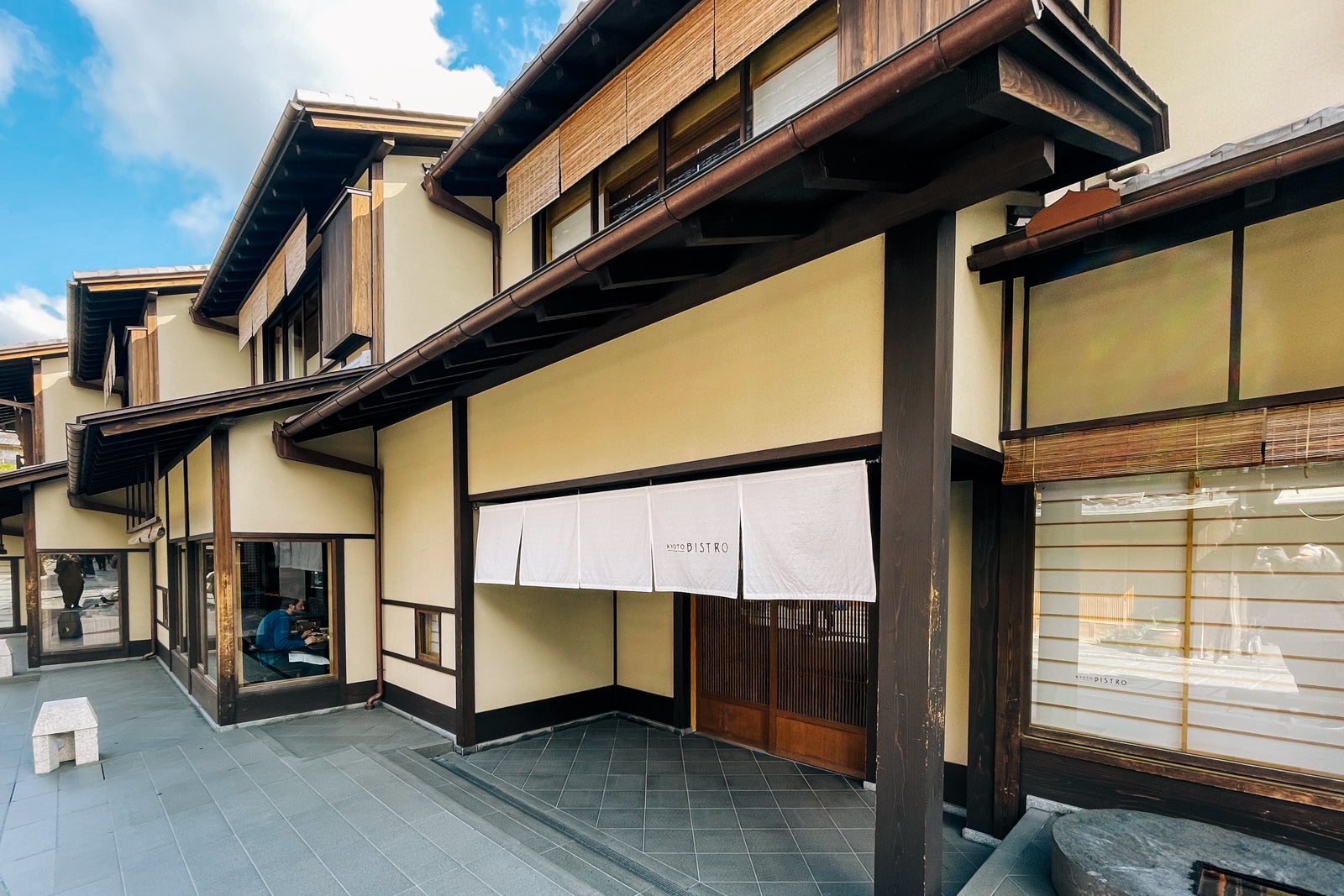
The Living Room
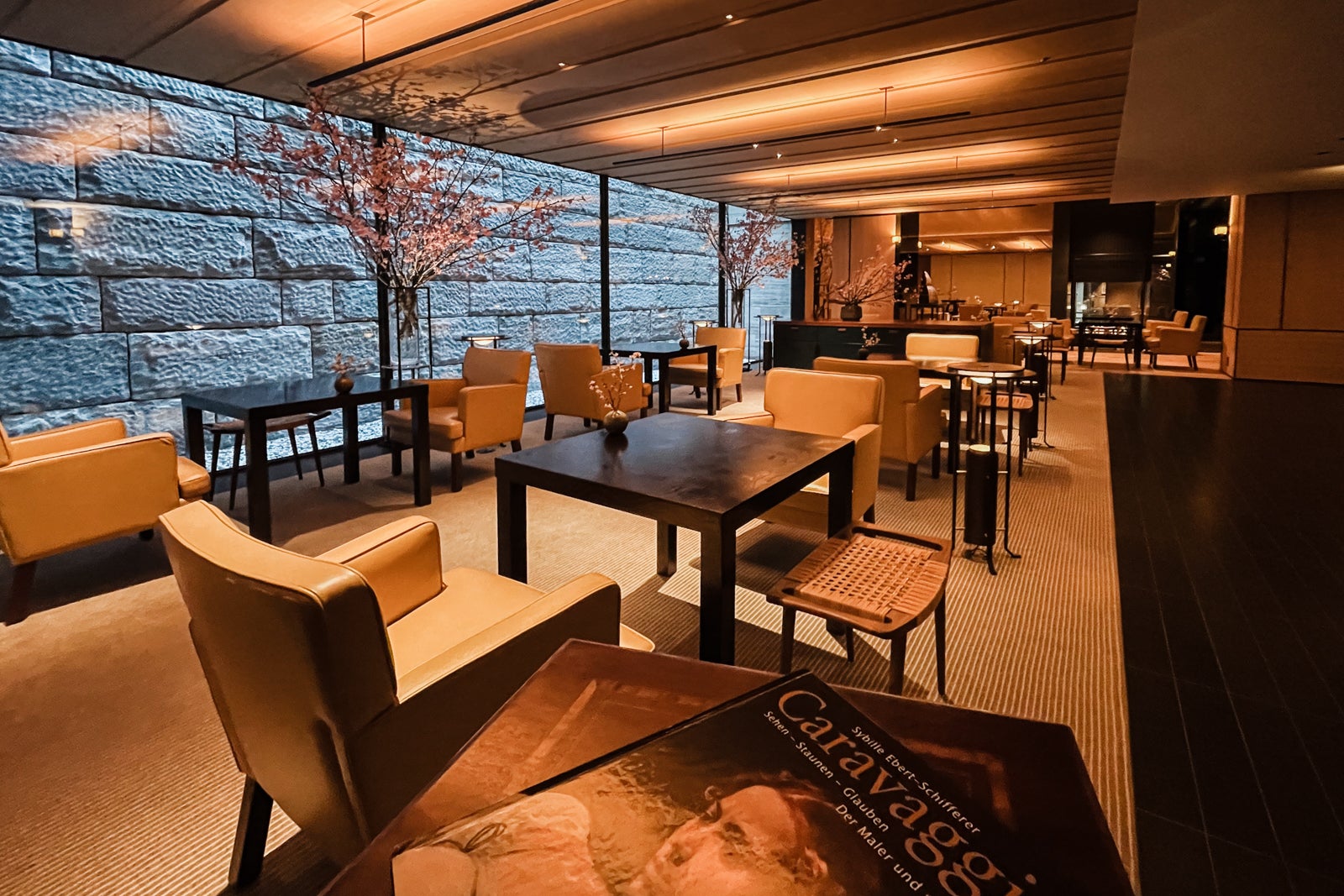
If you love afternoon tea, head to The Living Room from noon to 5 p.m. daily.
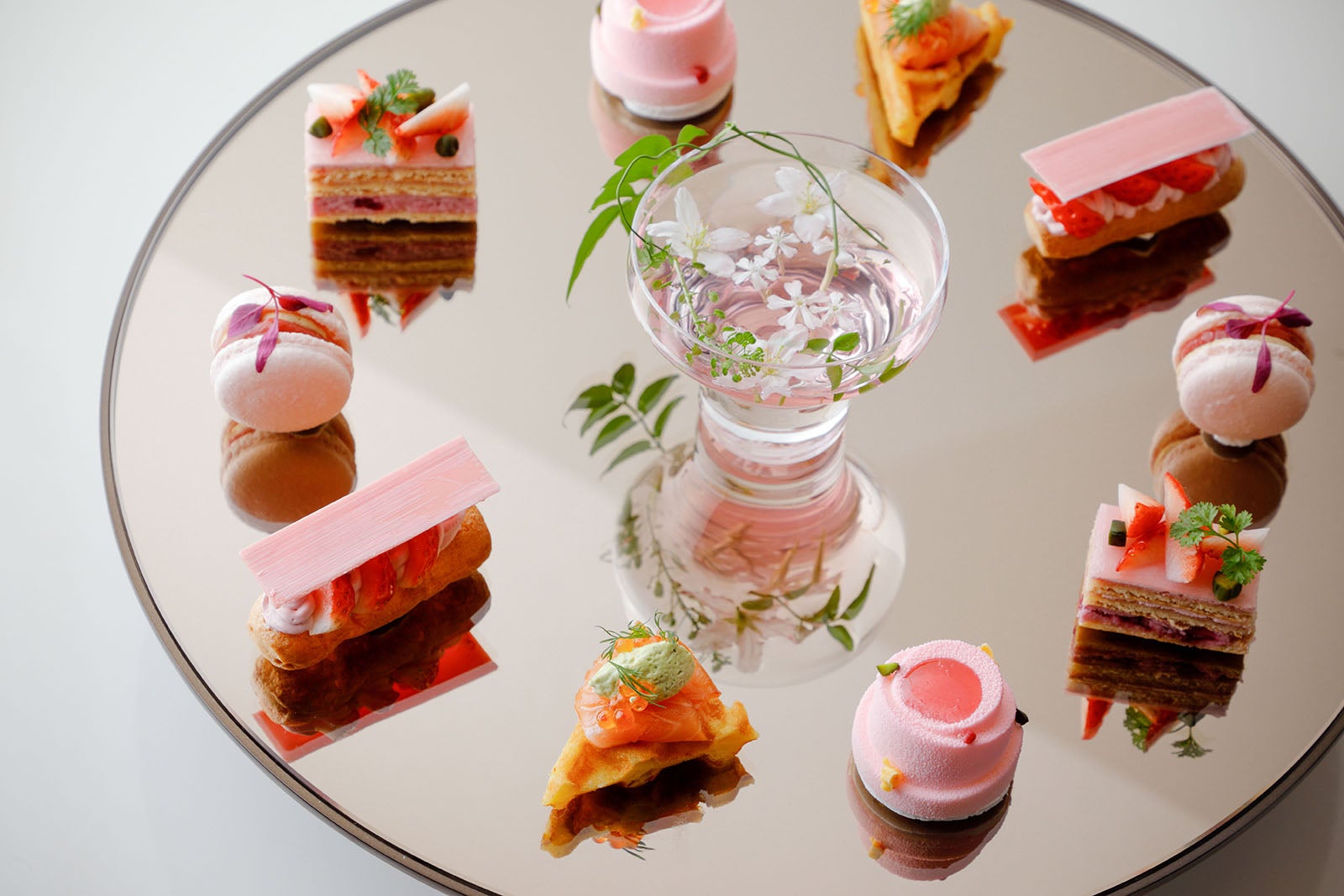
A five-course menu changes with the season but offers inventive items such as spring pea and caviar tart, matcha and strawberry Opera, foie gras macaron with strawberry and rhubarb jam, Alps salmon potato waffle, strawberry mousse and strawberry eclair. This experience costs 6,600 yen ($42) per person.

In the same venue, you can order light meals from noon until 5 p.m. (and desserts until 7 p.m.) When we visited, some of the standout items included white asparagus soup, Caesar salad with Kyoto Tamba chicken, a club sandwich and gnocchi with Pomodoro sauce.
Globalists and those who book suites receive complimentary Champagne in The Living Room each night from 5 to 6 p.m.
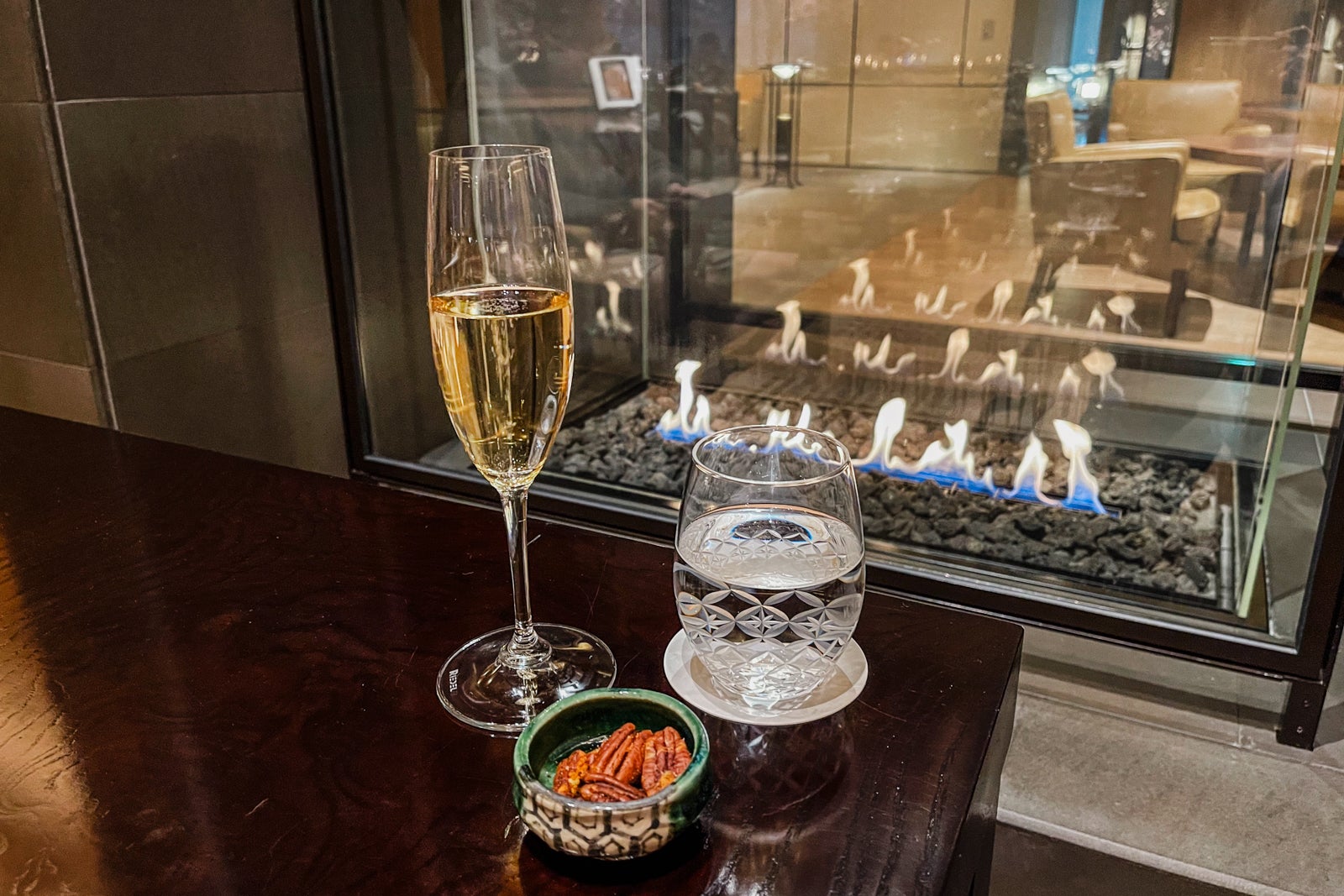
Tea Lounge
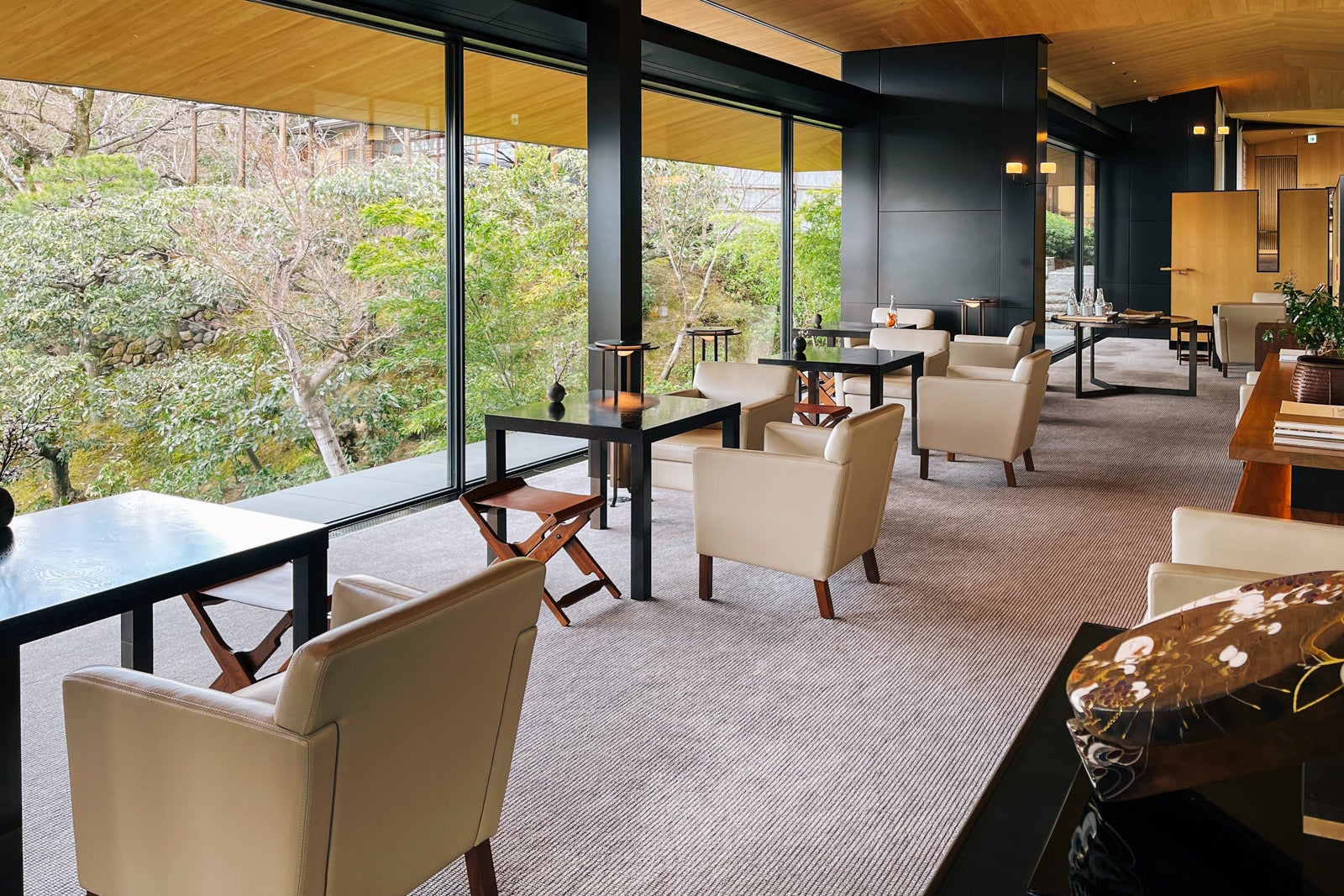
There is a second tea lounge on the fifth floor. This was a more casual spot to hang out, with a pared-down menu.
Bars
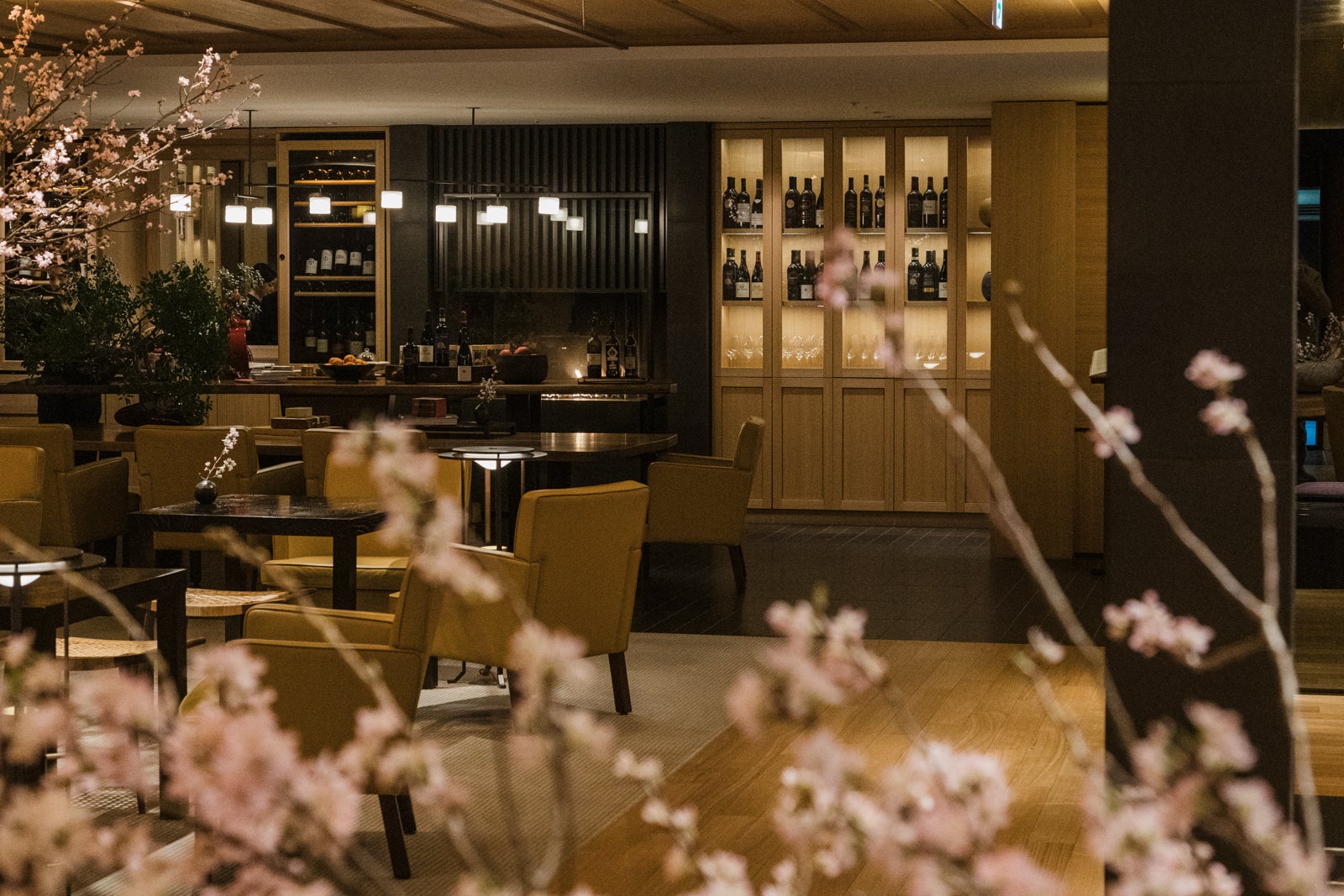
The Living Room fluidly transitions to the Wine Bar (open from 5 to 9 p.m.).
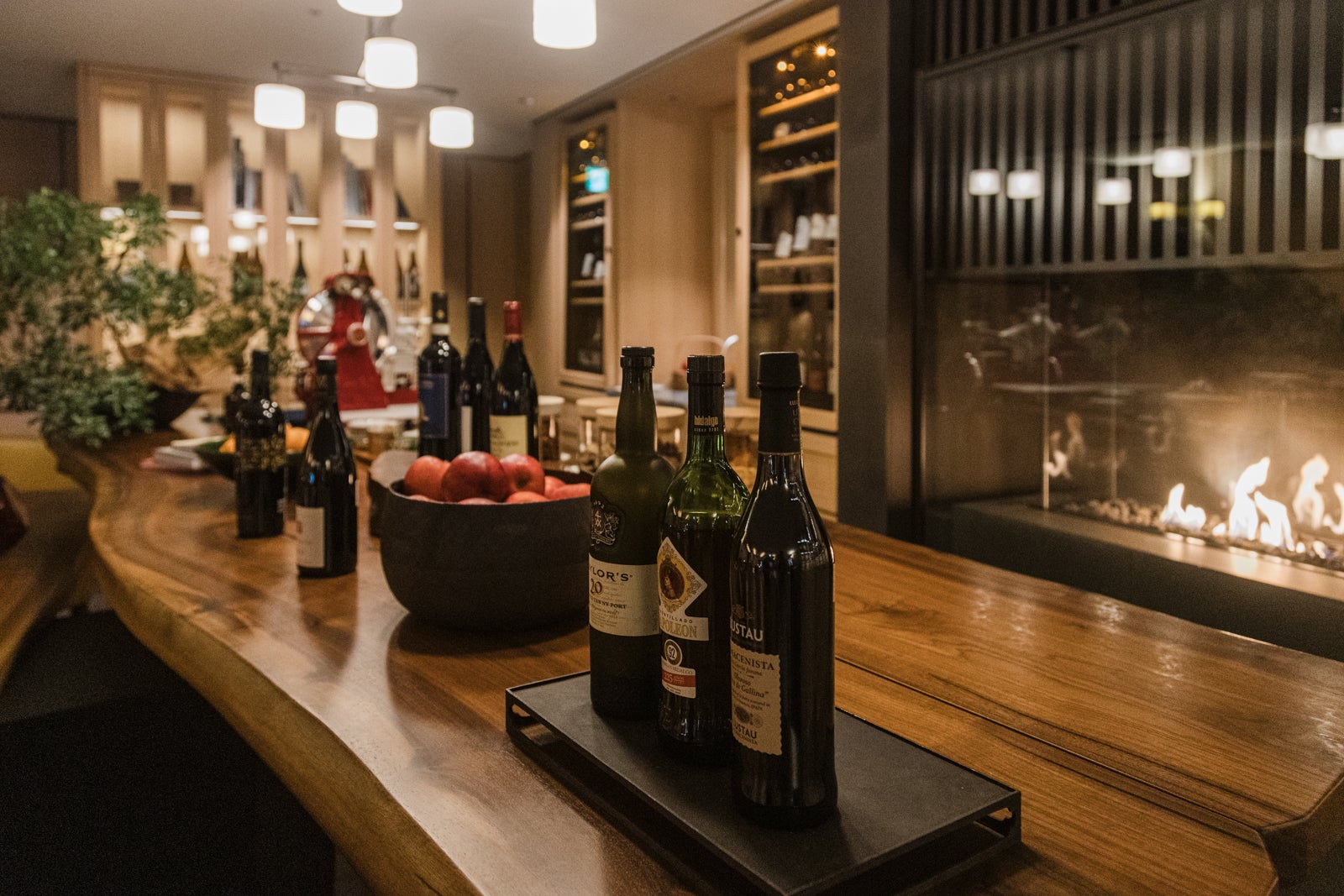
Enjoy wines by the glass or bottle, or book a cheese and wine pairing experience, where the cheese is curated from purveyor Herve Mons. The event includes three kinds of wine and local cheese for 4,950 yen (about $31) per person.
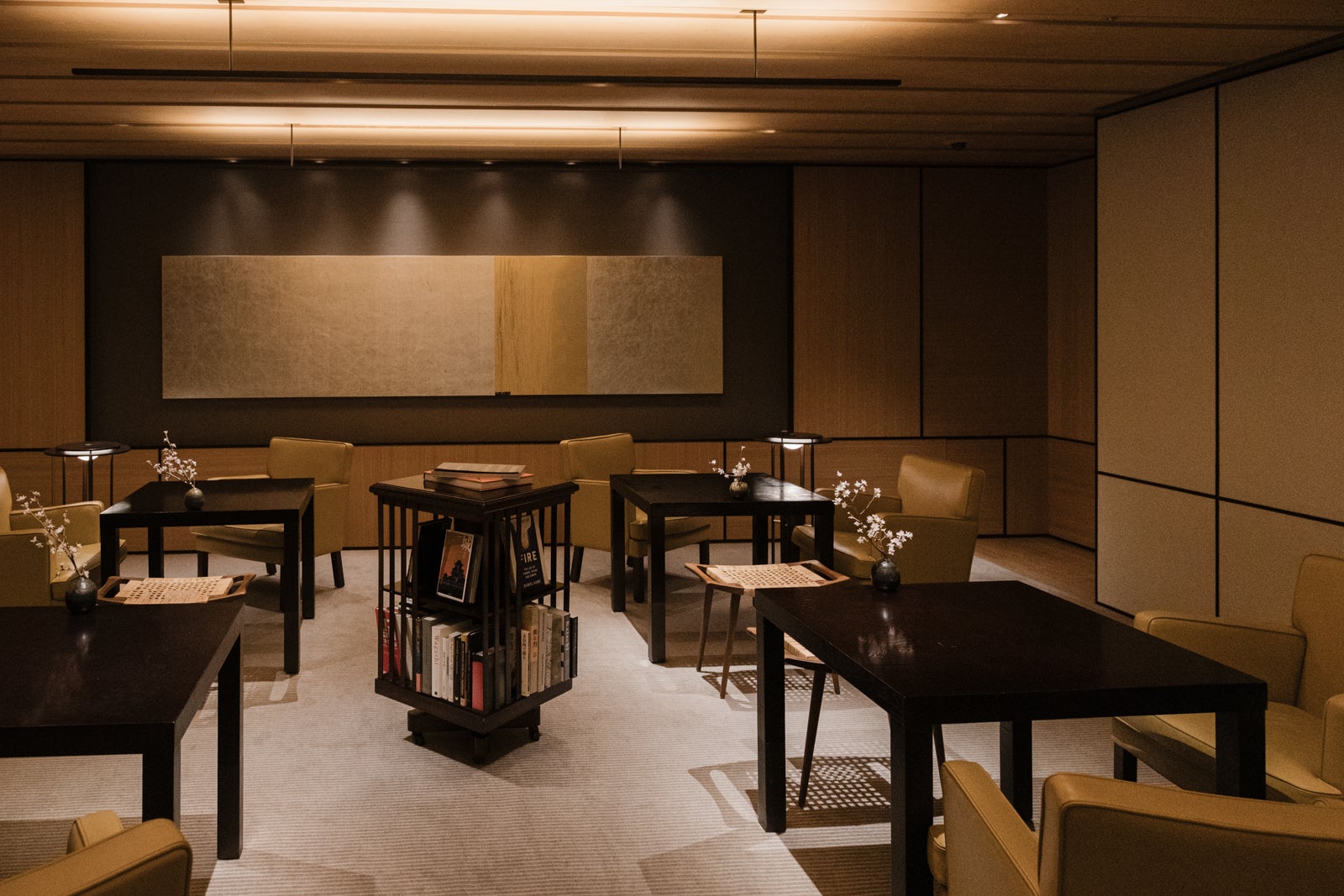
Kohaku is the hotel’s second bar, and it’s tiny. It’s mainly a spot where Yasaka diners can grab a drink before or after their teppanyaki meal.
Amenities and service
Like most Park Hyatt hotels, this one offers several free and for-fee experiences.
Concierge
If you don’t have time to plan your Kyoto visit, it’s not a terrible idea to contact the concierge for advice. The concierge team can book all sorts of things on your behalf, including a rickshaw tour (16,000 yen or $101 per person) or a private driver and tour guide.
If you have time, book the exclusive 90-minute tour of the UNESCO World Heritage Site Kiyomizu-dera Temple.
“This special experience includes a sermon by the head priest, a tour of areas not typically open to the public and time of tranquility in front of a garden that has been off-limits. Please enjoy deep learning and new discoveries about Kiyomizu-dera Temple while exploring the main hall and temple grounds with the head priest,” according to the hotel. You’ll pay 18,150 yen ($115) per person.
Would you prefer a kaiseki lunch and tea ceremony? For 132,000 yen ($863) for two people, you’ll enjoy an appetizer, soup, sashimi, grilled dish, side dish, simmered or steamed dish, rice and fruit at Michelin-starred Soyotei followed by a traditional tea ceremony at Koro-an.
Fitness center
The hotel also houses a small fitness center on the third floor with TechnoGym equipment (treadmills, weights and more). There’s also a spa on the third floor that offers appealing treatments using traditional Japanese rituals and therapies.
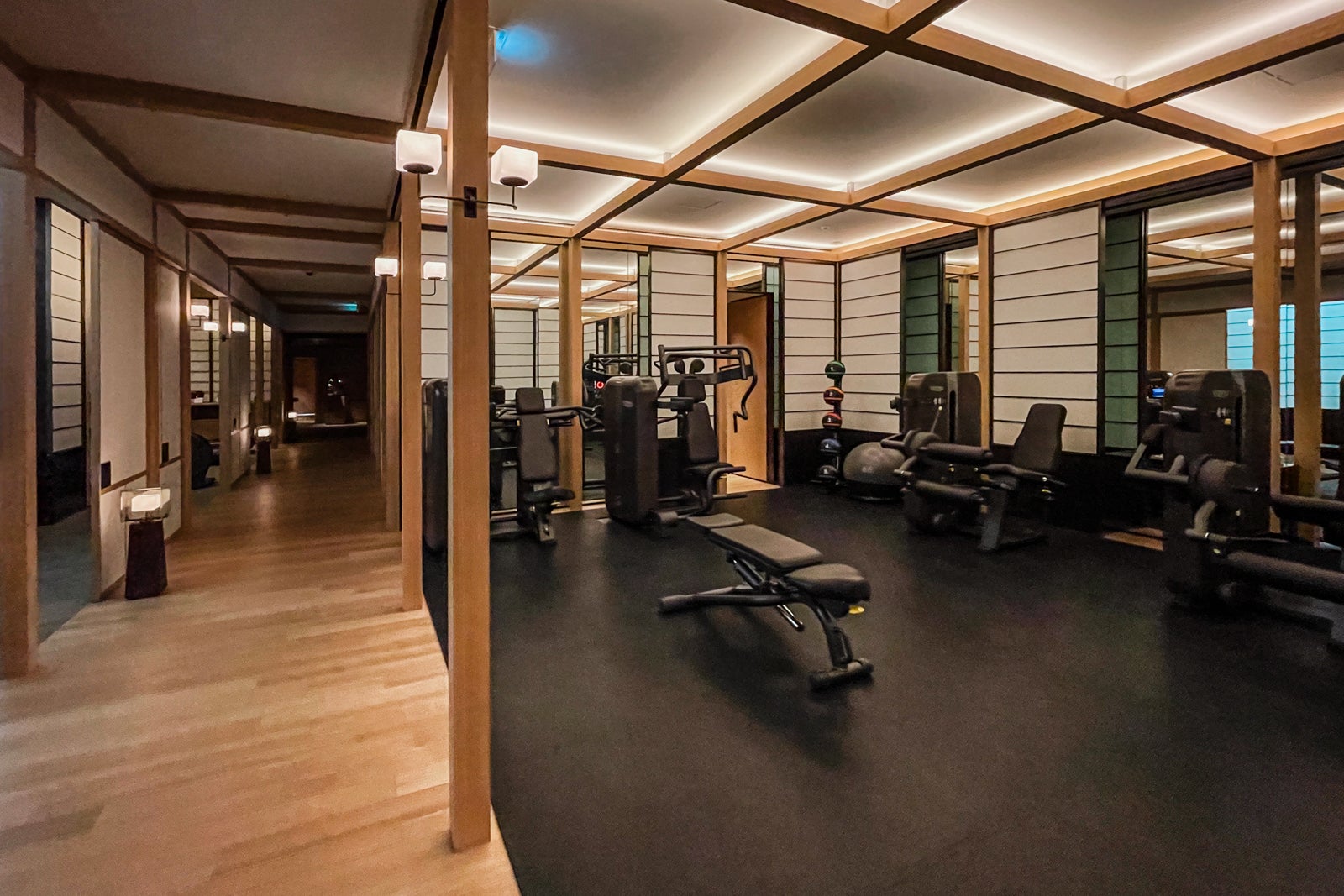
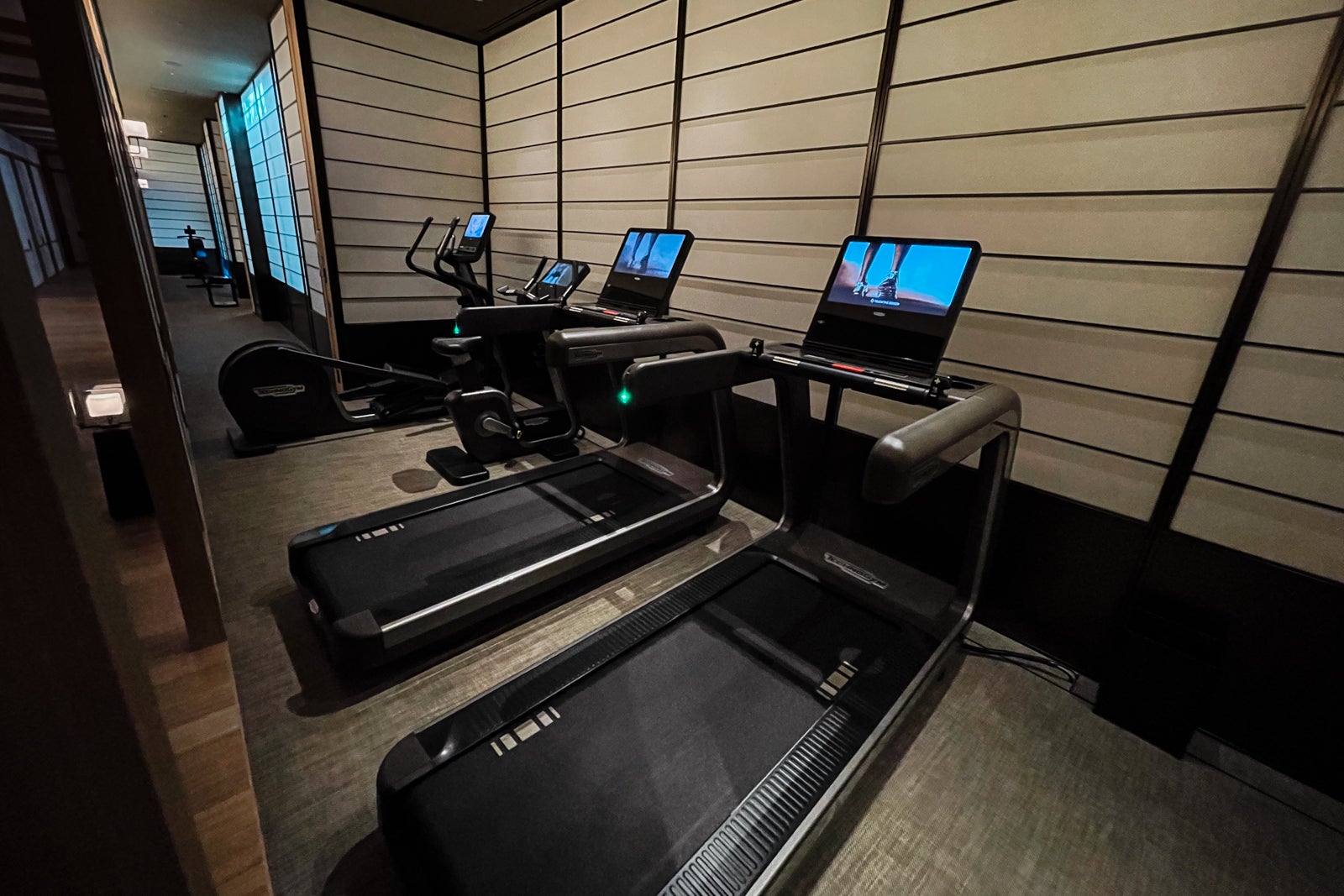
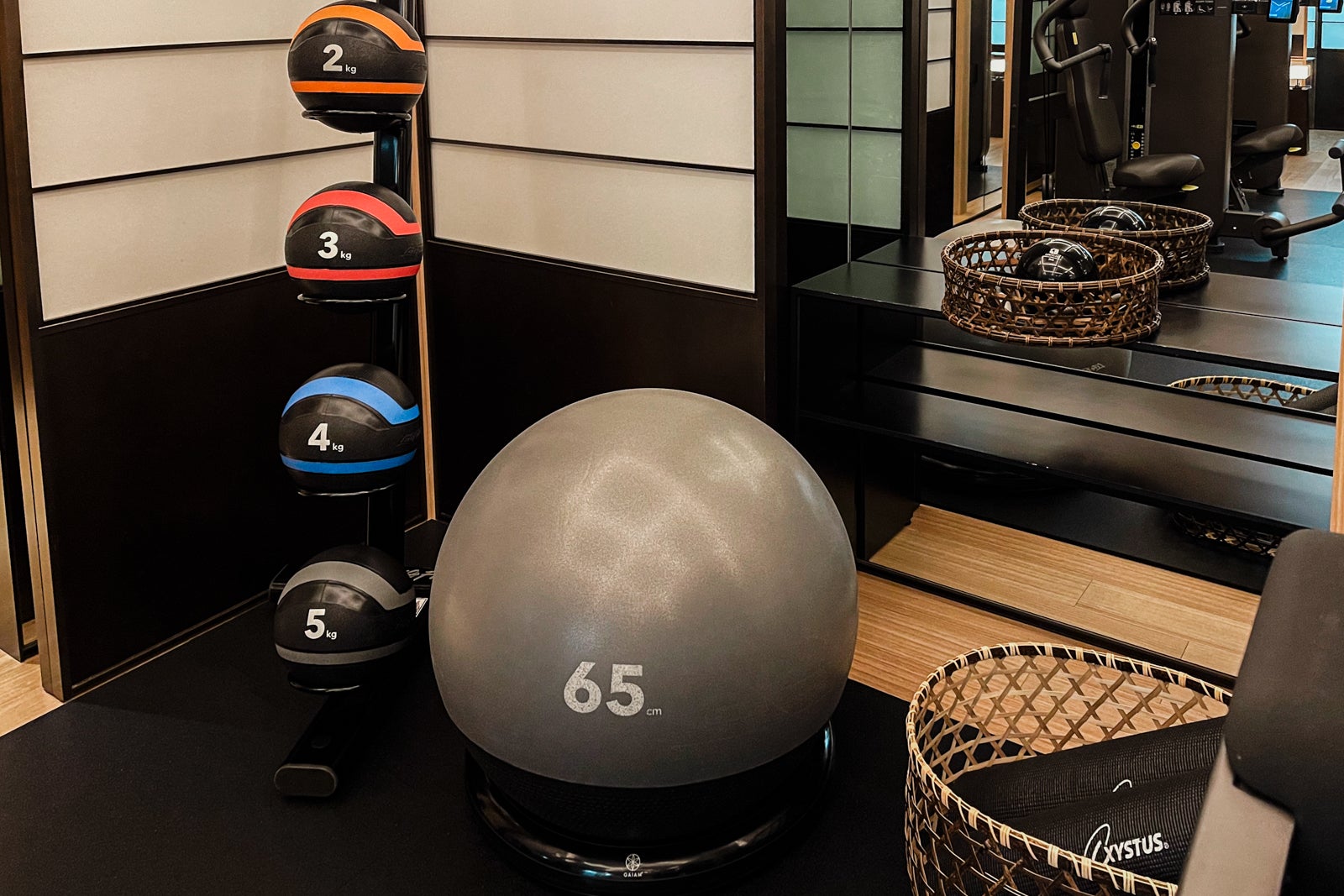
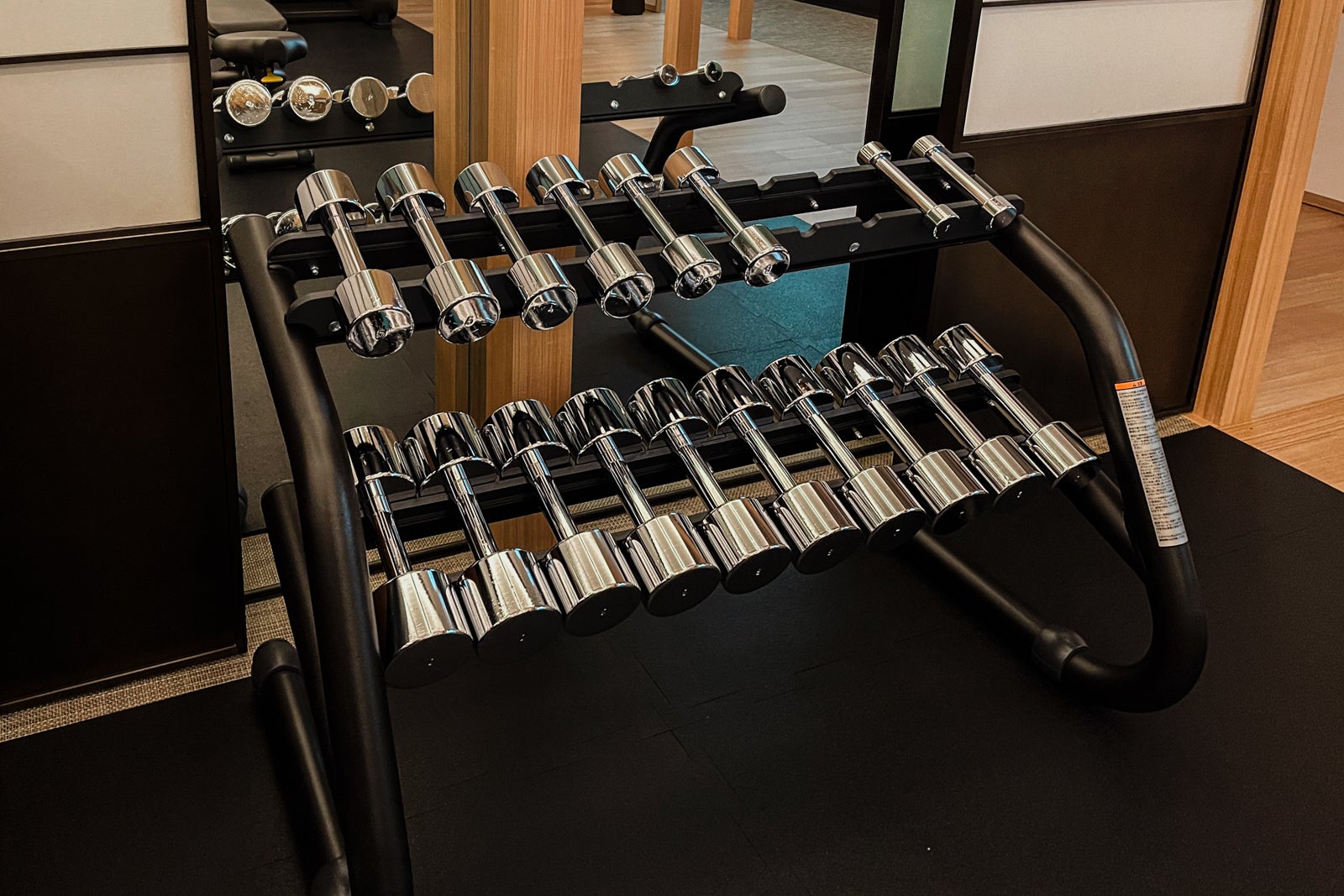
Spa
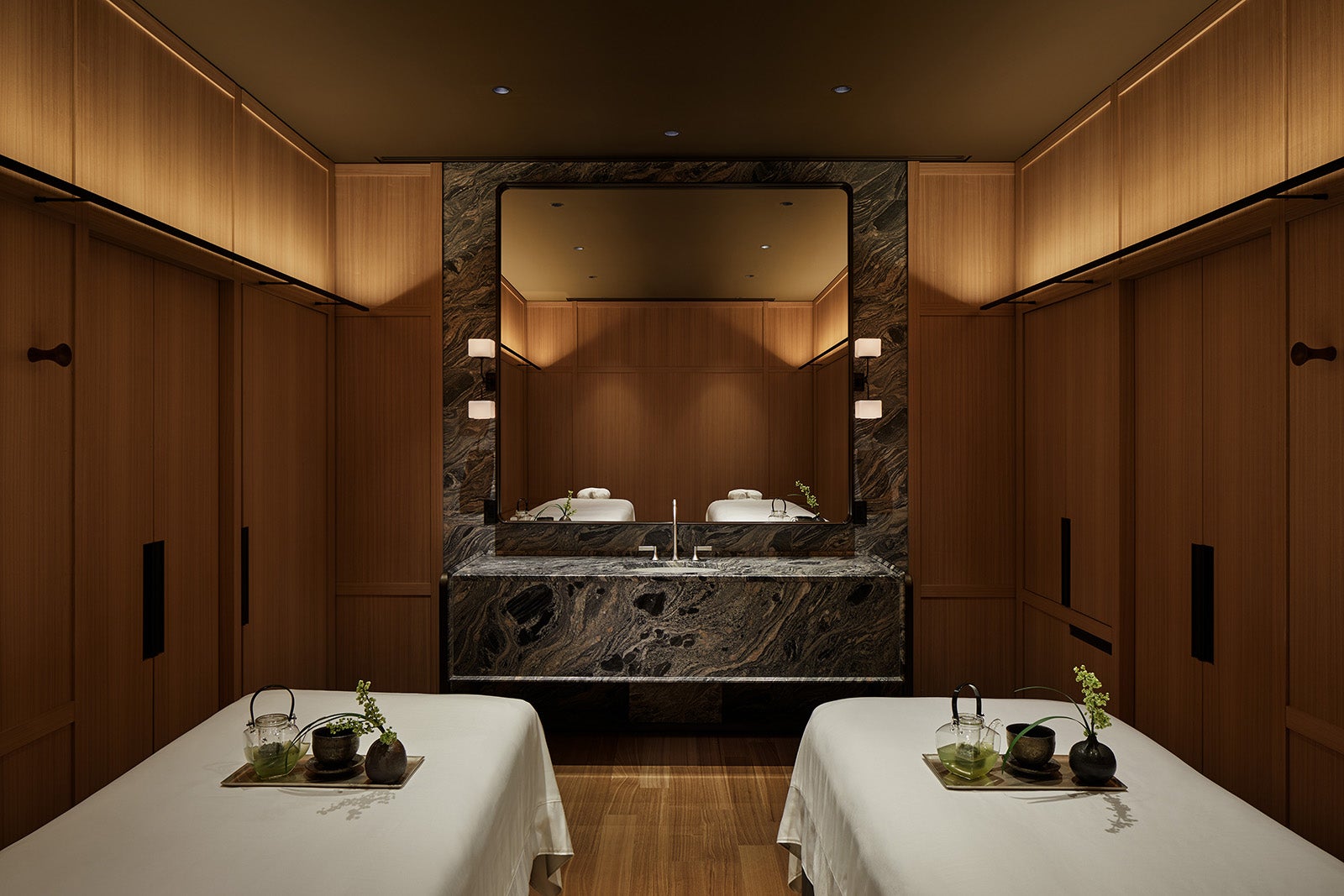
The spa on the hotel’s third floor offers a mix of traditional spa treatments as well as Japanese rituals. The hotel’s signature spa experiences include a Kotoshina essential oil facial, though treatments can change seasonally. An 80-minute treatment facial was 35,000 yen ($230). An 80-minute facial using Kotoshina products is 30,000 yen ($196).
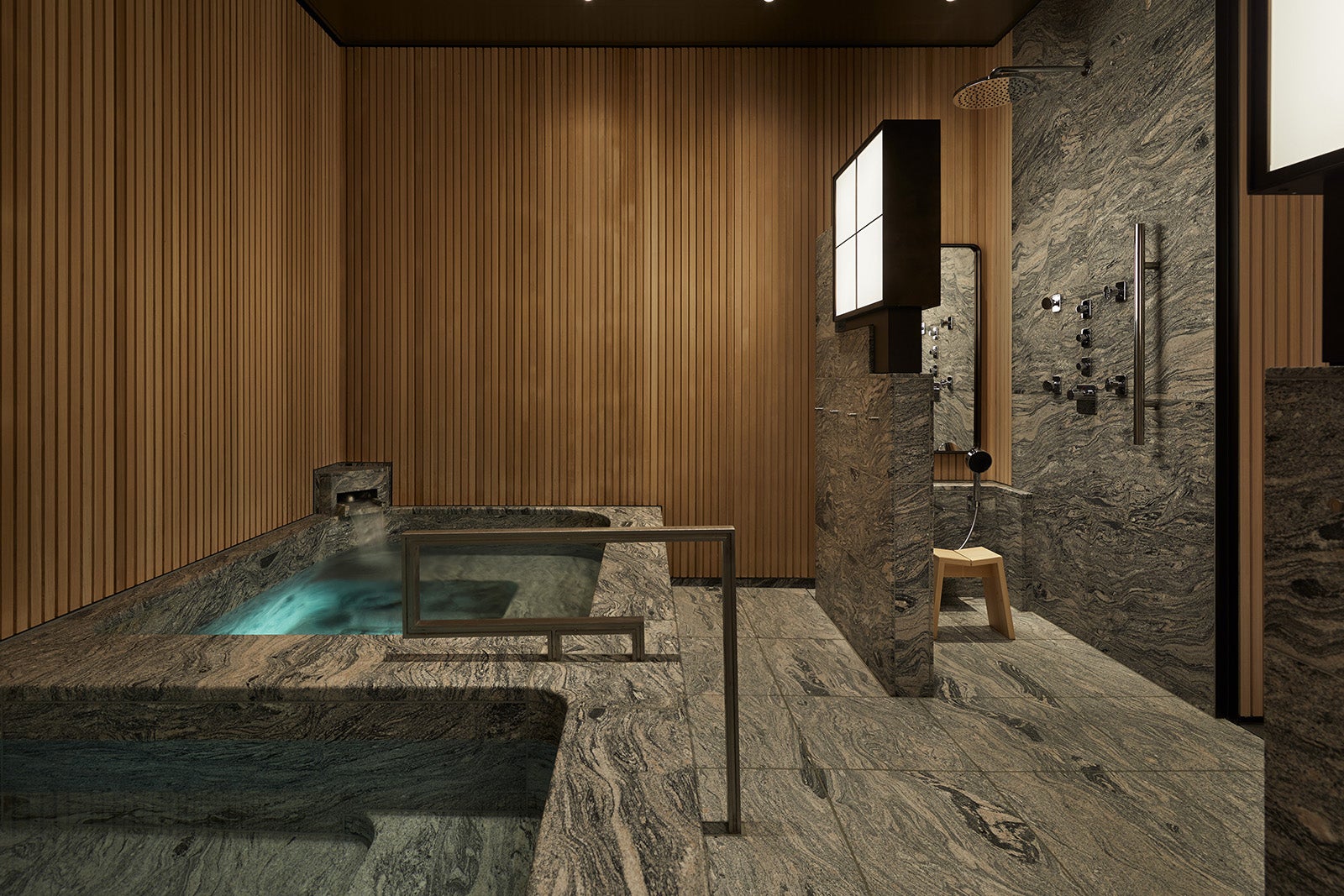
The Spiritual Bamboo treatment looked most interesting since it includes organic green tea oil combined with gliding bamboo to improve circulation and release tension (80 minutes for 30,000 yen or $196). But, many travelers probably opt for the hourlong jet lag remedy that also improves circulation and promotes a deep sleep (23,000 yen or $150).
The locker rooms contained changing areas and ofuro-style stone hot tubs for soaking, a cold plunge, a sauna and a steam room.
Out and about
Kyoto is a city that’s on nearly every “greatest hits” tour of Japan. We stayed five nights and didn’t see everything we wanted to. Don’t miss it, even if you can stay for only two or three nights.
Opt for the following if you only have time to see a few things near the hotel.
Higashiyama is the historic district that comprises the immediate area around Park Hyatt Kyoto. Ryozen Kannon Temple, with its 24-meter-high Buddha statue, is just a few minutes walk away, so don’t miss it.
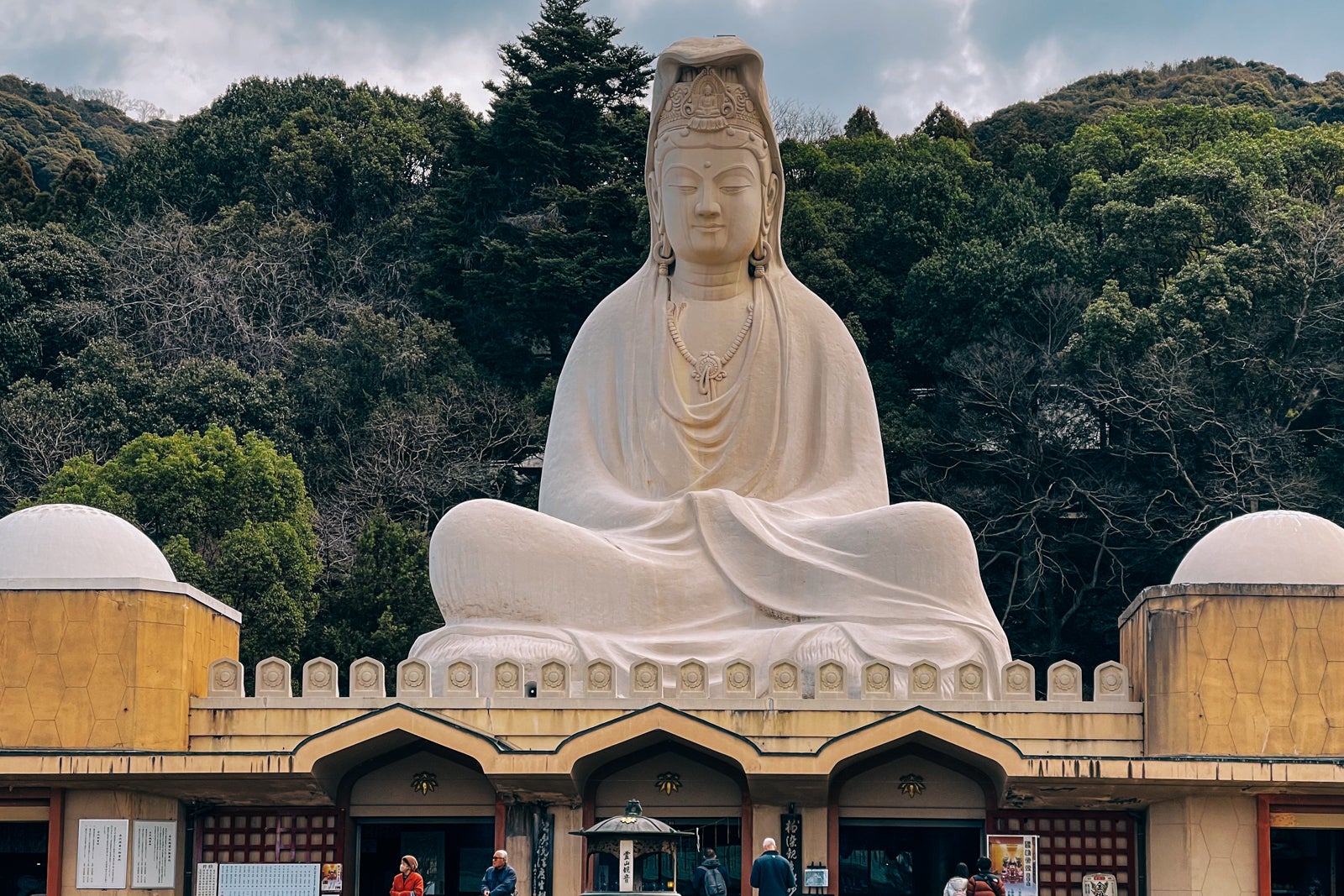
The Zen Buddhist temple Kodai-ji is 0.3 miles from the hotel; Kiyomizu-dera Temple is a bit farther, at half a mile.
The Yasaka Shinto shrine in the Gion district is a nine-minute walk from the hotel. It’s the pagoda you can see from many guest rooms and the hotel’s signature restaurant, Yasaka.
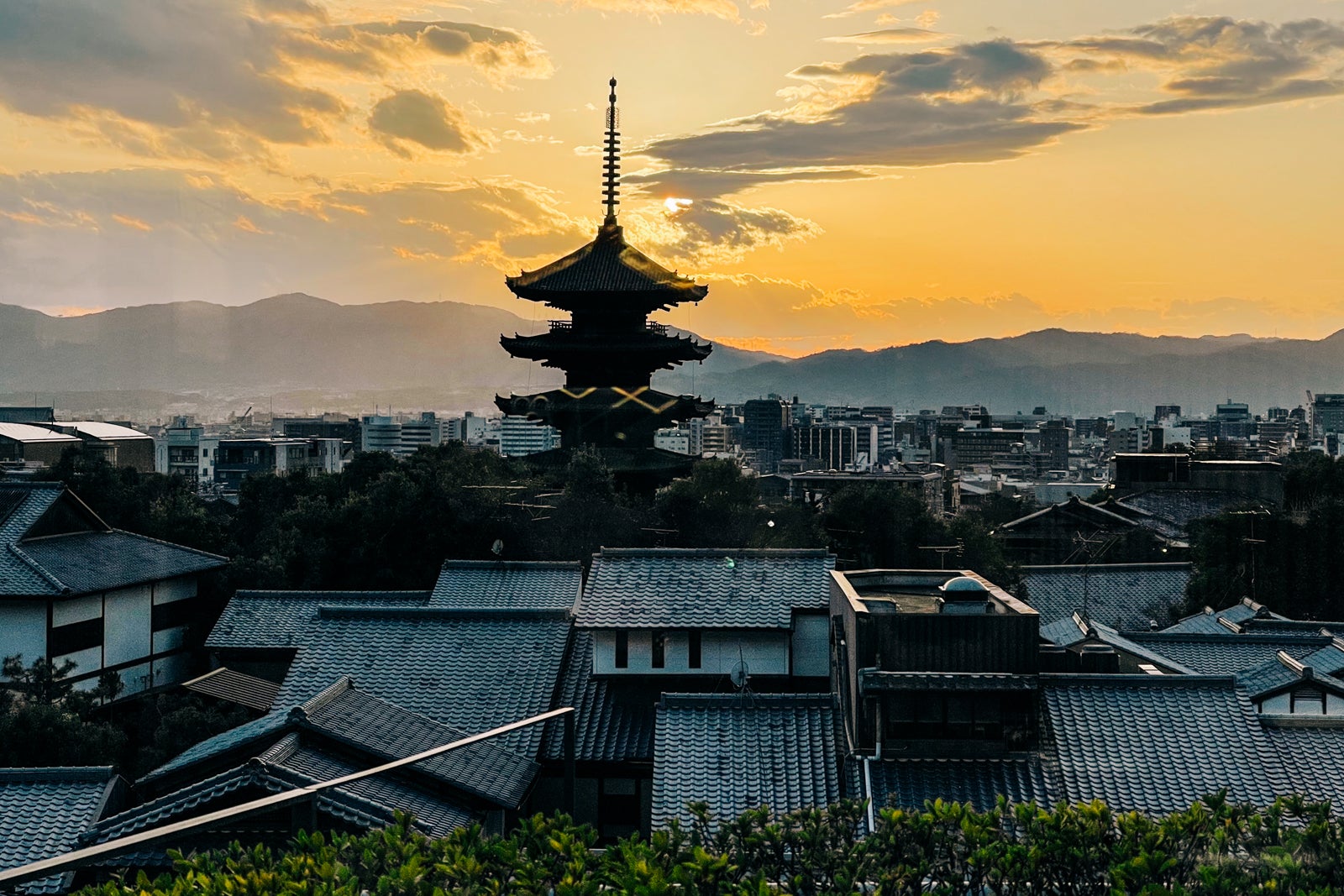
Finally, visit the following streets to get a true taste of Kyoto while snapping some Insta-worthy photos:
- Ichinen-zaka (townhouses line this picturesque cobblestone alley)
- Ninen-zaka (for cafes, restaurants and gift shops)
- Sannen-zaka (for ceramics, other souvenirs and restaurants)
- The pedestrian-only Nene-no-Michi (the perfect place to see cherry trees in bloom each spring)
- Ishibe-koji Alley (one of Kyoto’s most recognizable streets, which is lined with restaurants, bars and inns)
- Hanami Koji Street (in Gion where you may see a maiko or geiko in the evenings)
If you have more time to explore Kyoto, add these places to your itinerary:
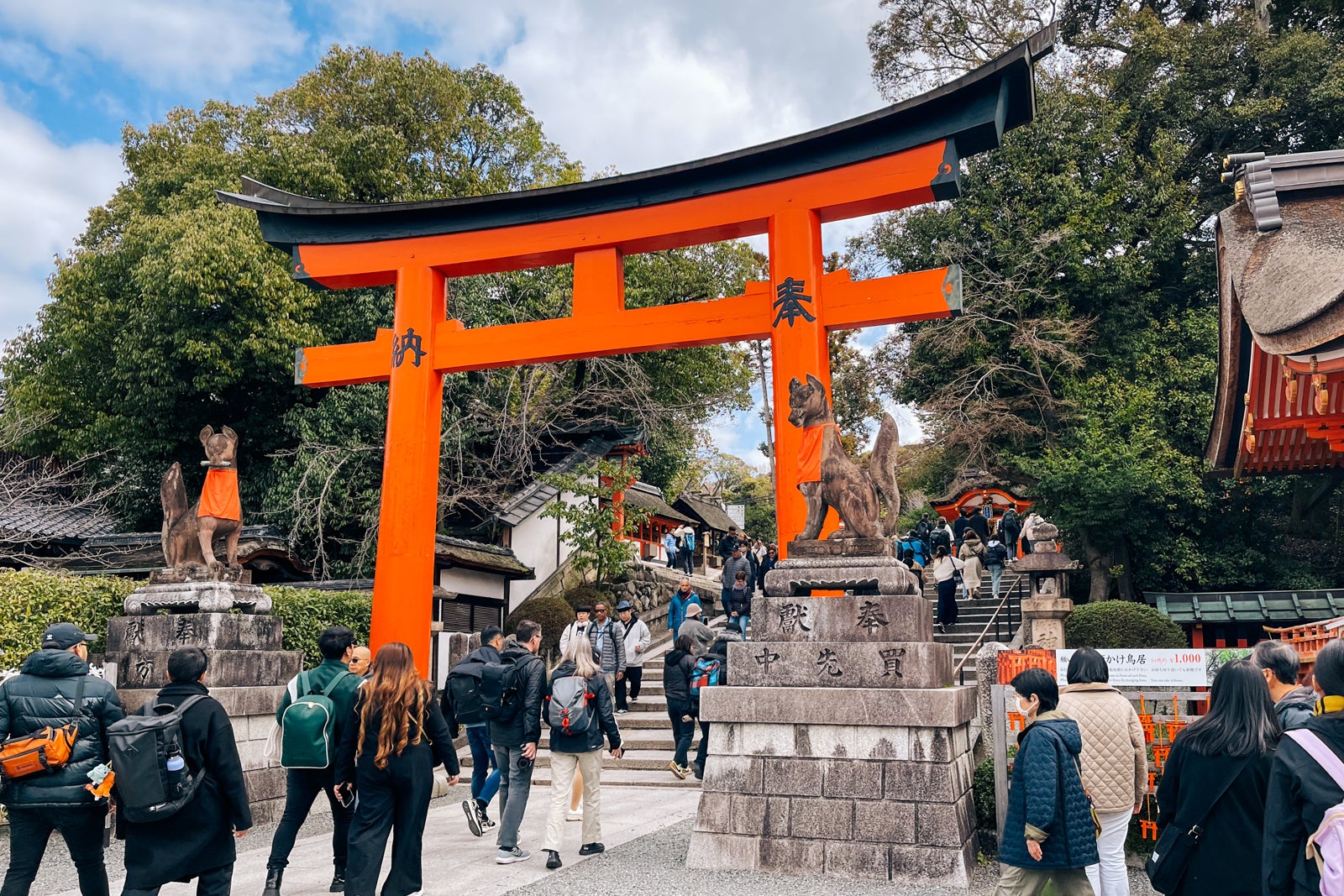
- Fushimi Inari Taisha Shinto shrine (home to thousands of orange torii gates)
- Arashiyama Bamboo Forest
- Gion District (where to see geisha in the evenings)
- Kinkaku-ji Zen Buddhist temple (Golden Pavilion)
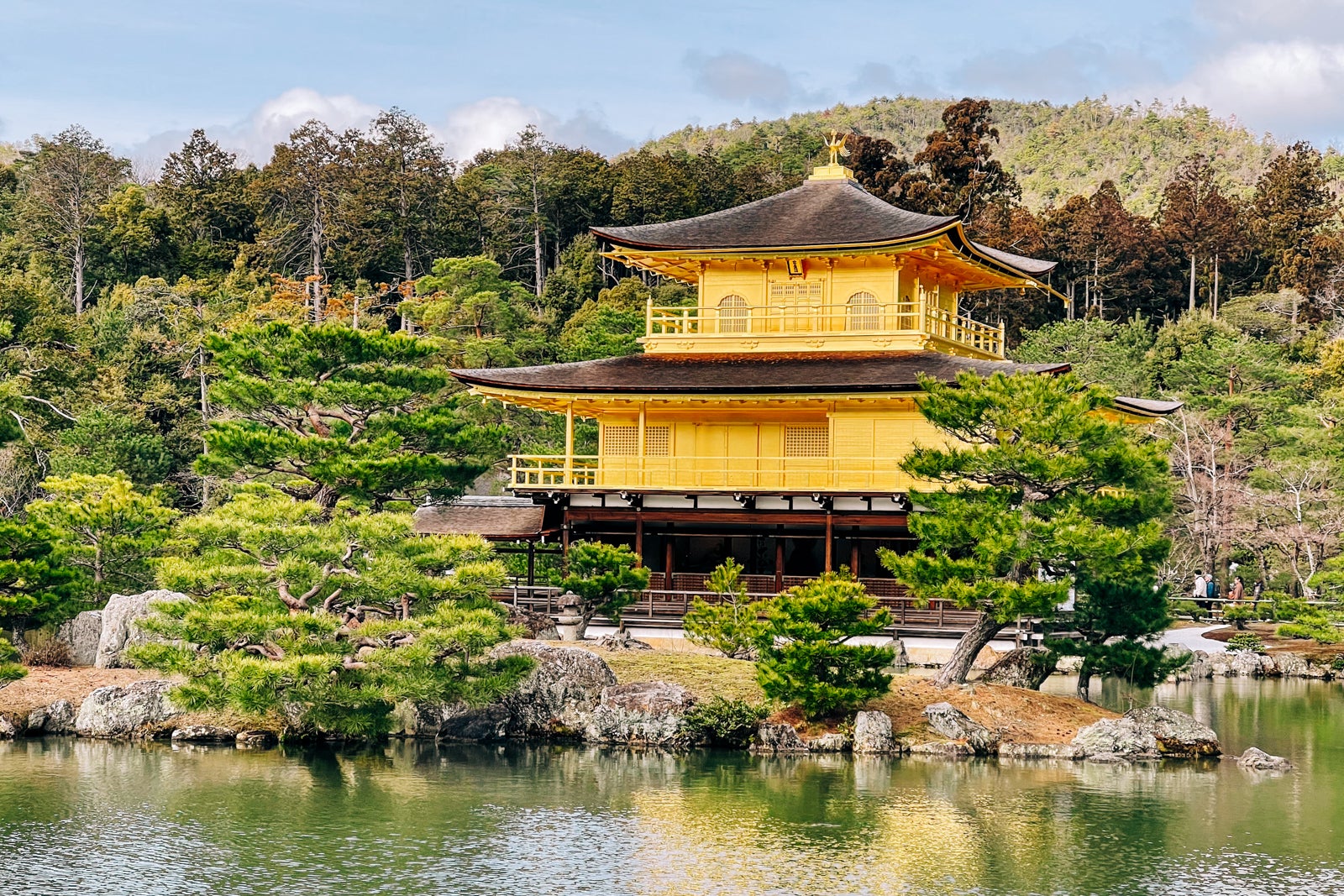
- Kyoto Imperial Palace
- Nijo Castle (palace of the shogun Tokugawa)
- Nishiki Market
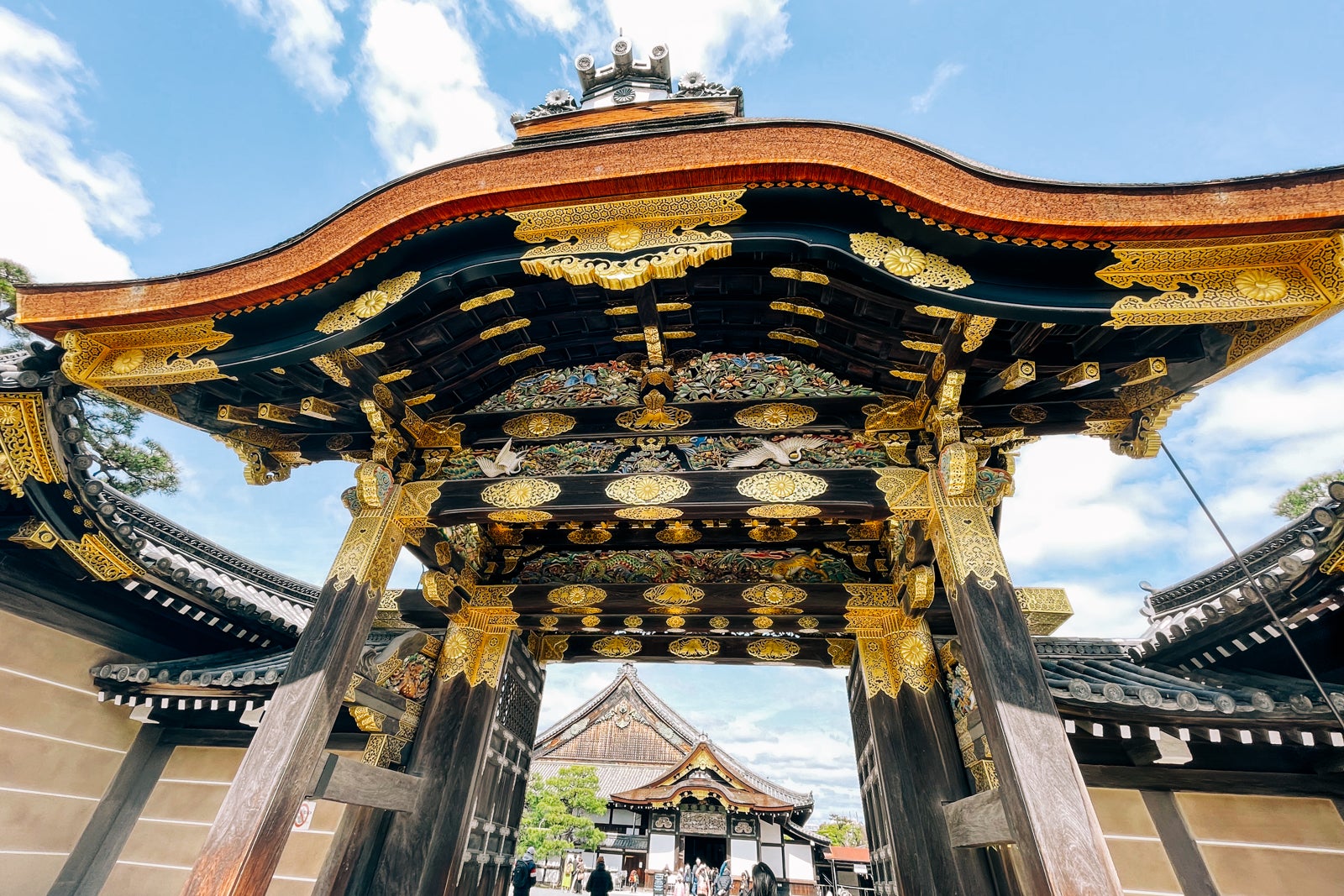
Accessibility
The hotel’s lobby, guest rooms, restaurants and spa area are accessible for people who use a wheelchair, scooter, walker or other assistive device. There are no stairs from the hotel driveway to the entrance, and you can easily access elevators, which have Braille blocks in front of them for reference.
Hallways are wide, and there is an accessible room on the third floor that includes grab bars in the bathroom (shower/bath and toilet areas). Note that the bathroom does accommodate a wheelchair but does not have a roll-under sink.
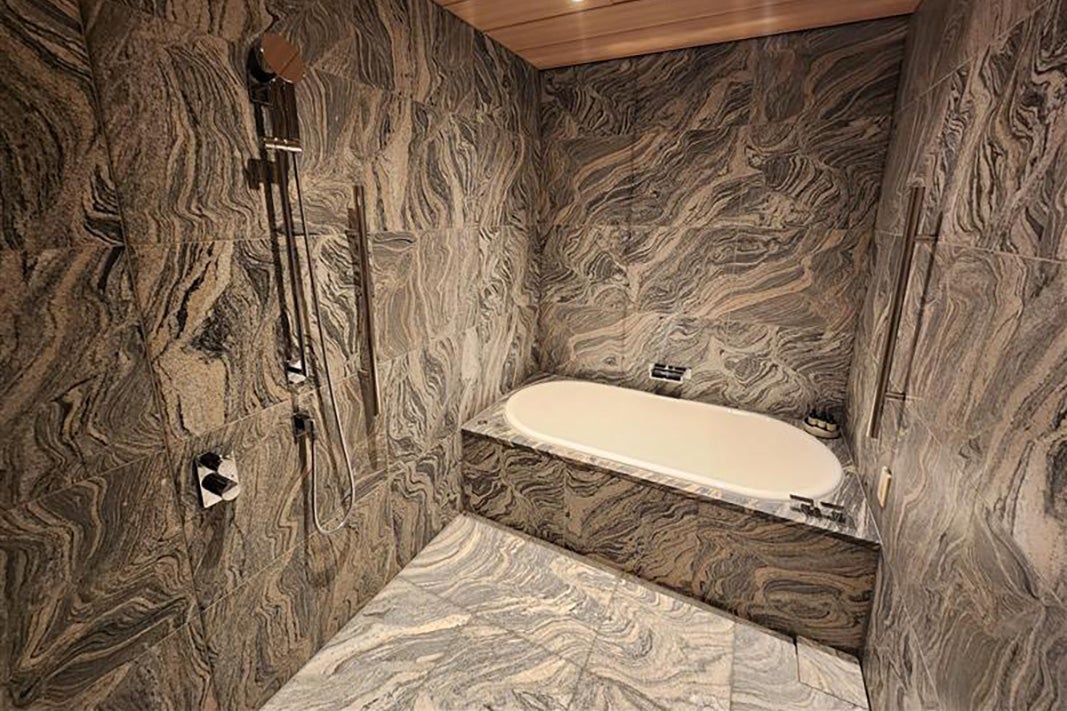
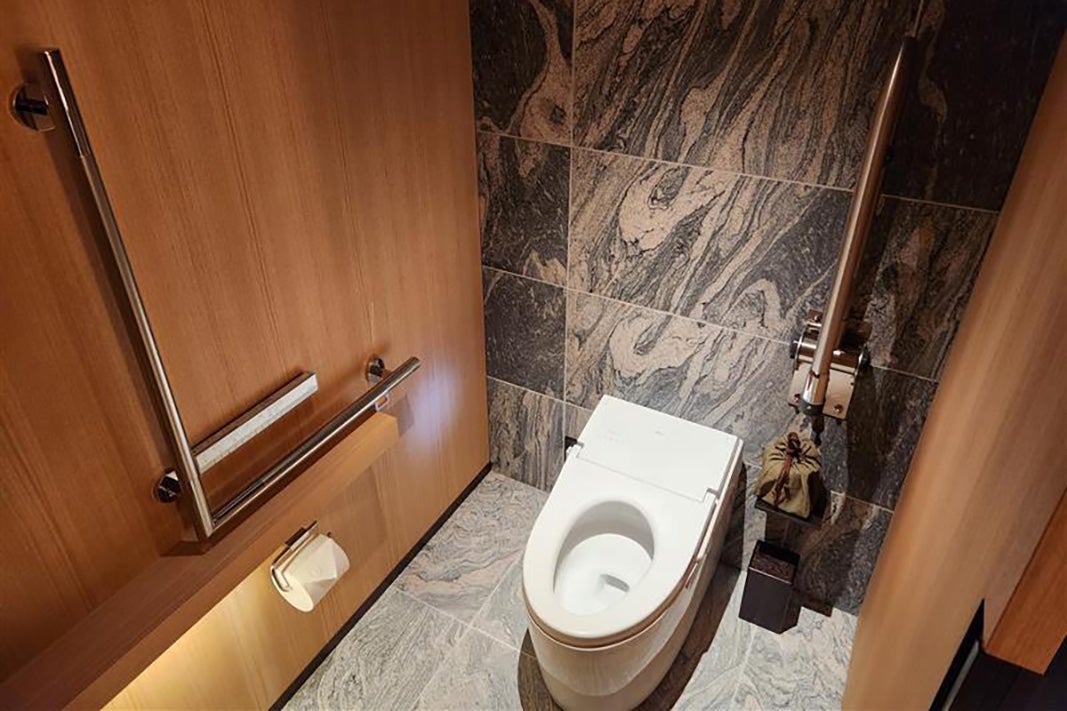
An SOS button in the bathroom and toilet room will light lamps inside and outside the room to alert others of an issue.
You can book an accessible room via Hyatt’s website or call Park Hyatt Kyoto directly at +81 3 6364 1348.
While the hotel may be accessible for individuals using a wheelchair, walker or cane, many parts of Kyoto are not. I don’t normally use an assistive device, but I did in Kyoto due to a knee issue. There are a lot of stairs, narrow alleyways and uneven walking surfaces (plenty with chiseled stone or gravel).
Checking out
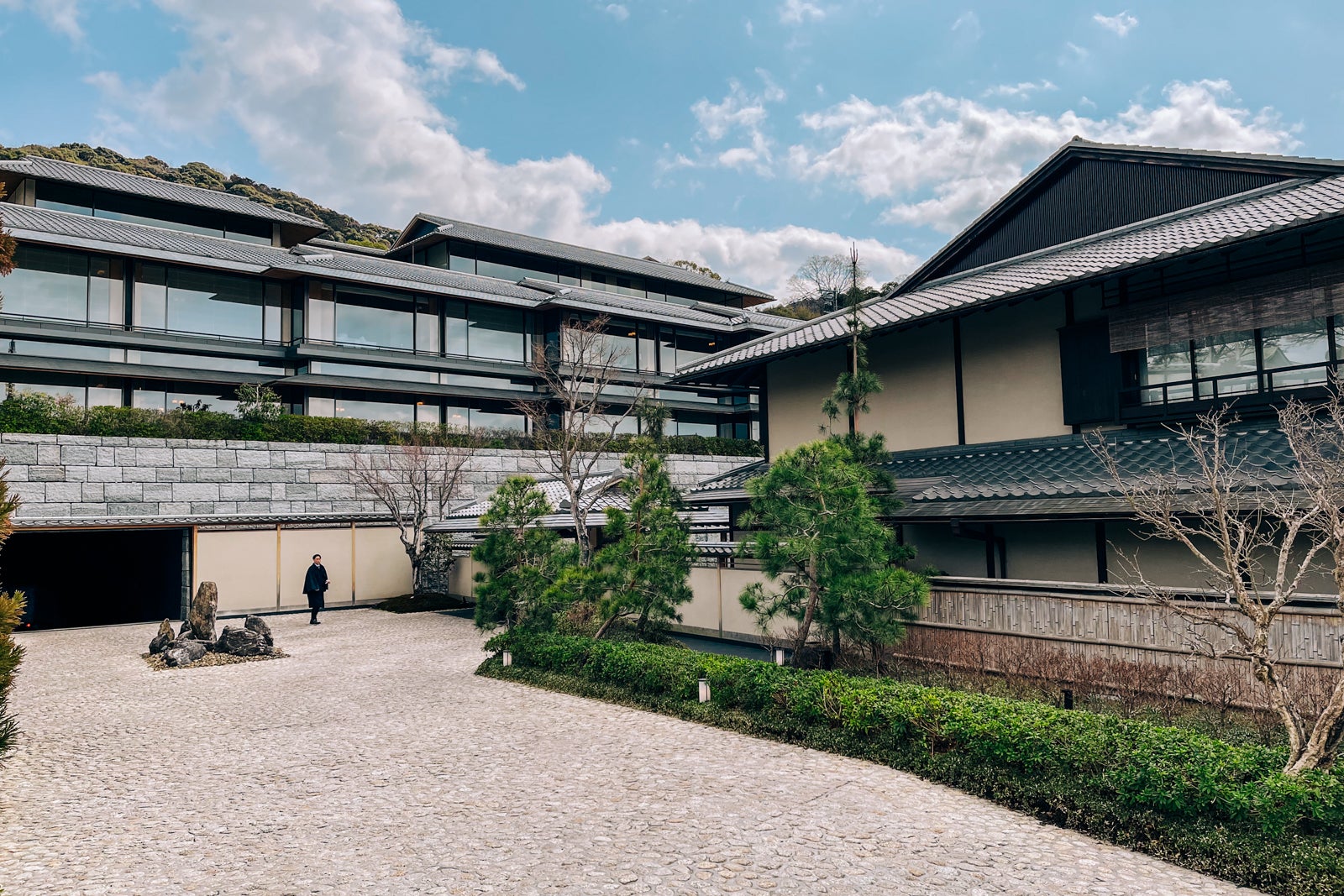
I honestly felt a bit misty as we made our way through Park Hyatt Kyoto’s lobby to check out. Our stay at this luxury hotel ranks as one of our top travel experiences. I wasn’t very motivated to leave and slowed my pace to take in the gorgeous lobby one last time.
As we stepped outside and walked through the rock garden toward the hotel’s portico, it started to snow. Living in Florida, I don’t see snow and was downright giddy due to this unexpected treat from Mother Nature. The snow against the cherry blossom buds was striking. As I laughed, bellhops dressed in voluminous robes raced toward us — umbrellas in hand — to escort us to our waiting taxi. It was a fairytale ending to an incredible few days at this very special hotel.
Related reading:


